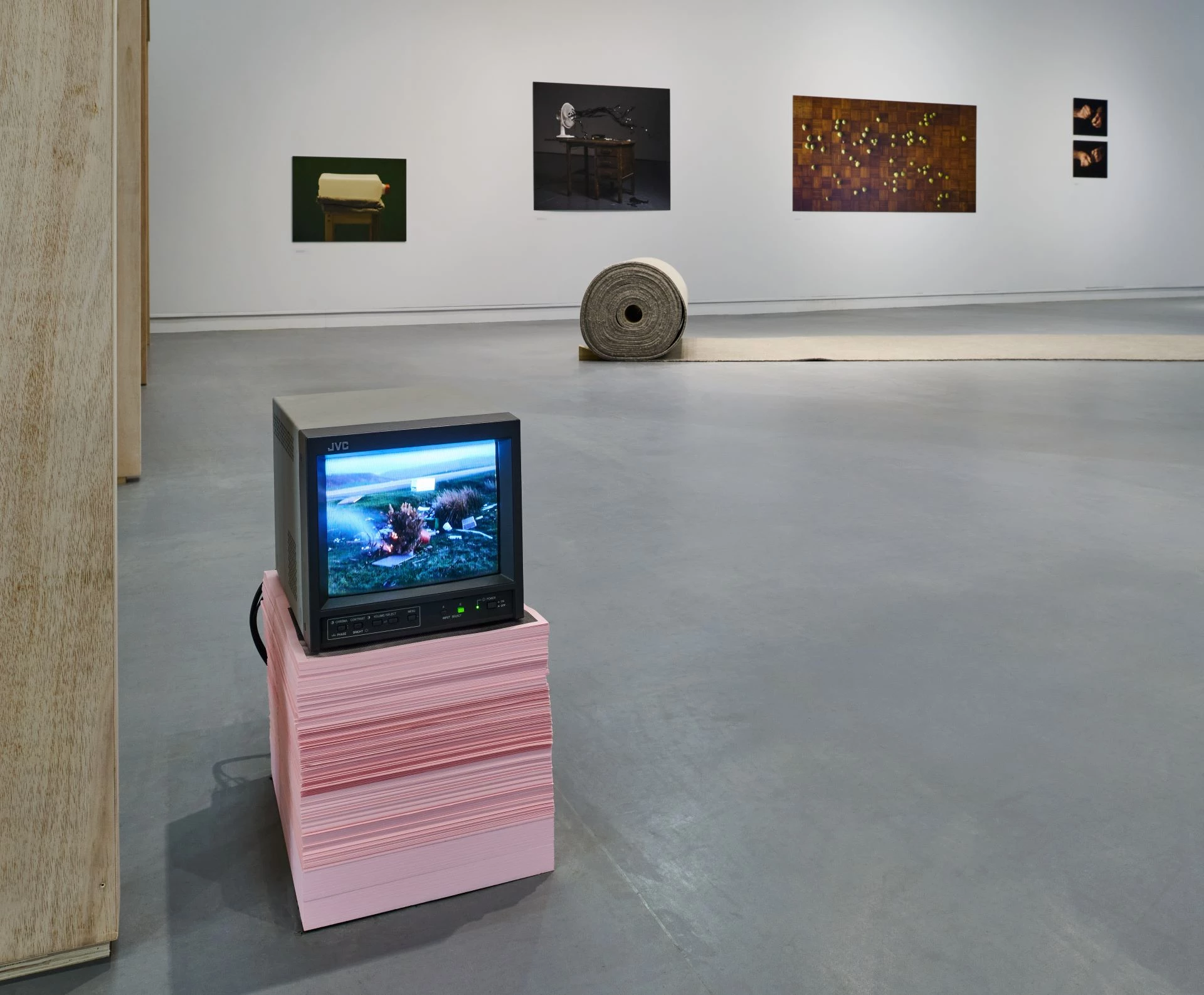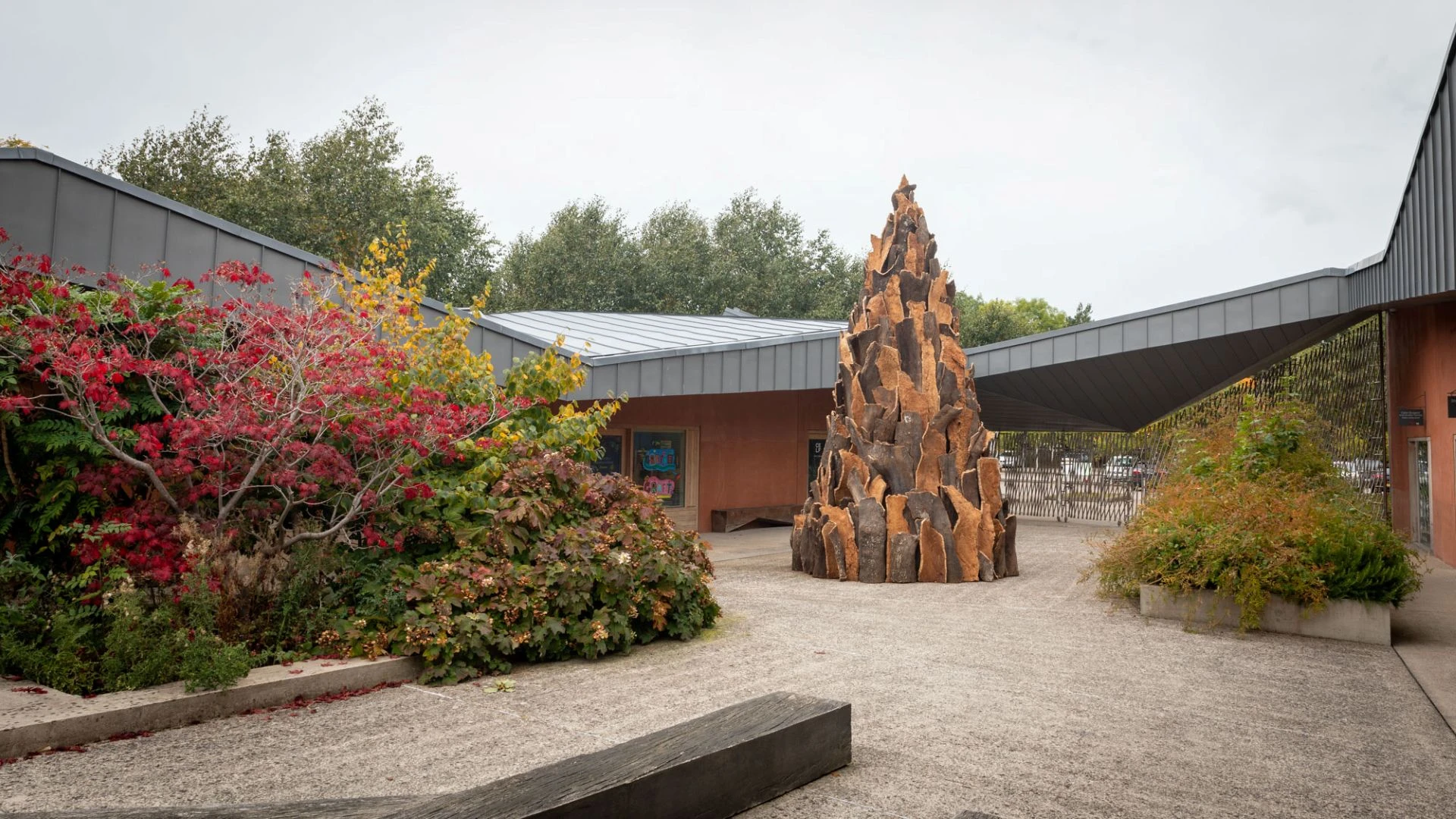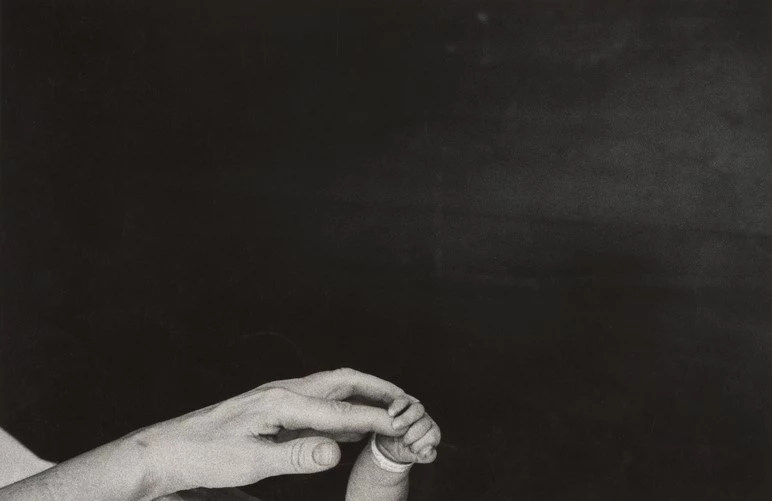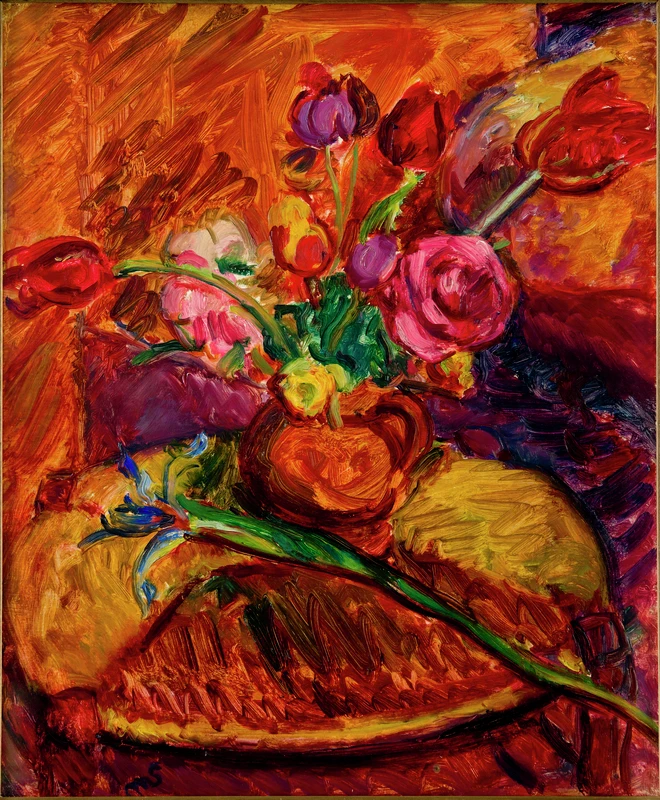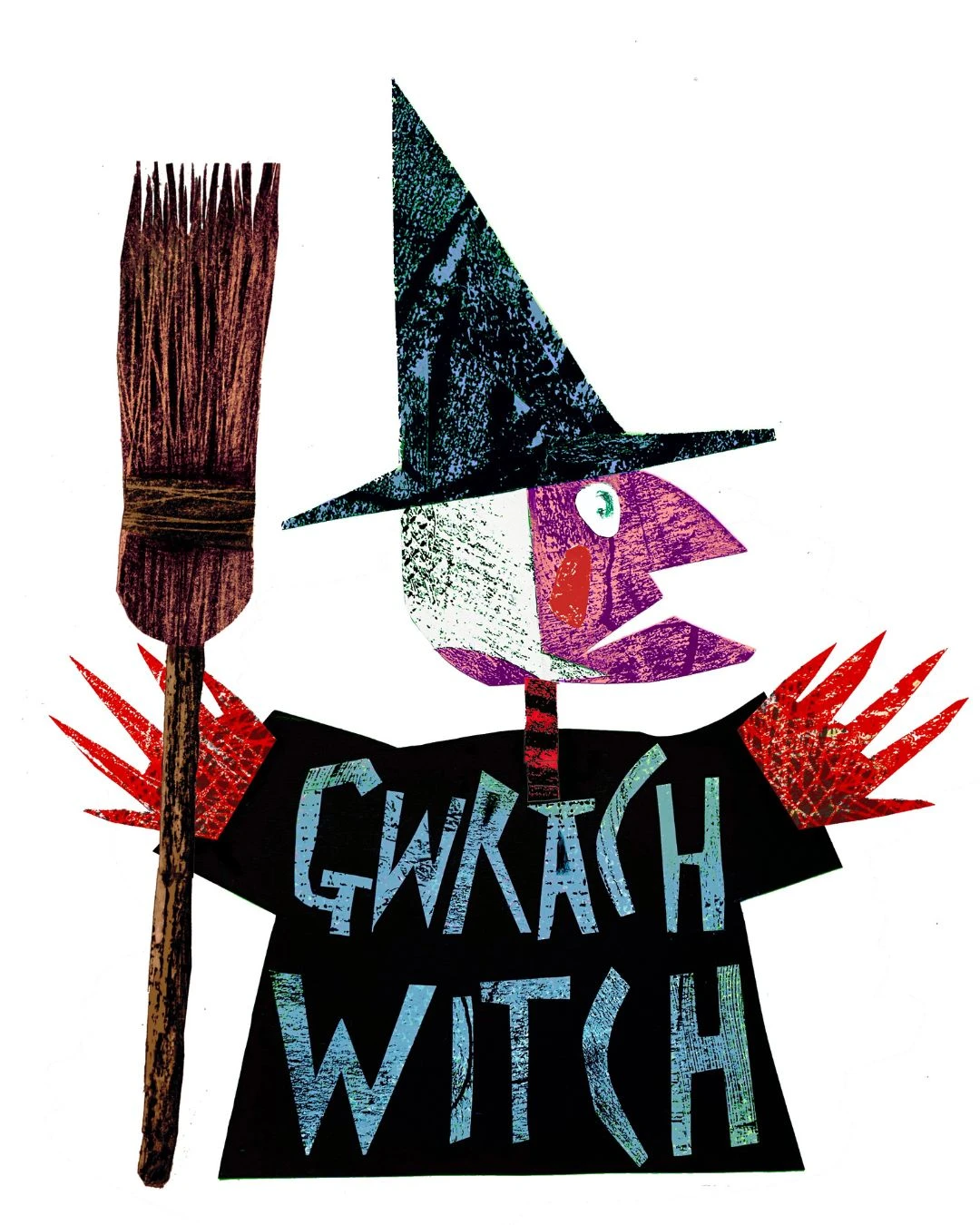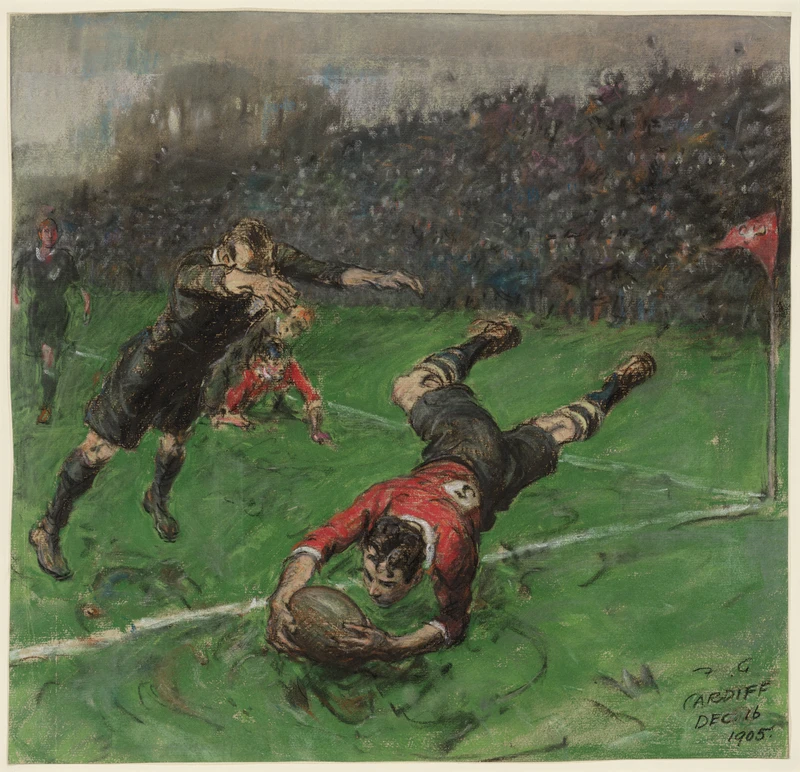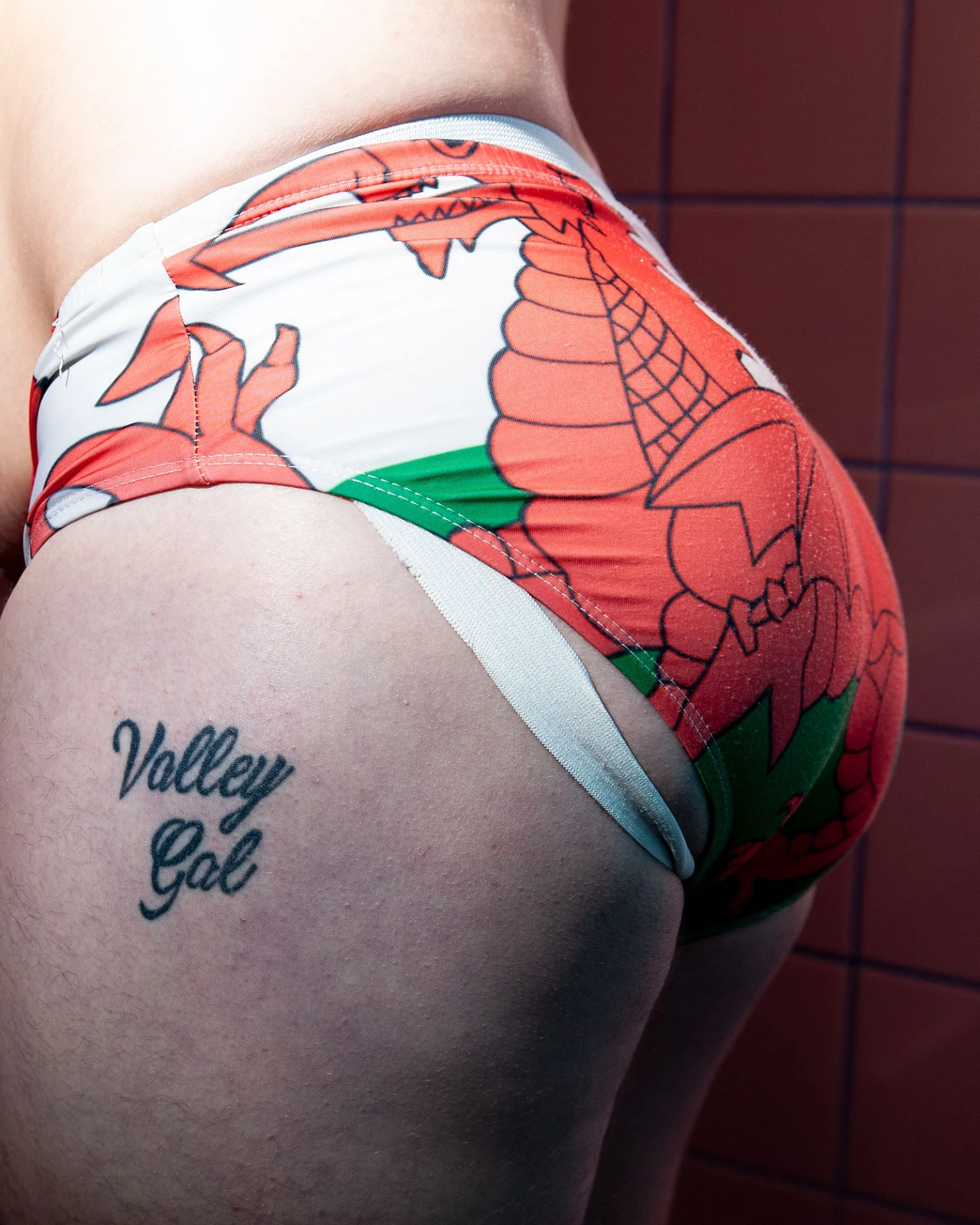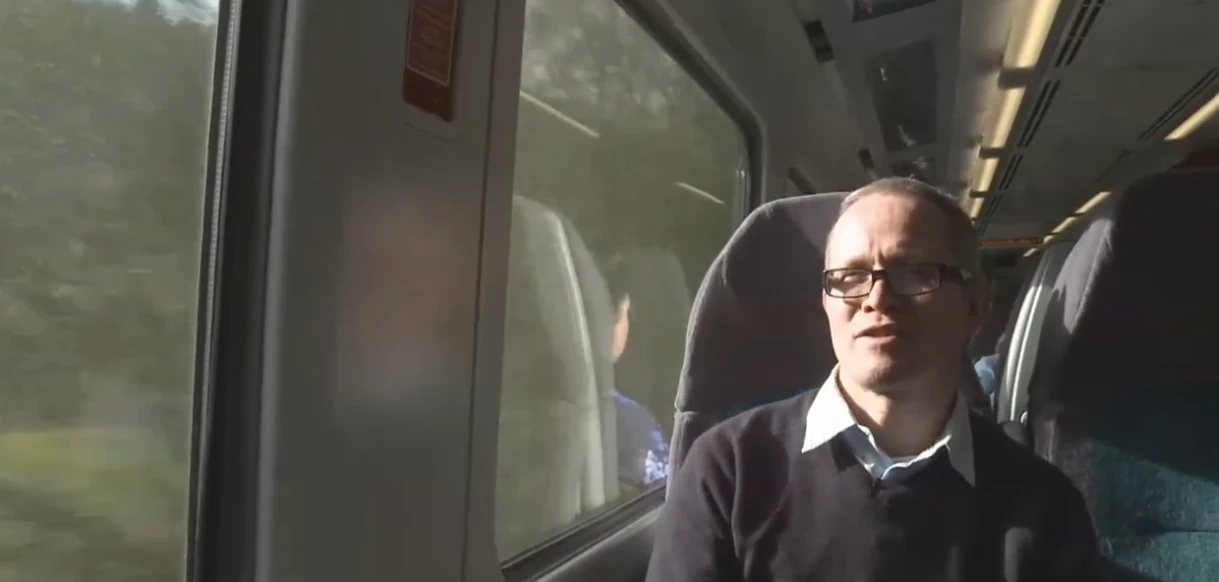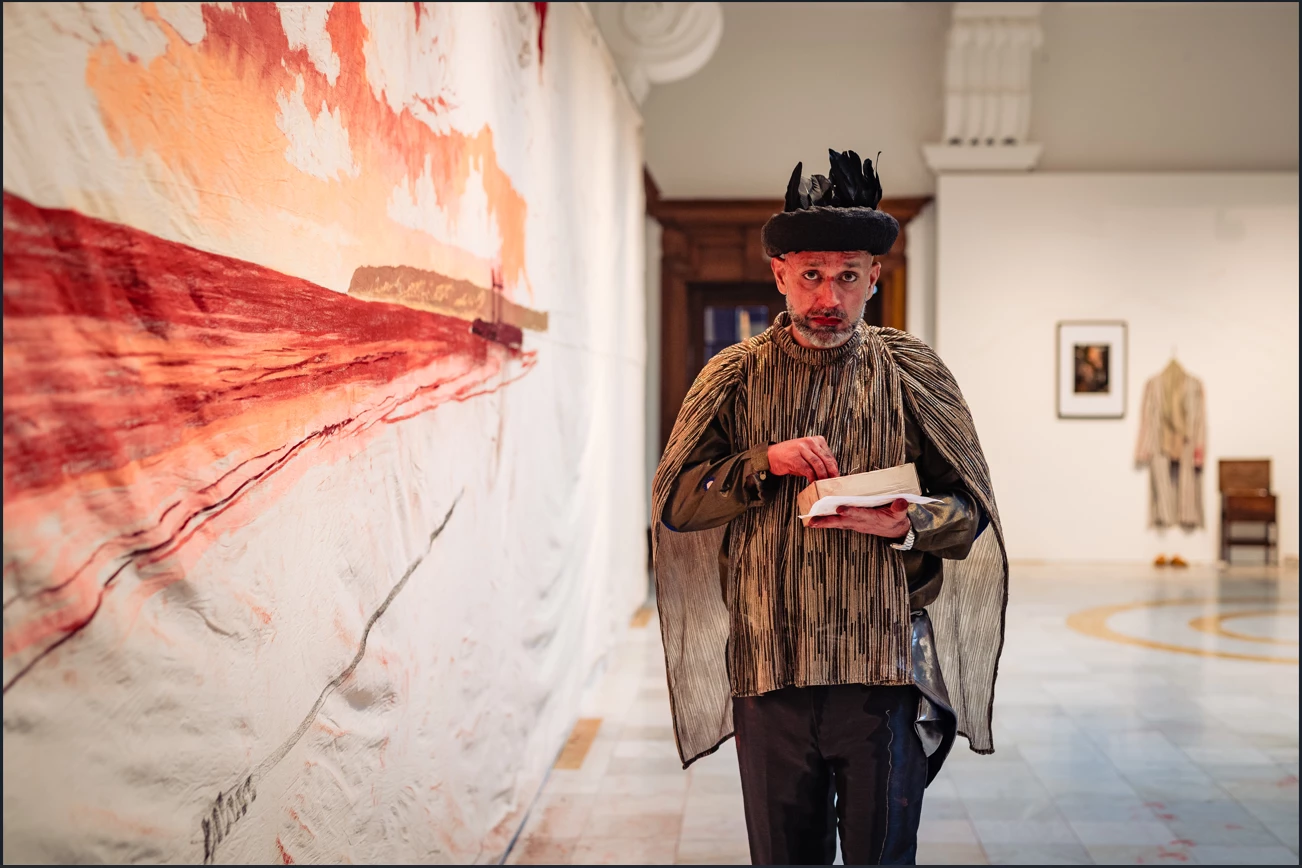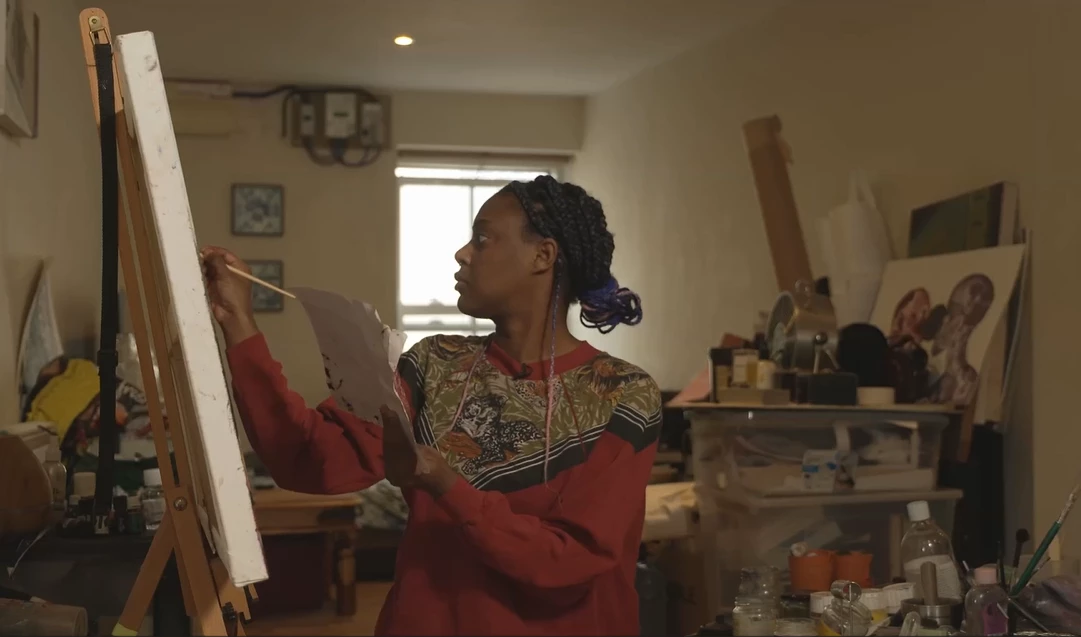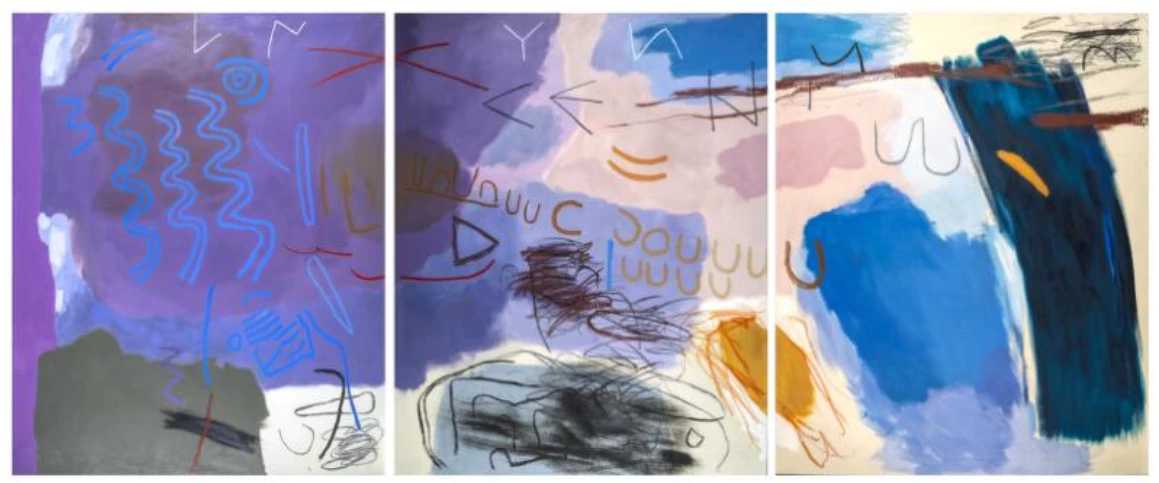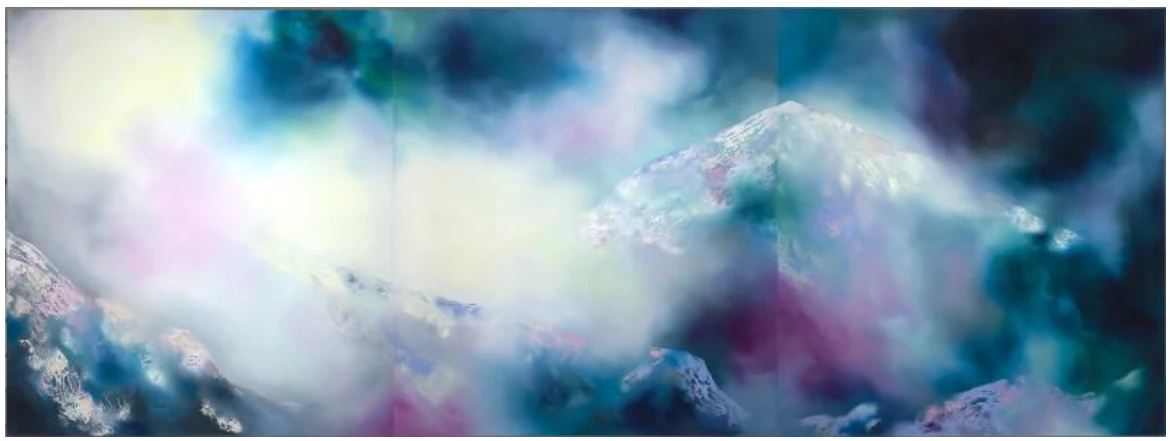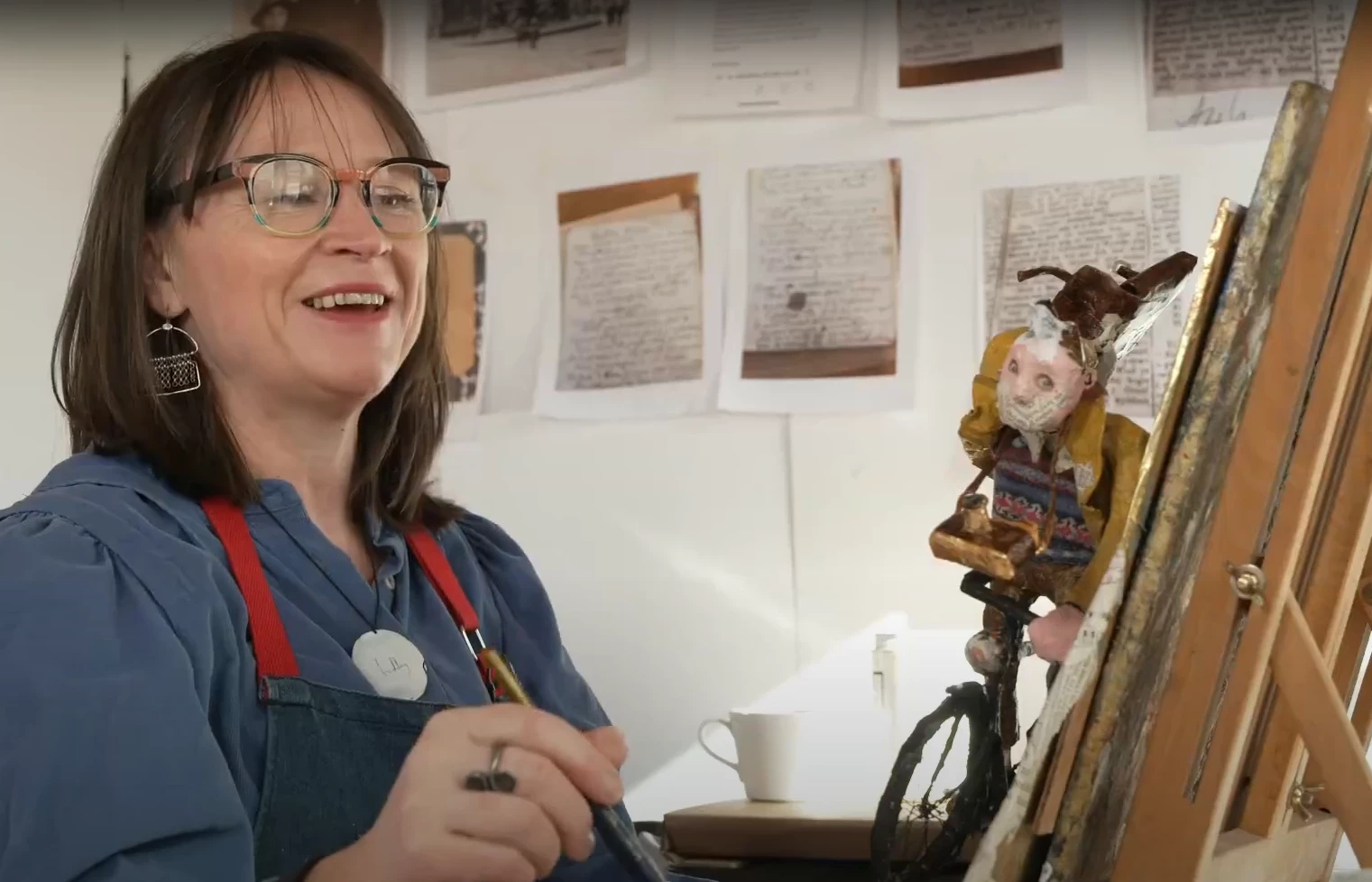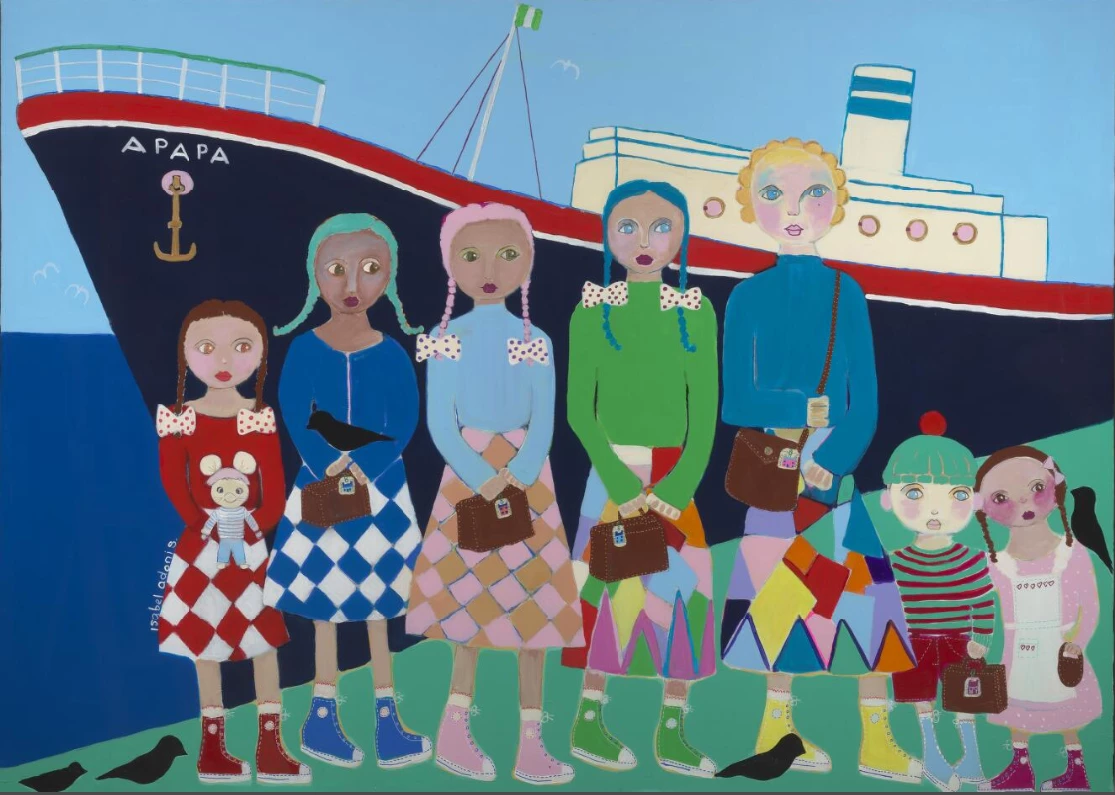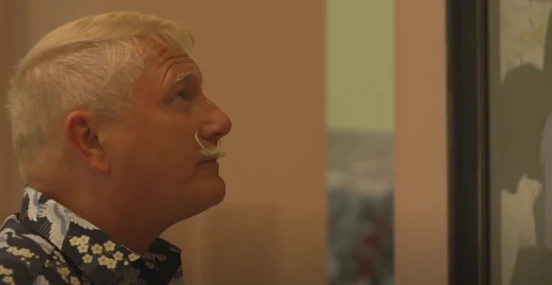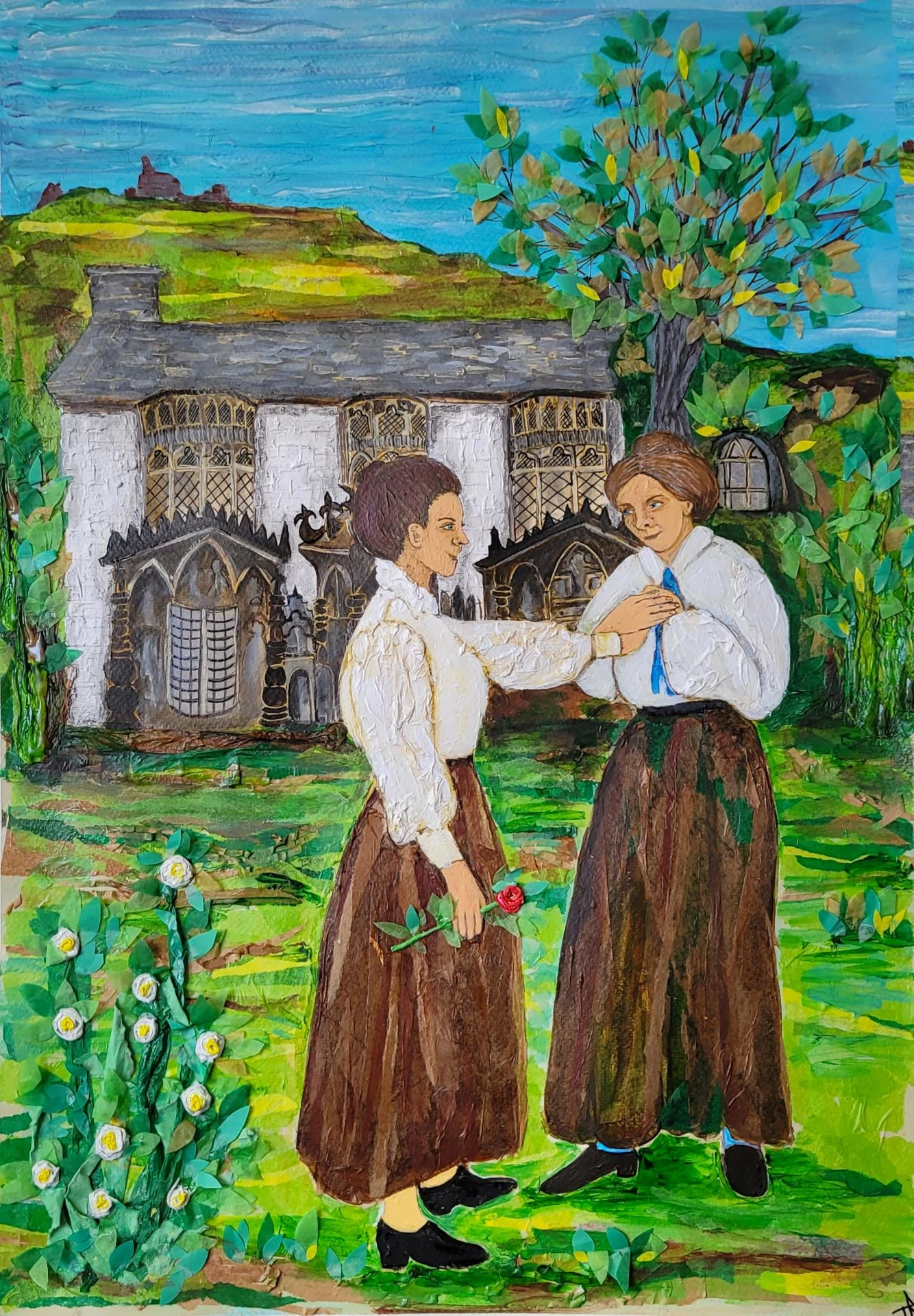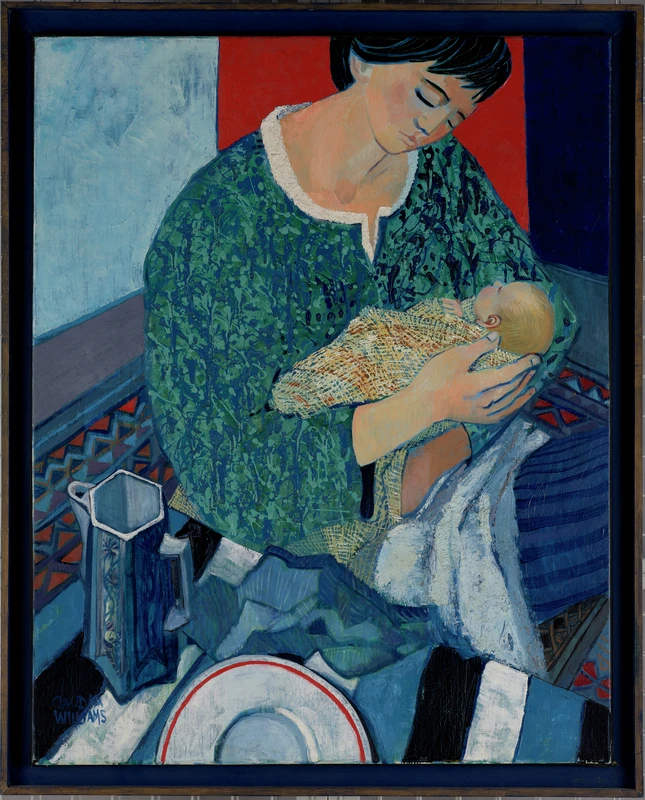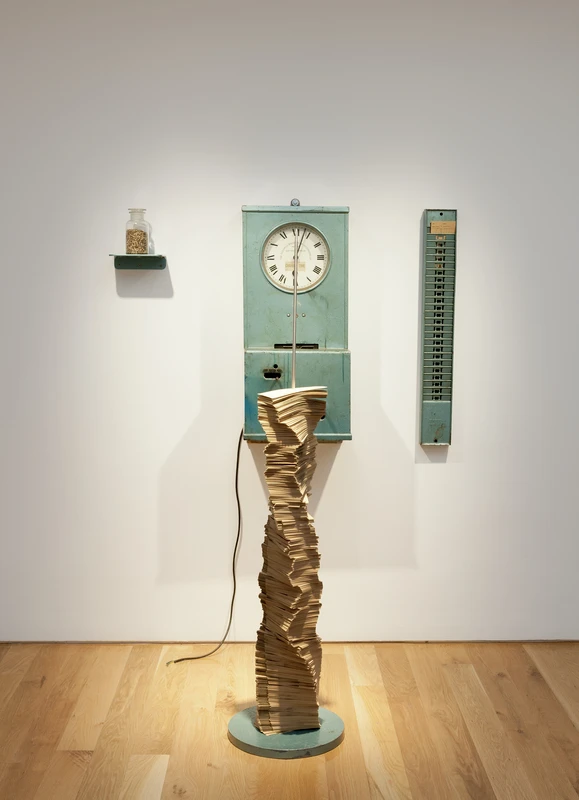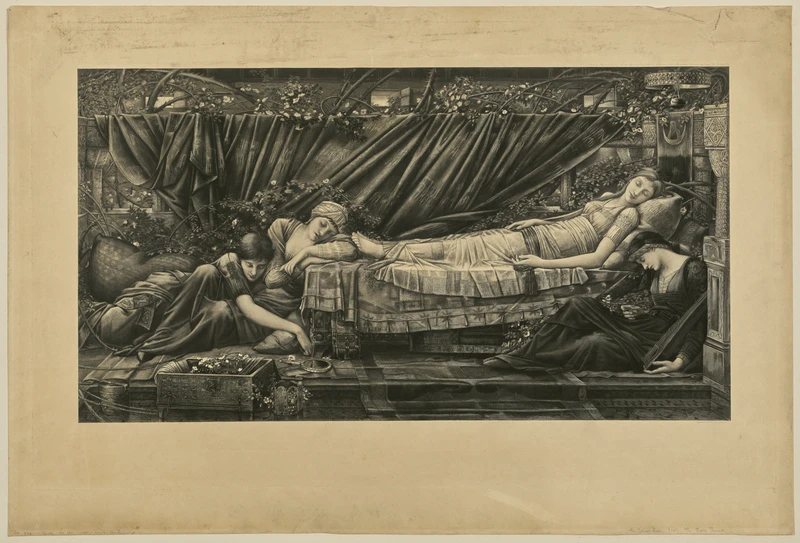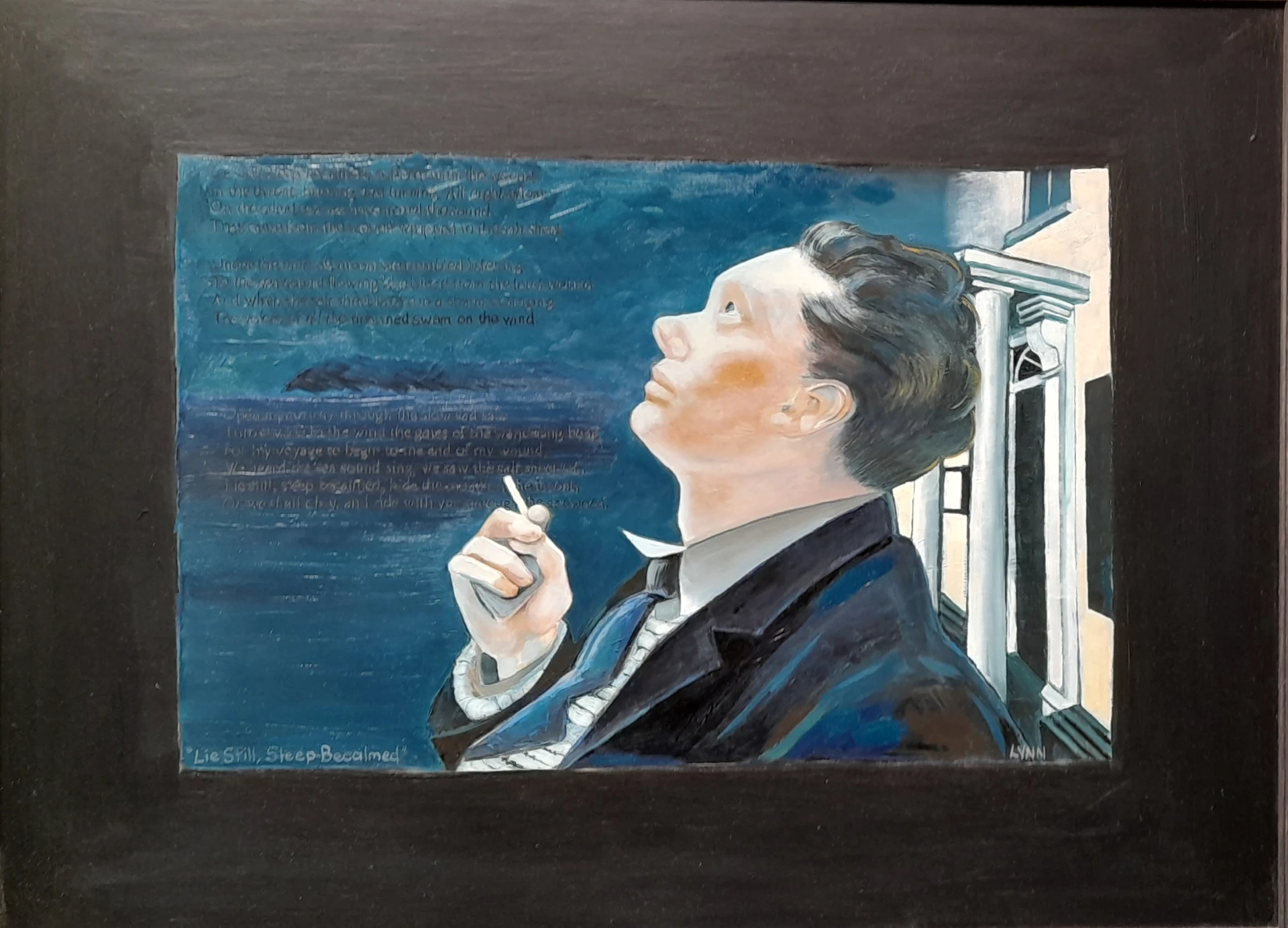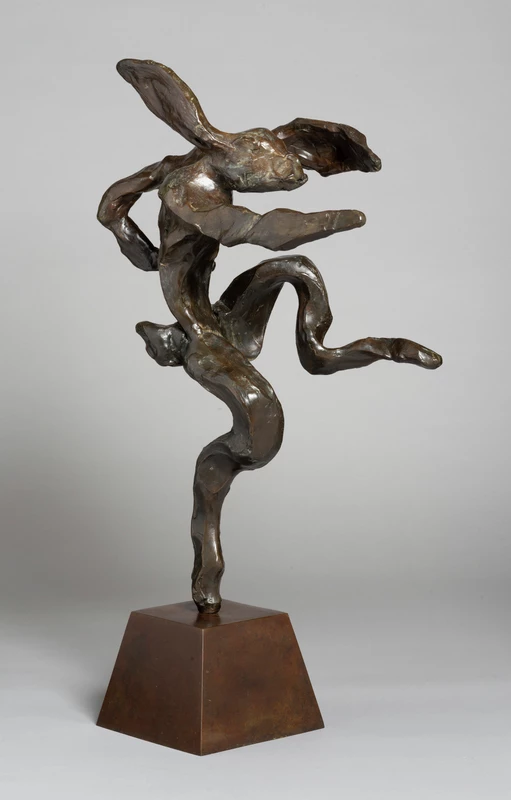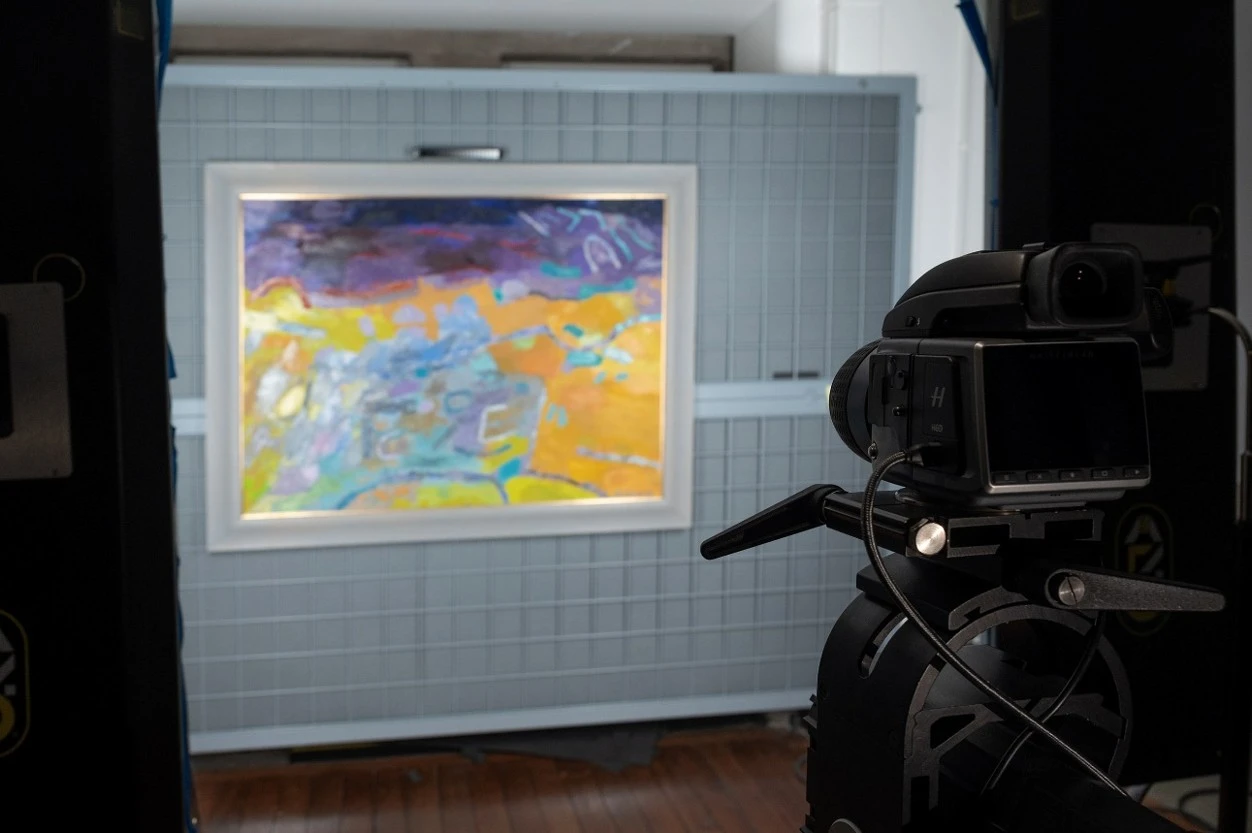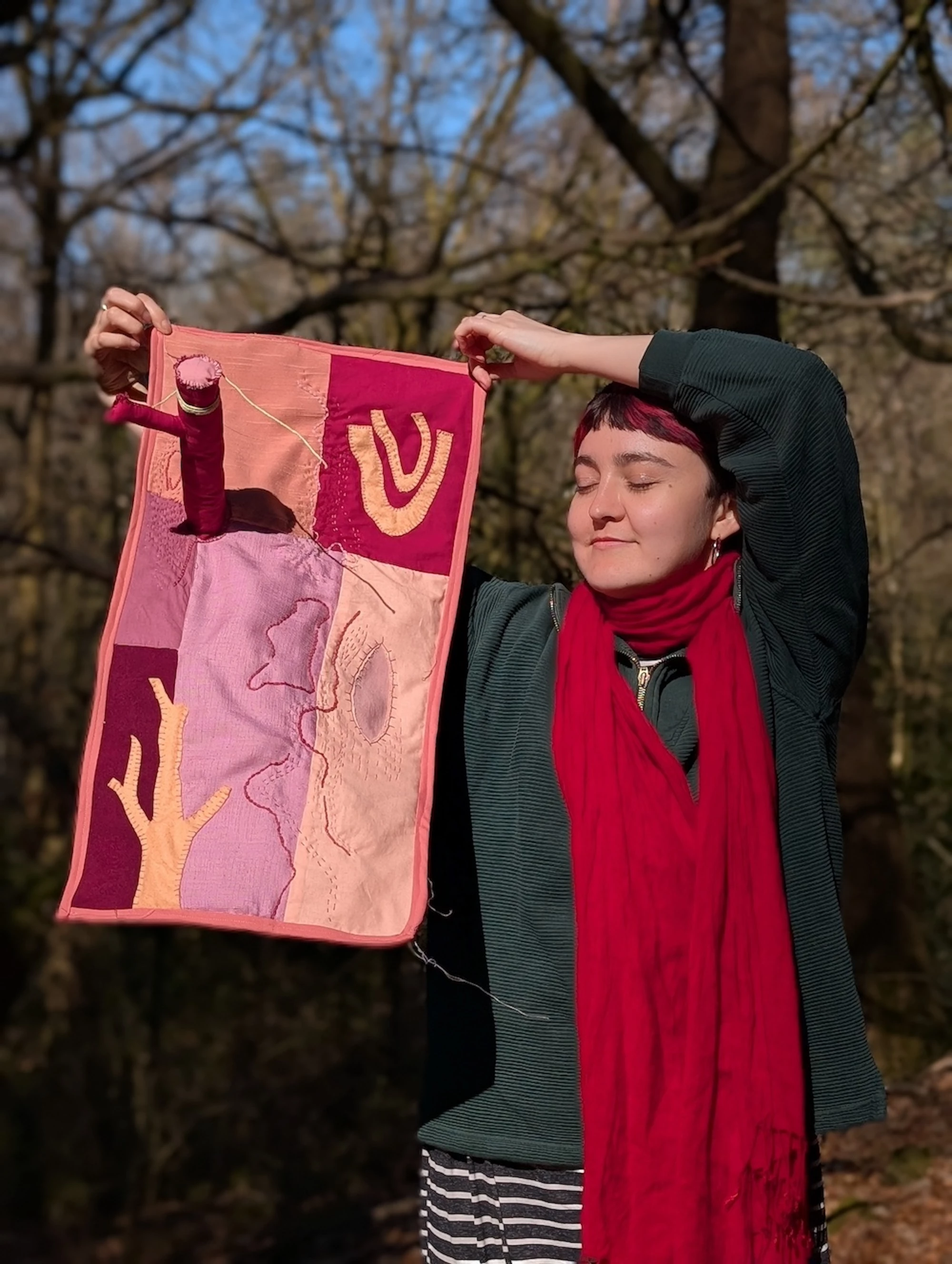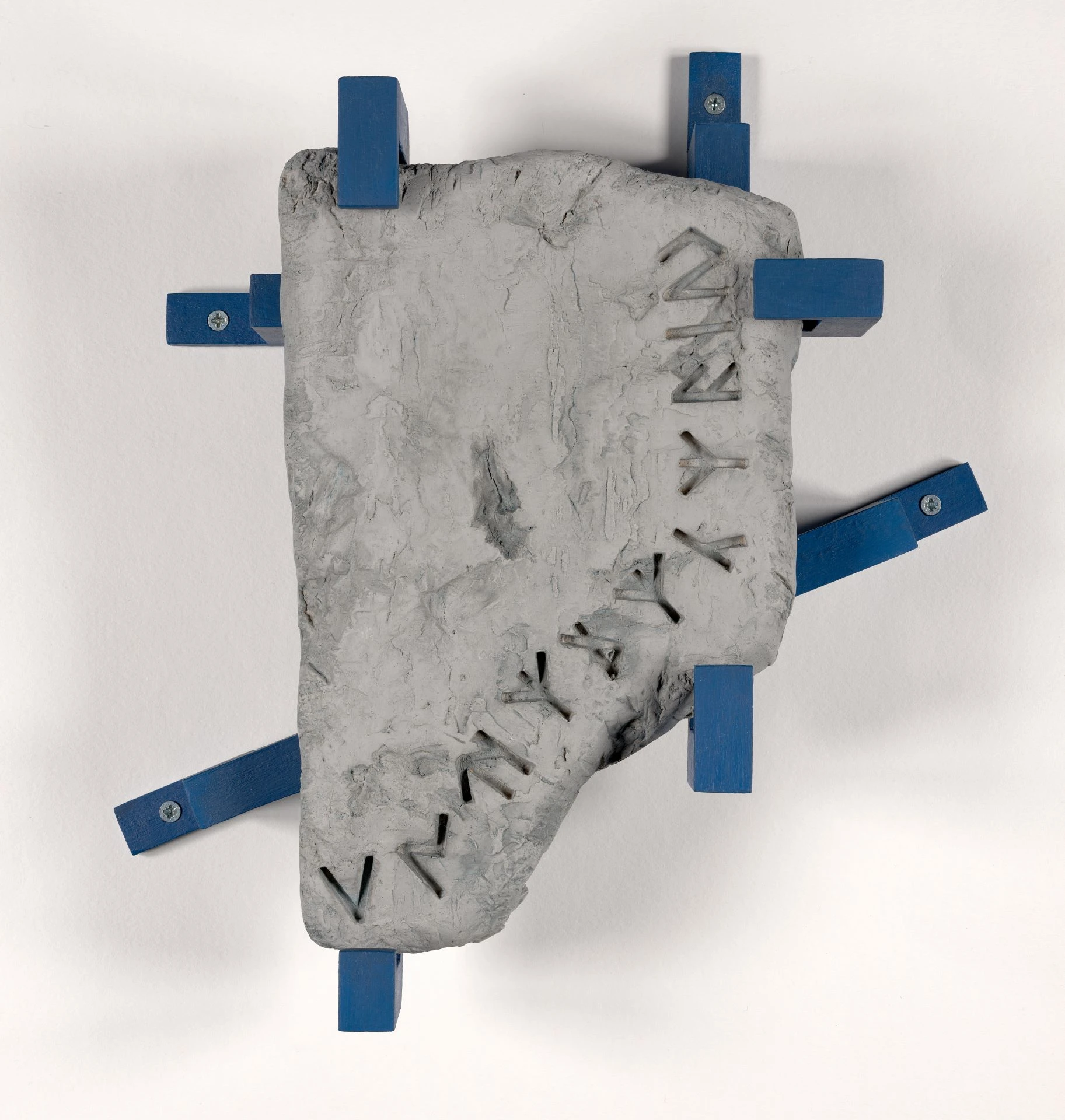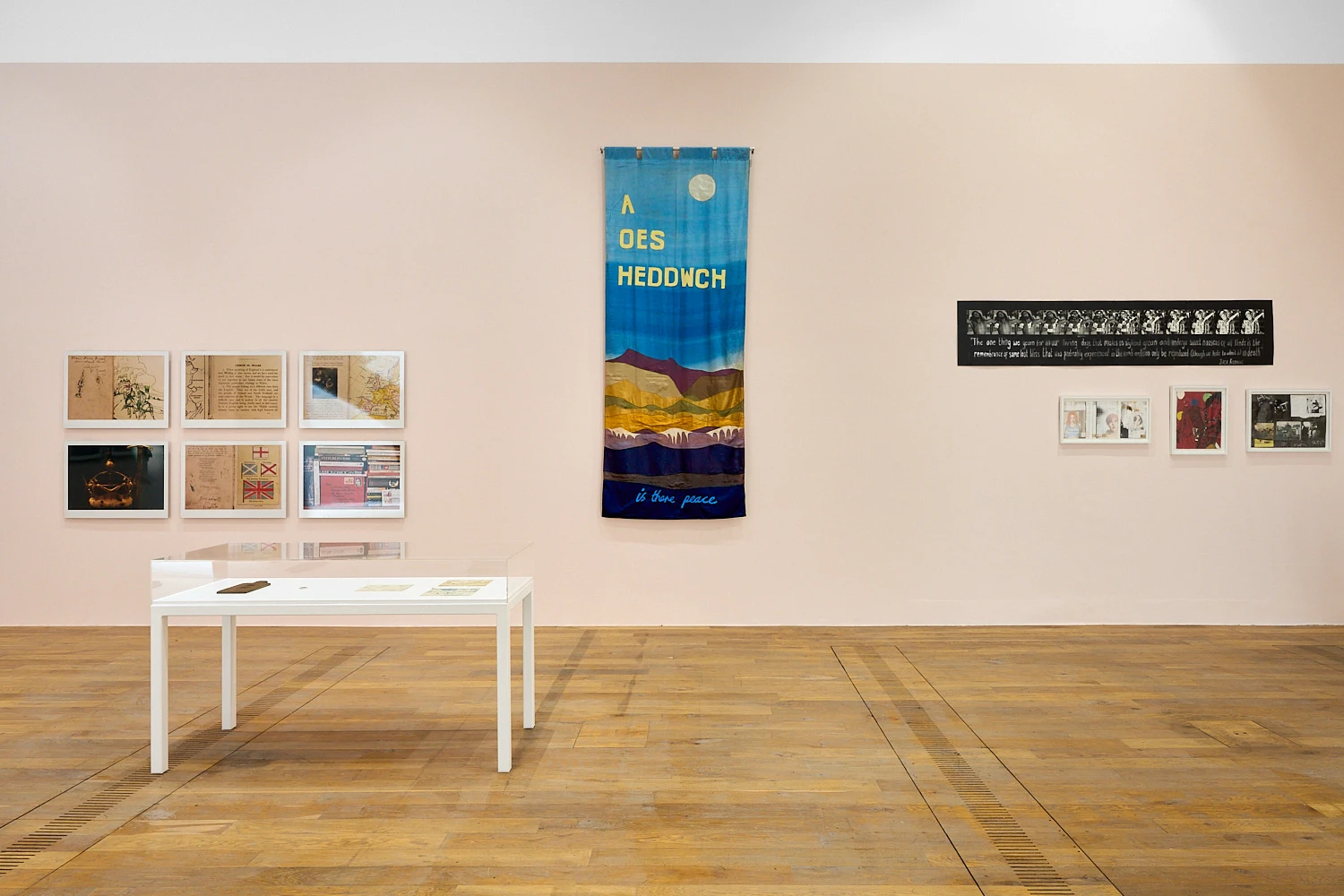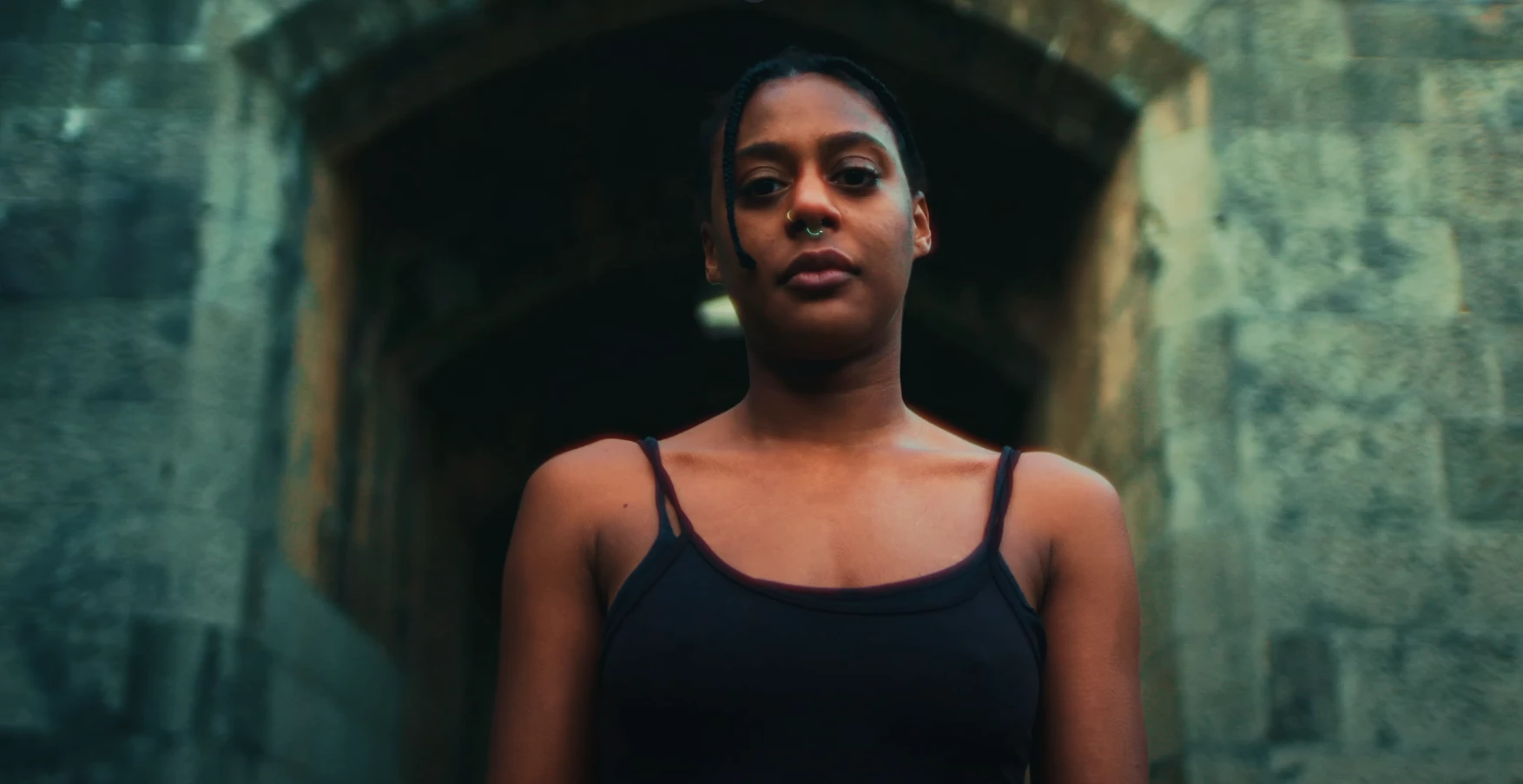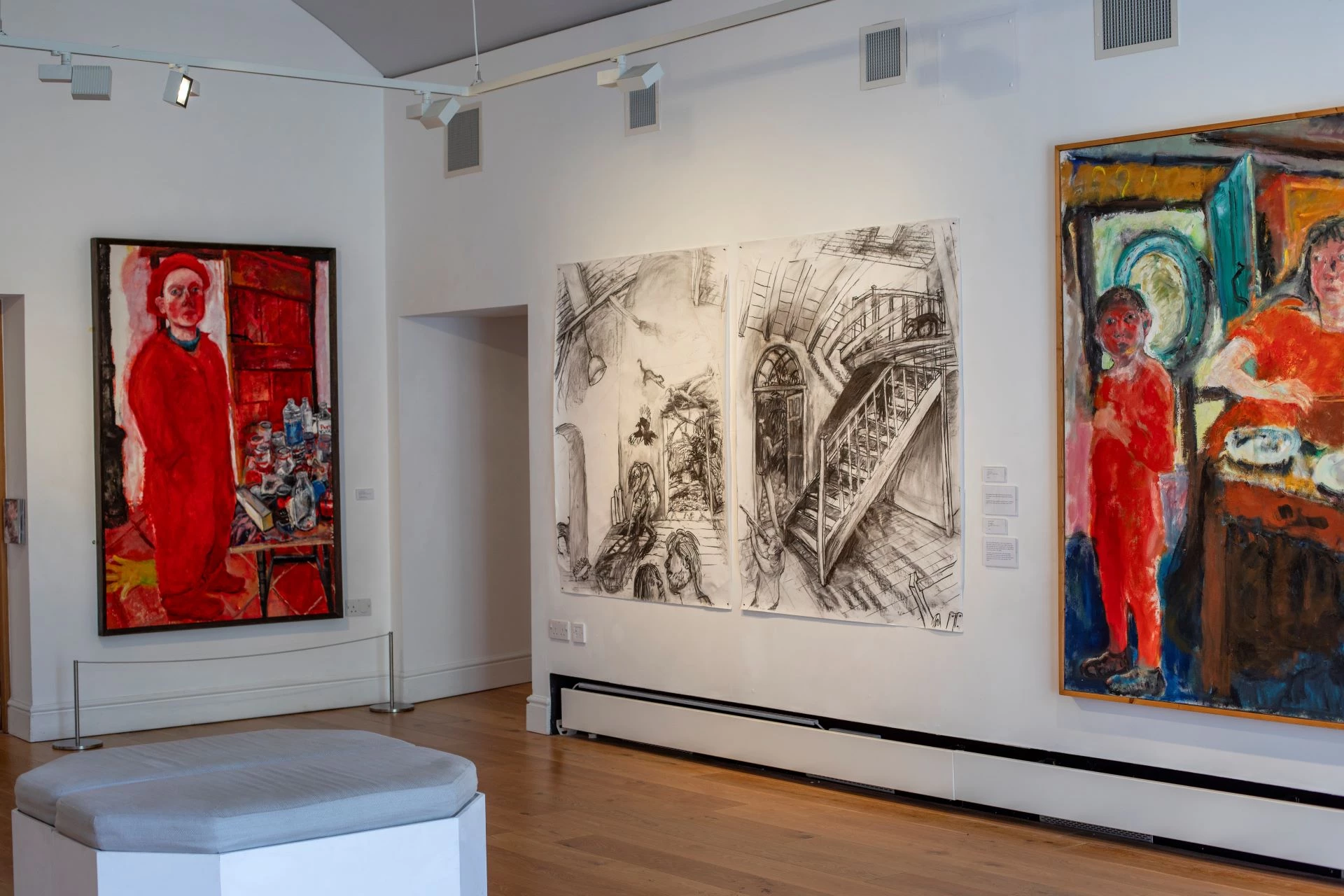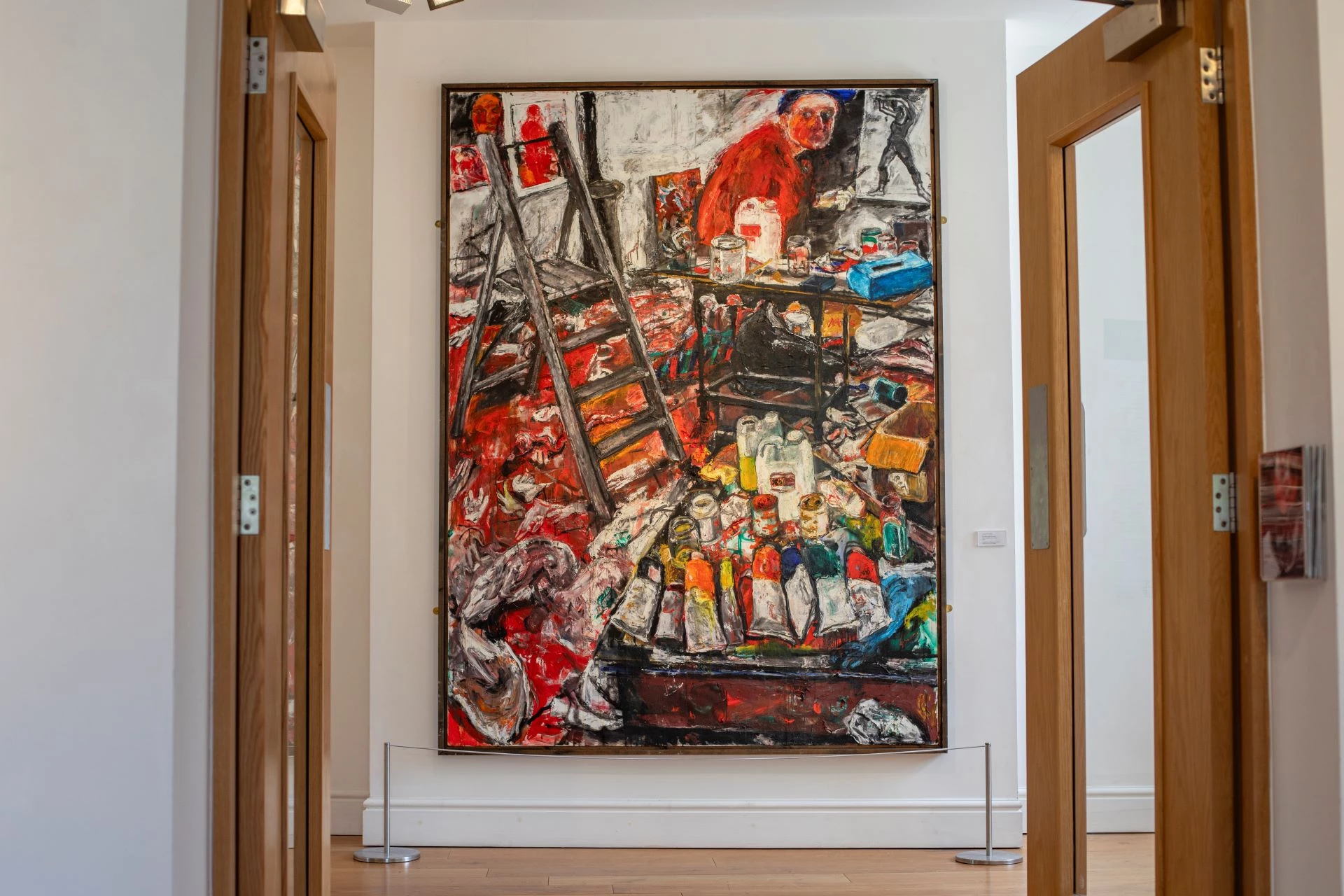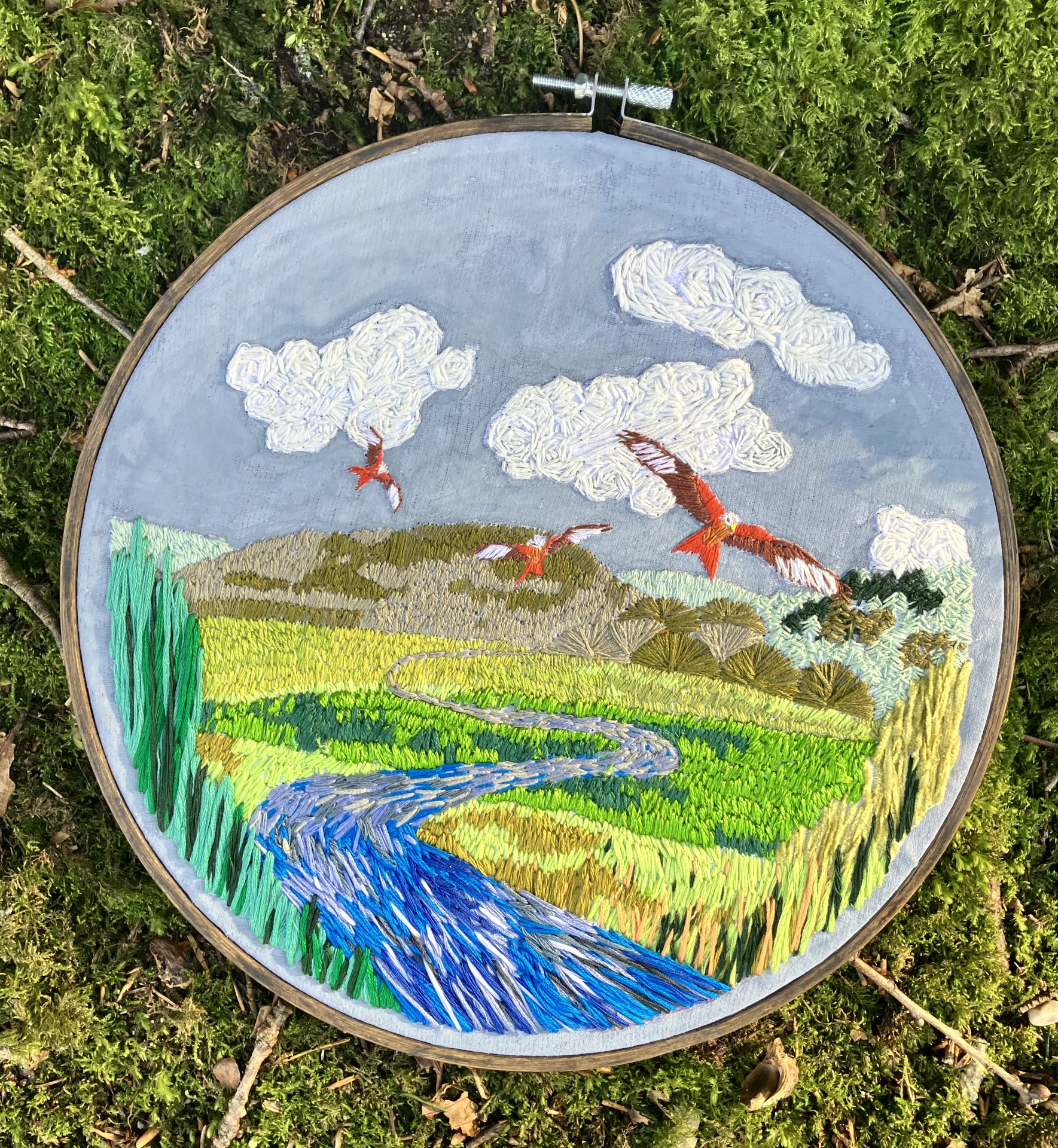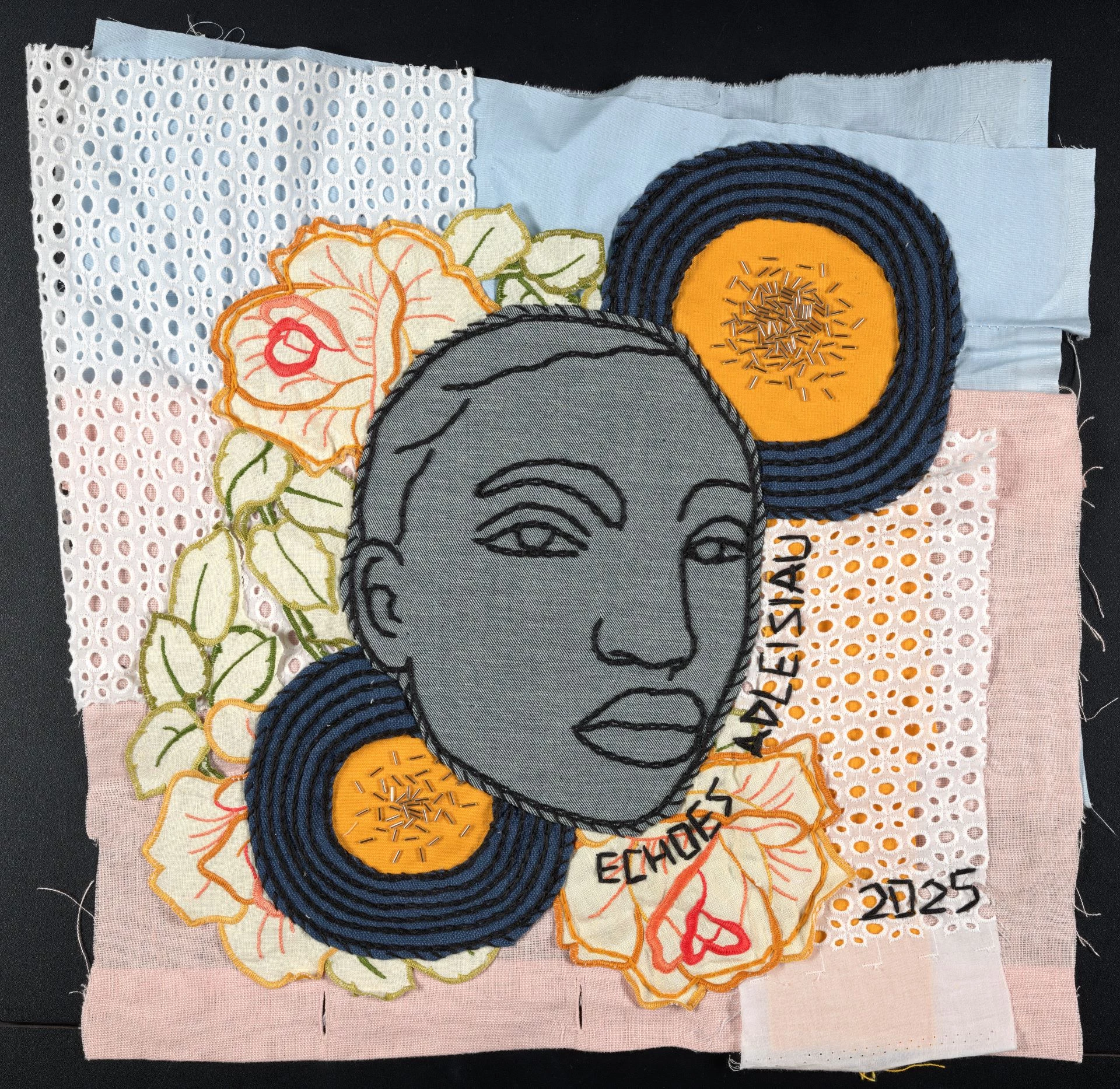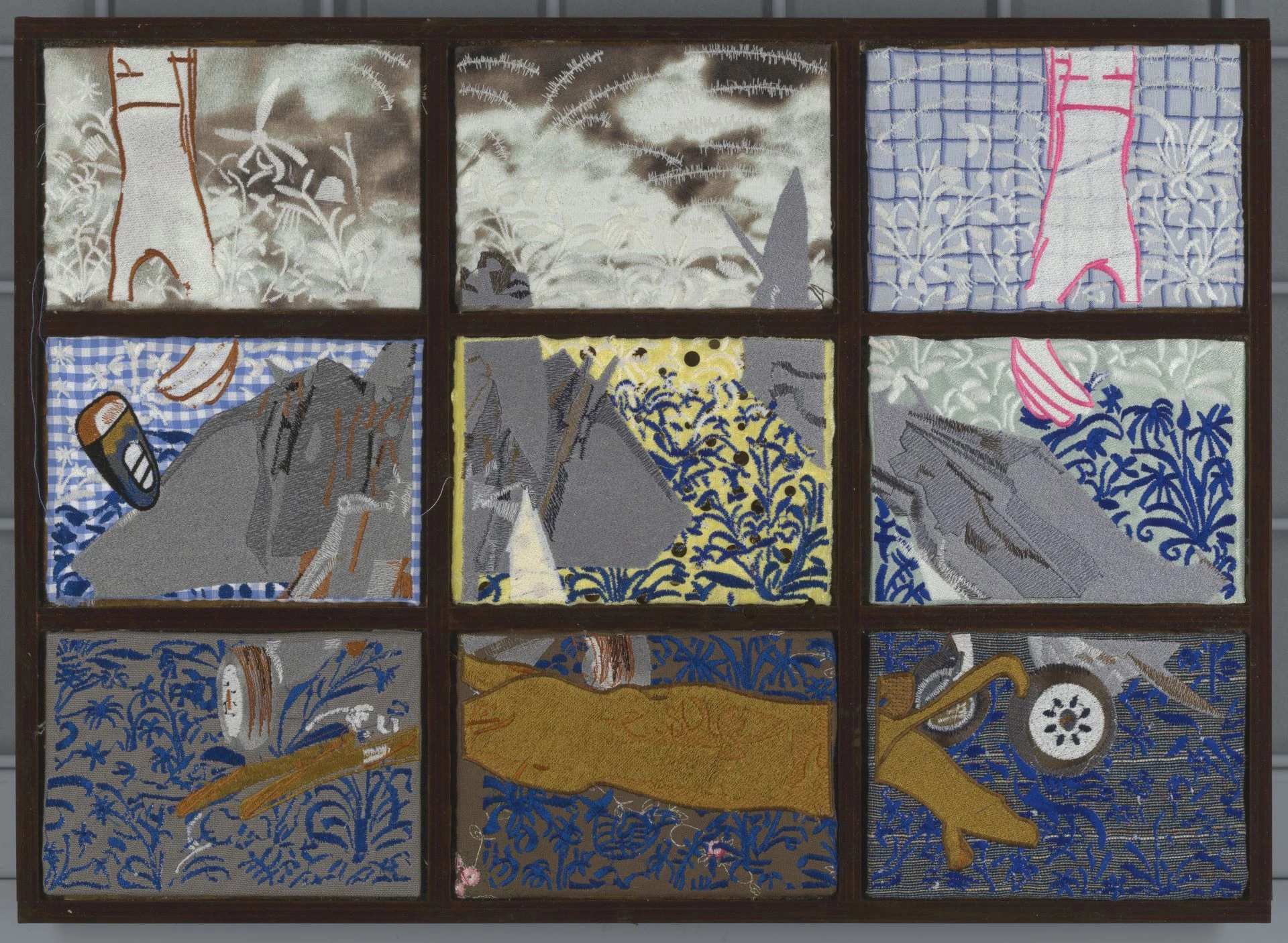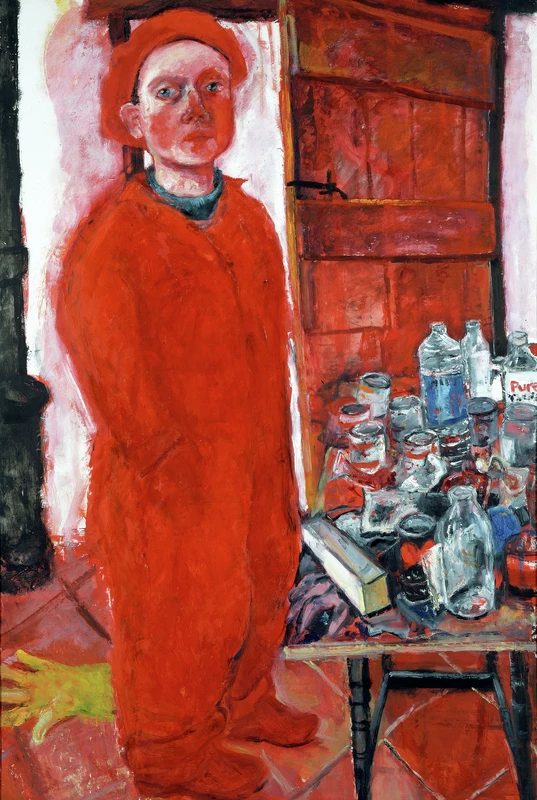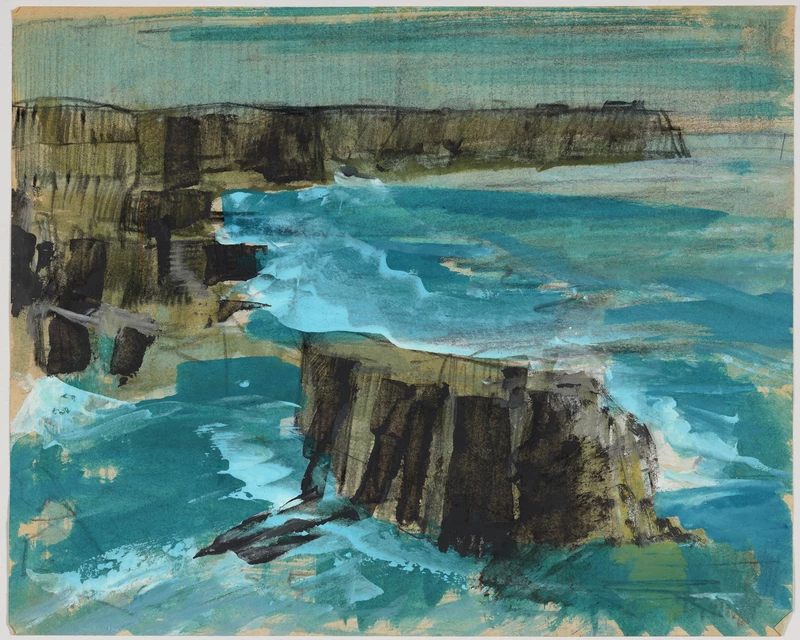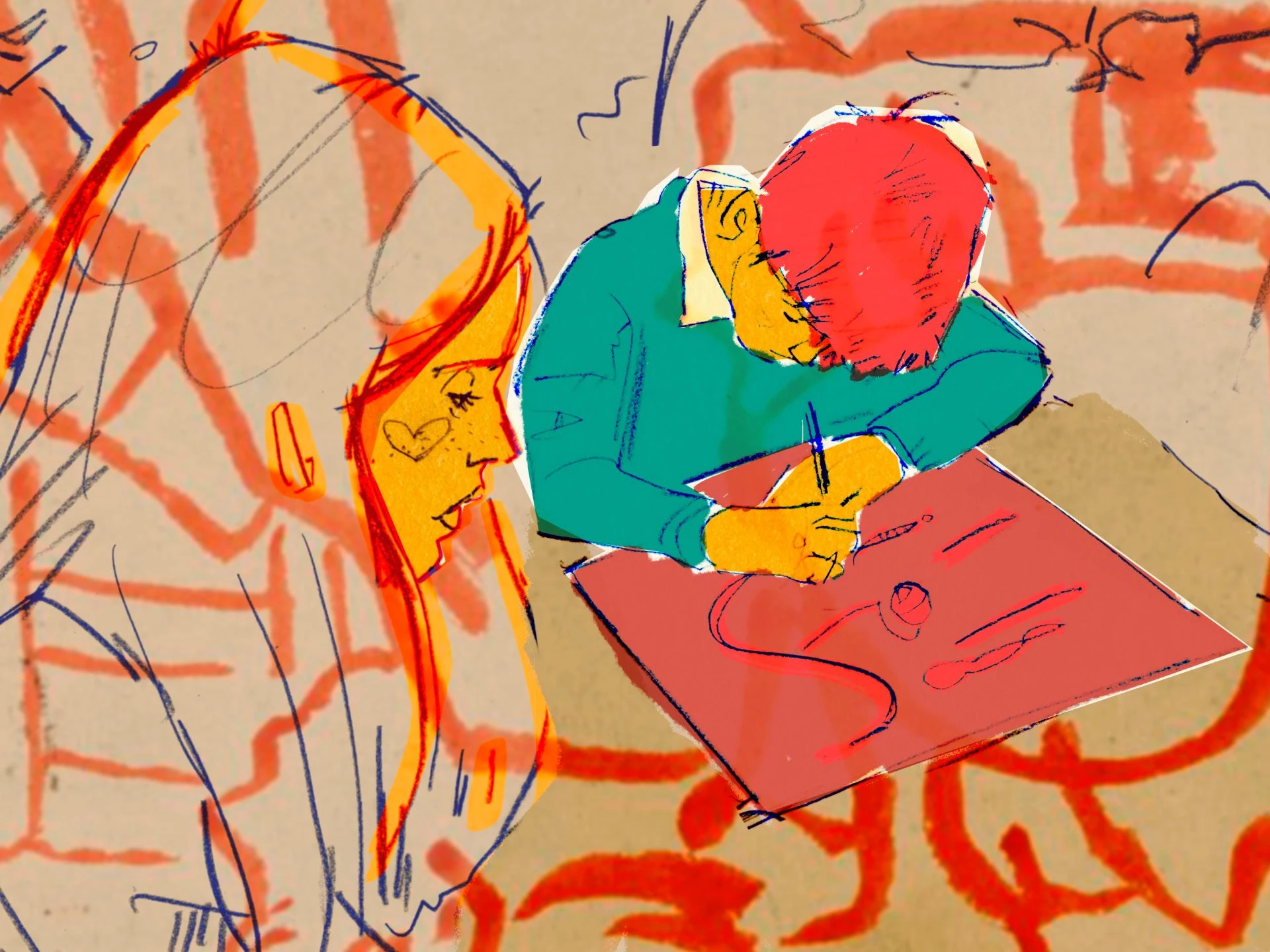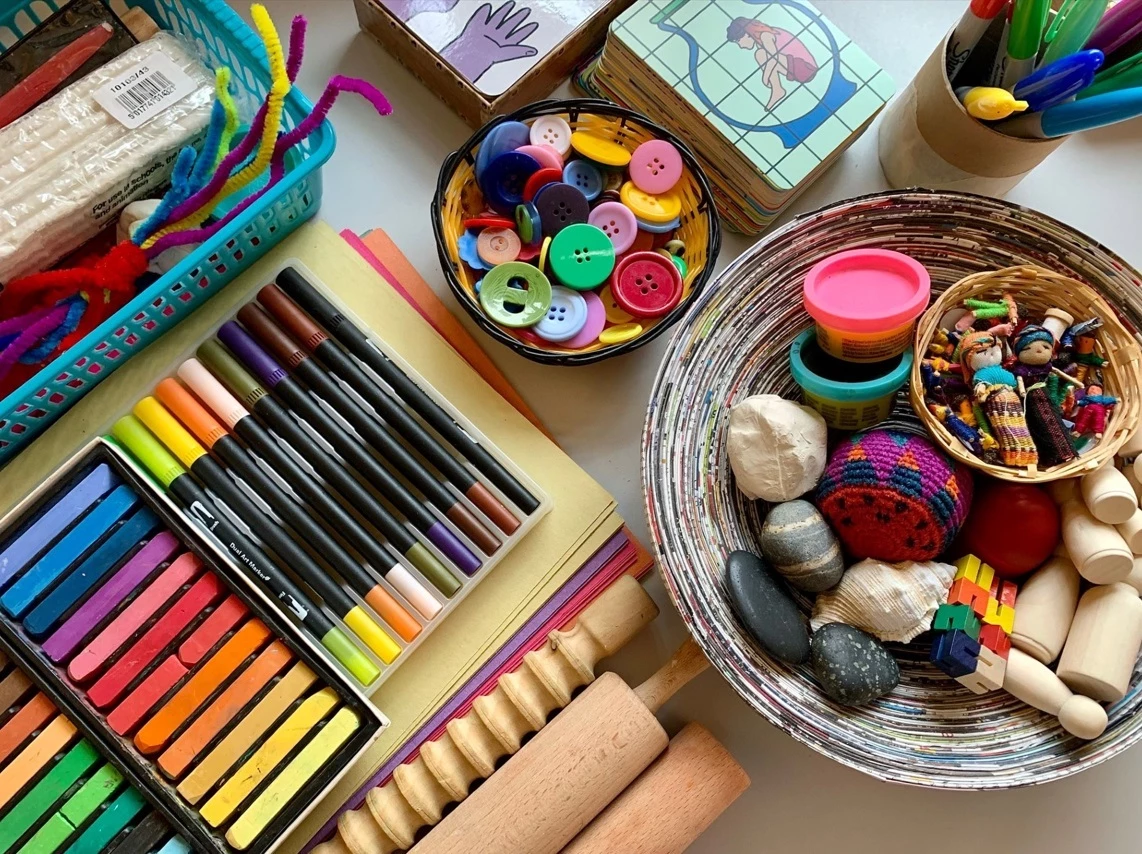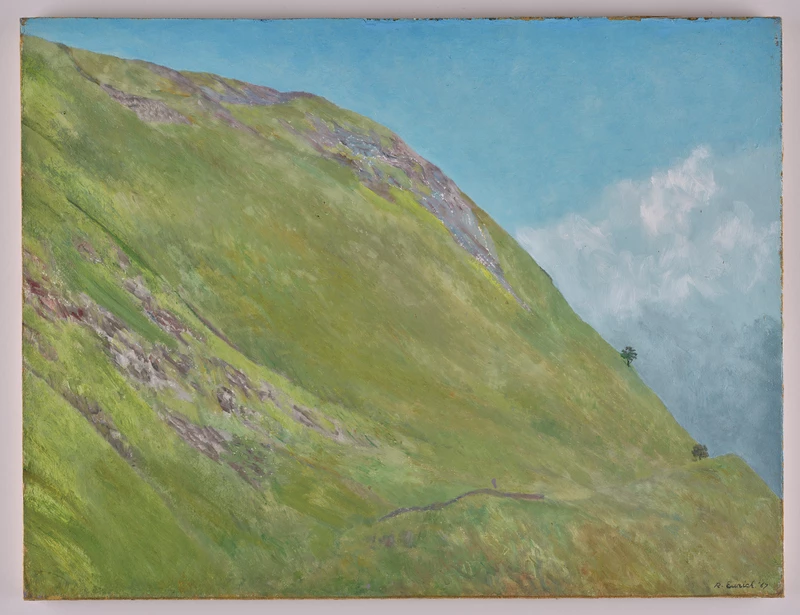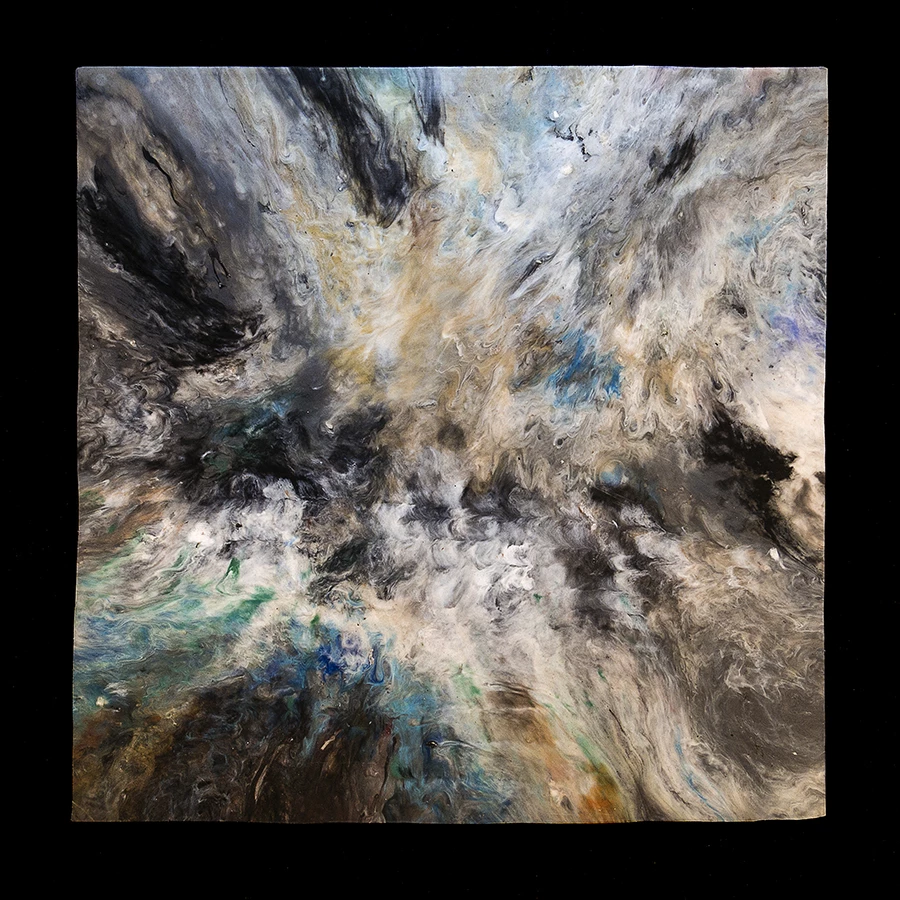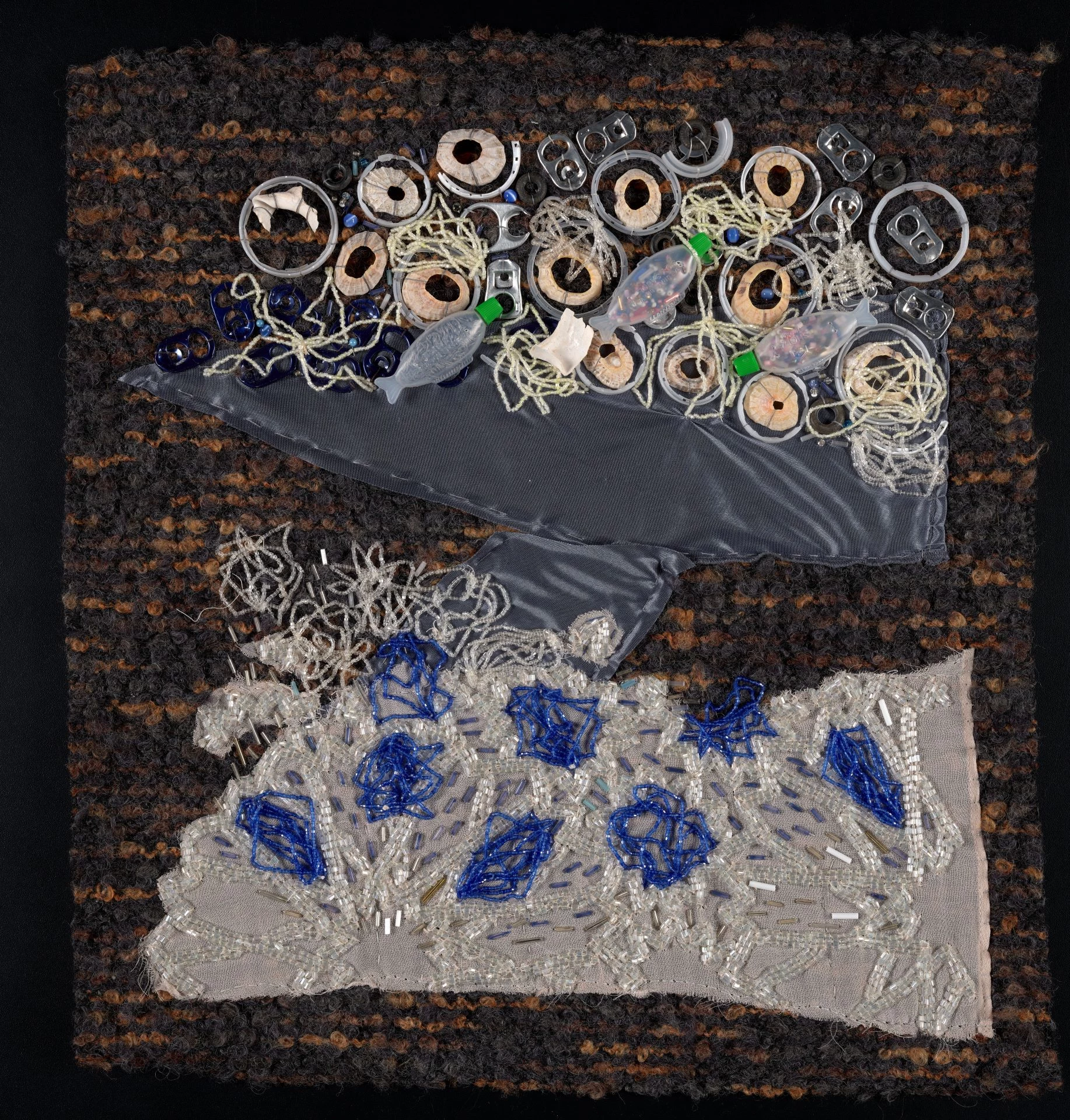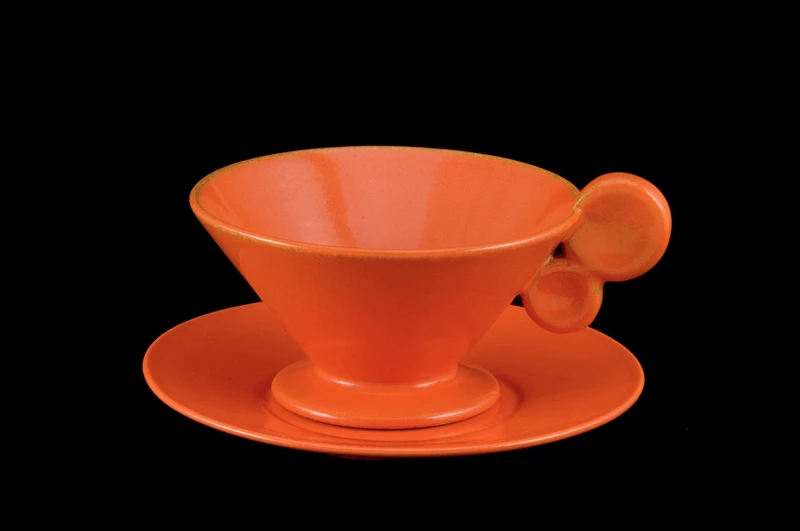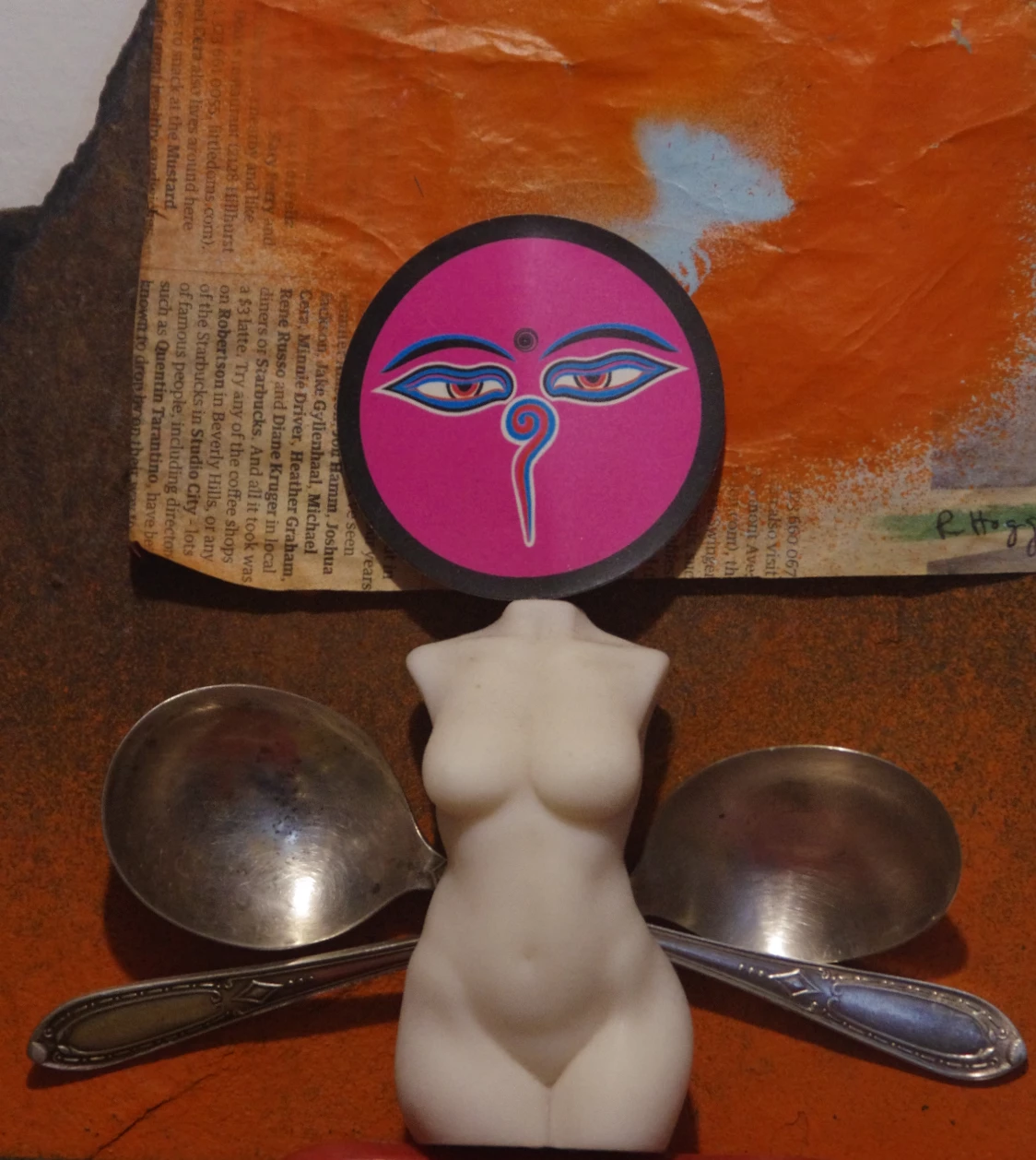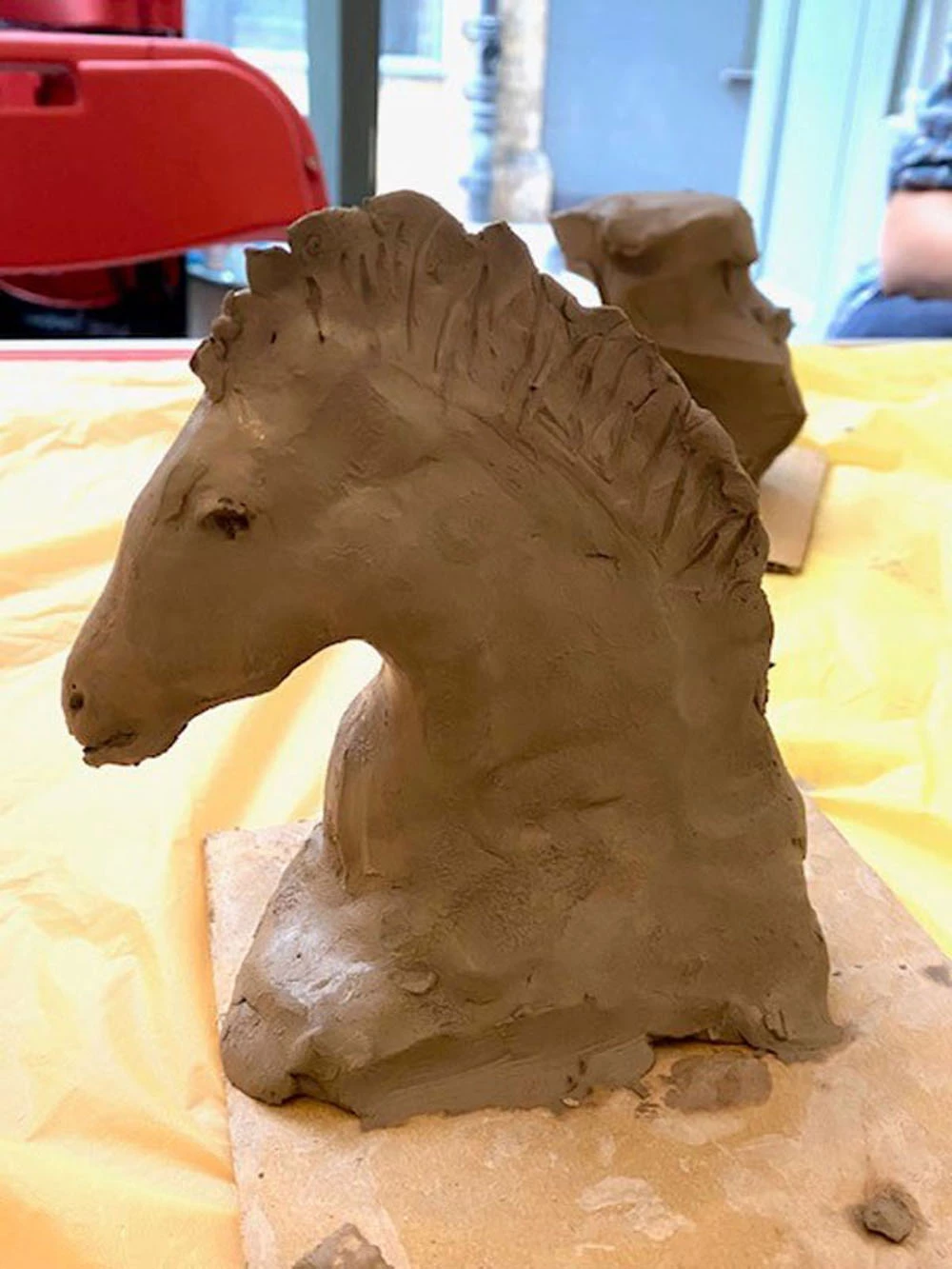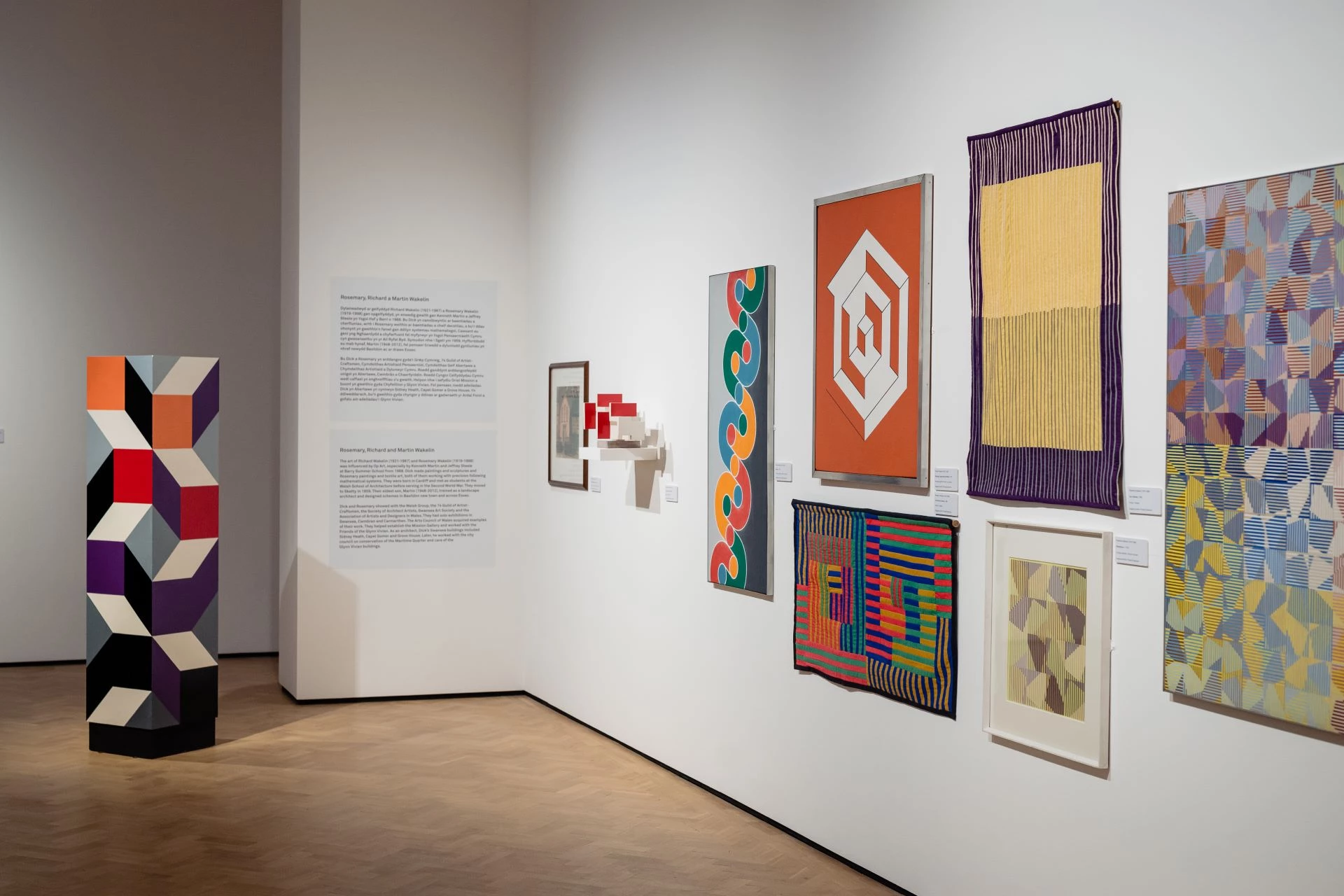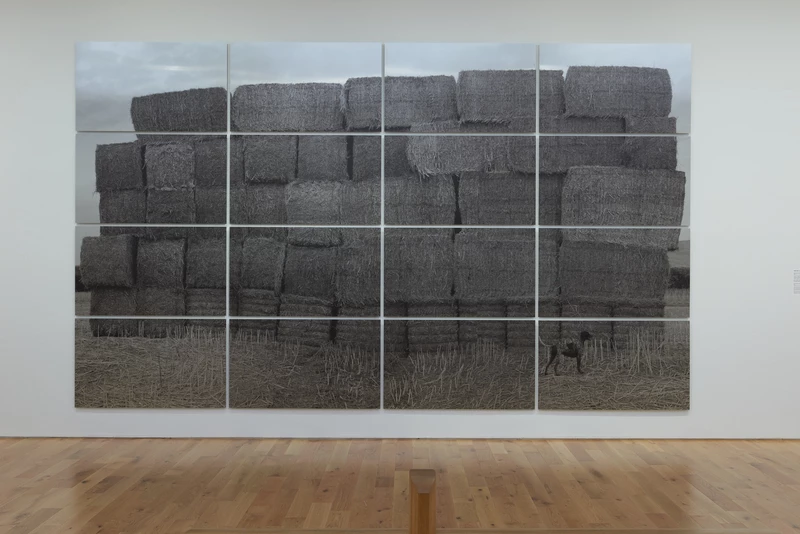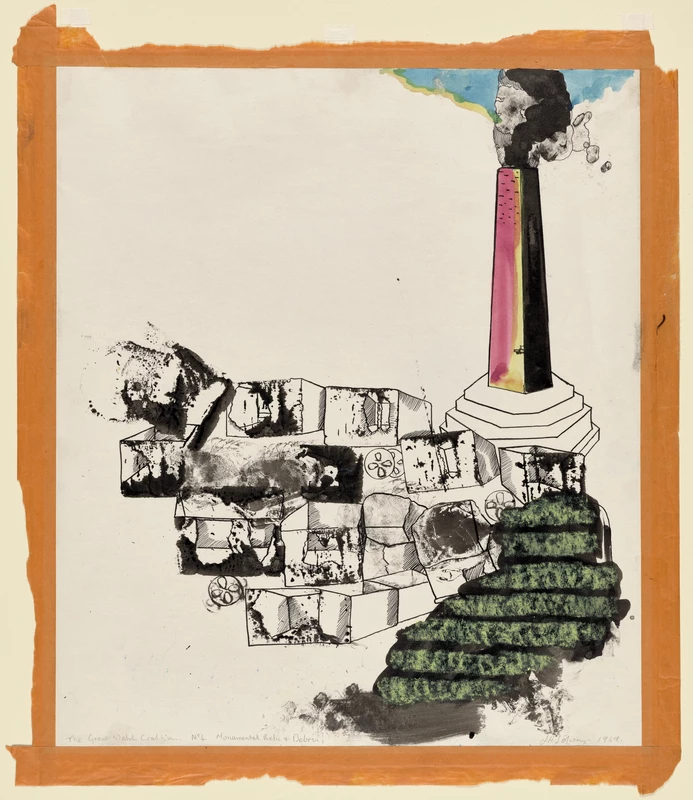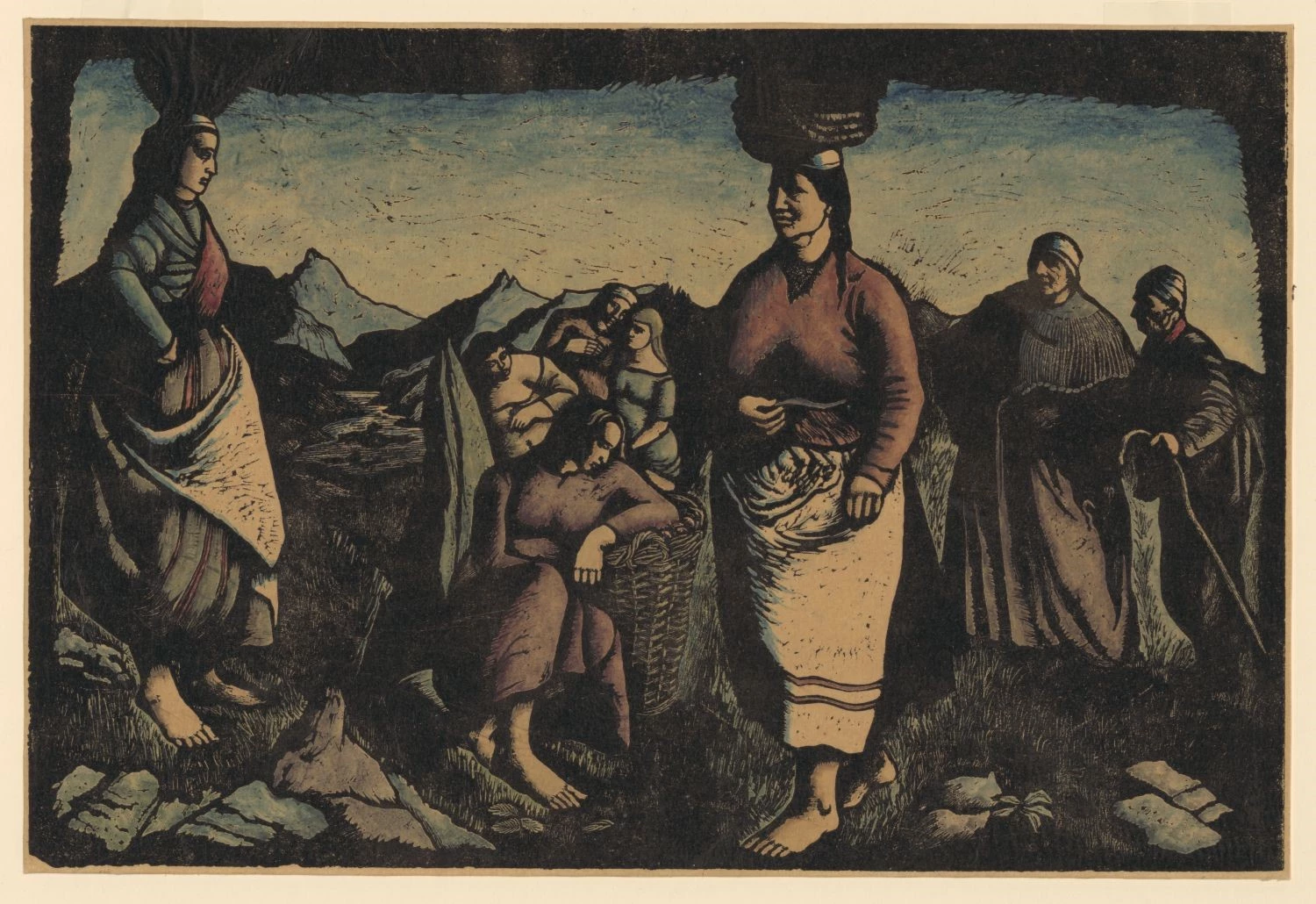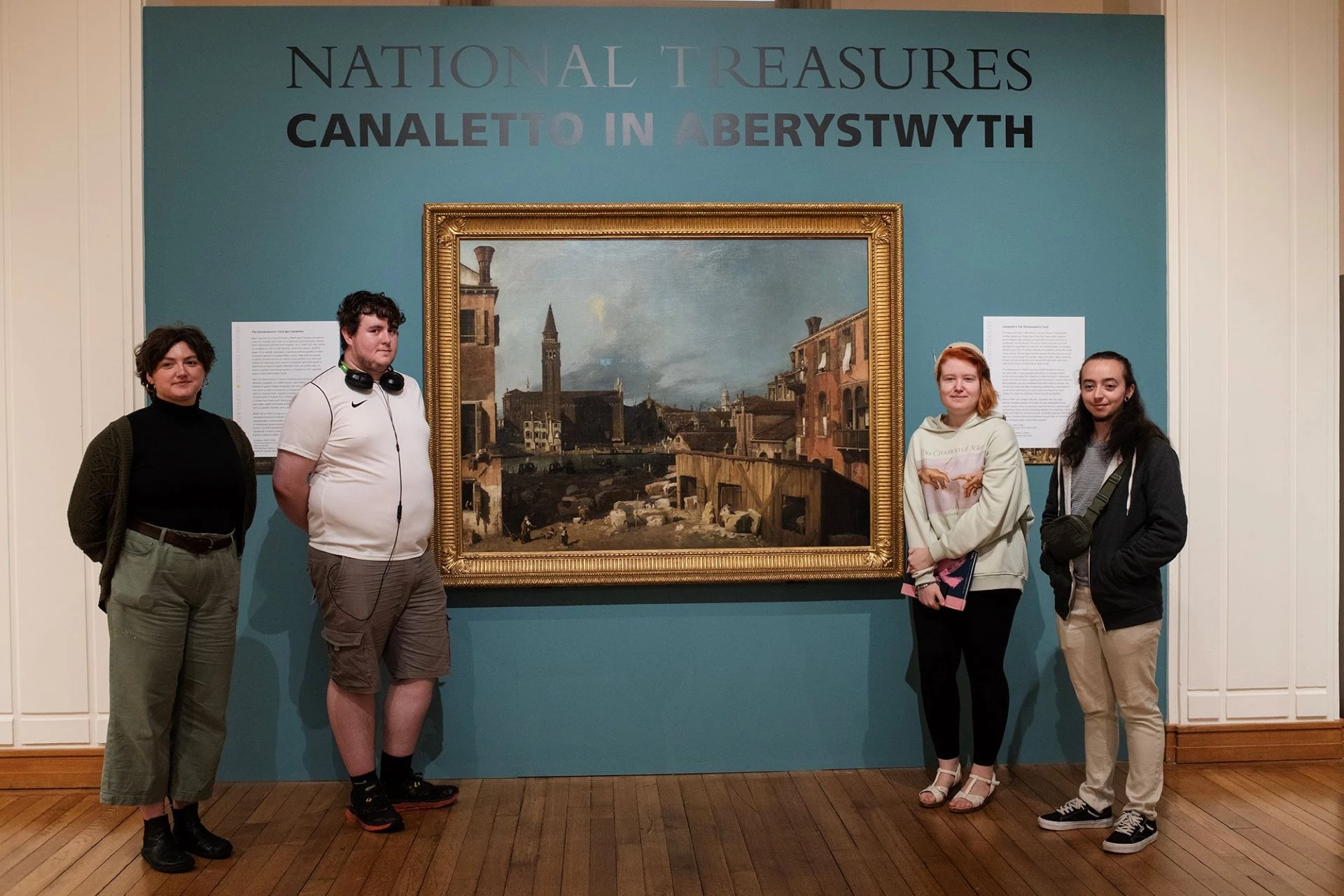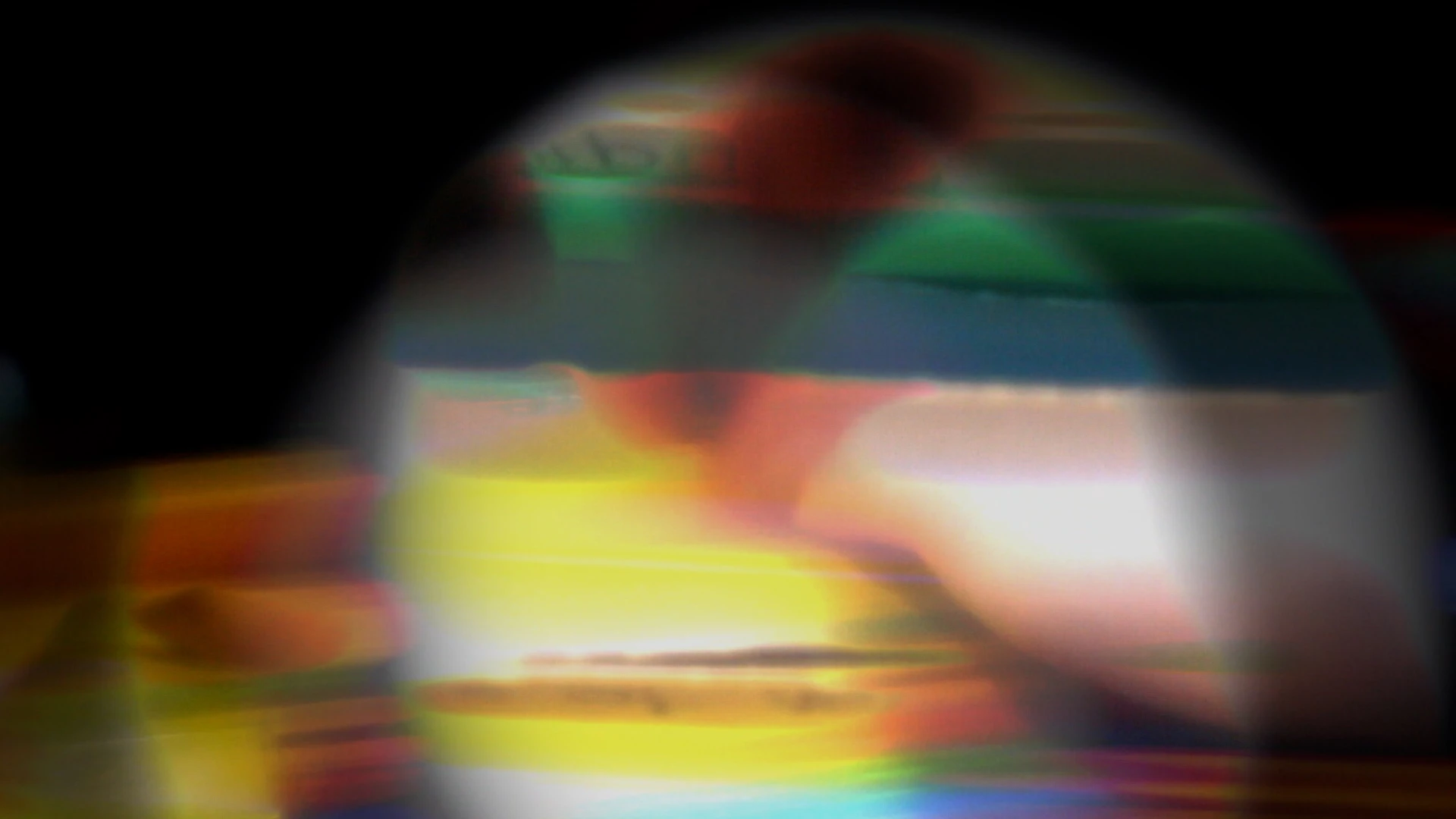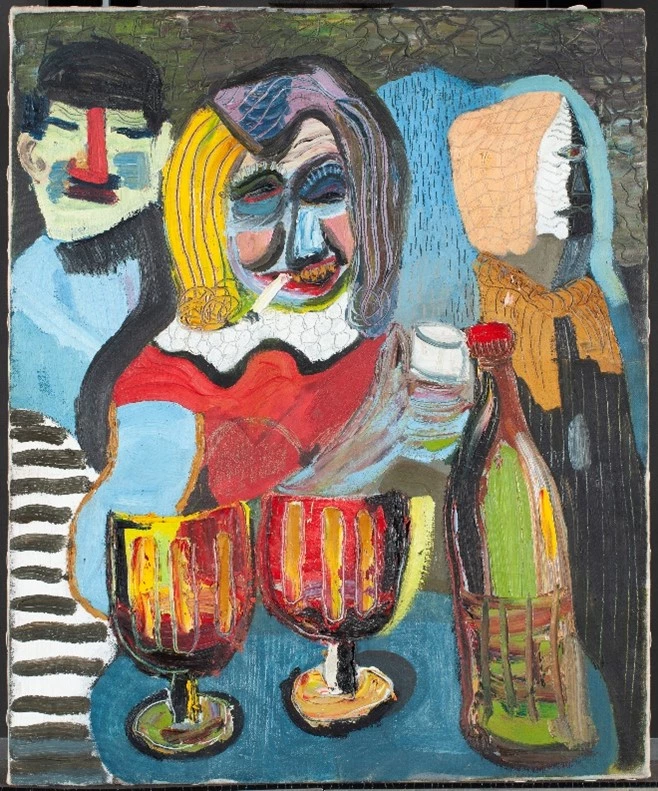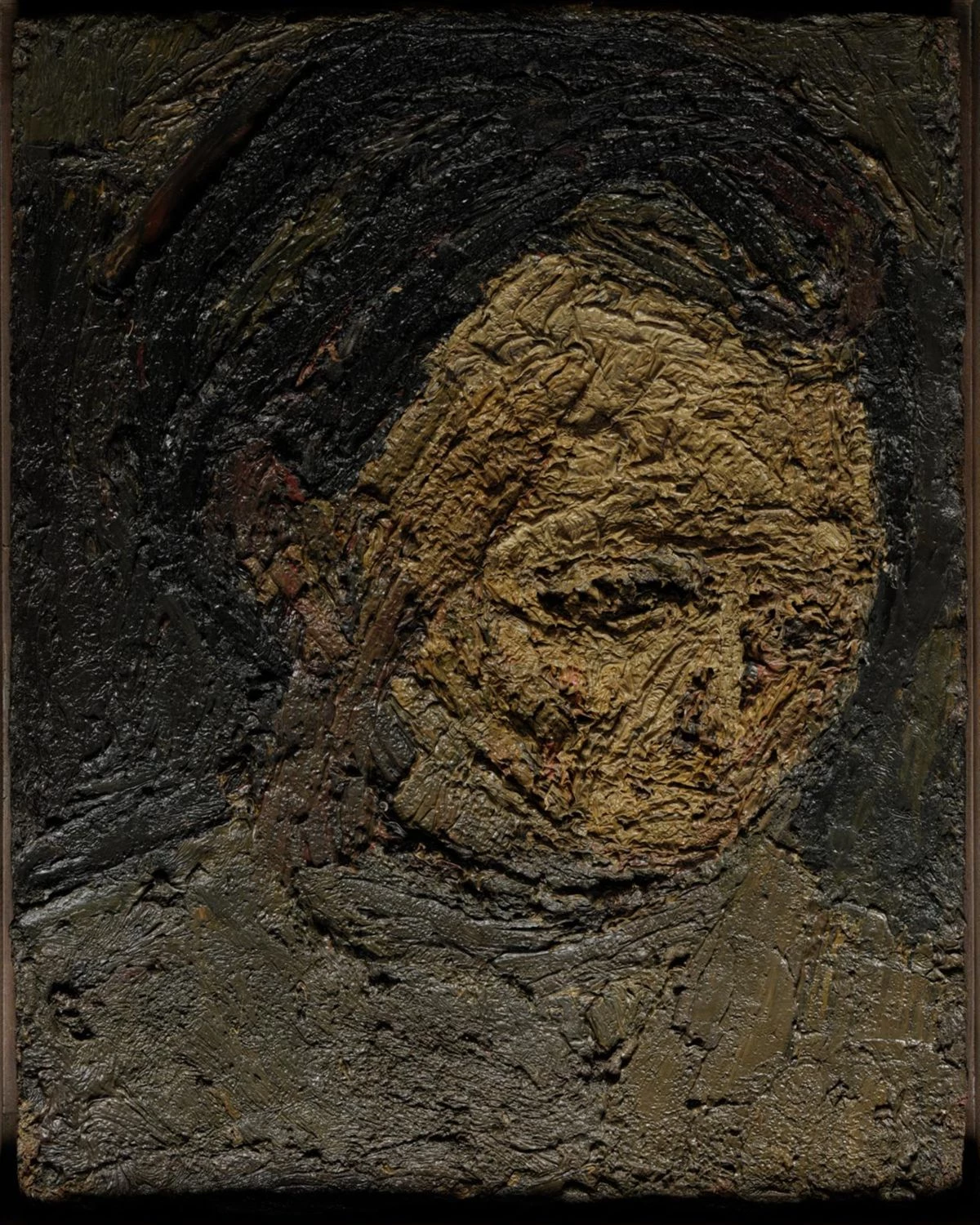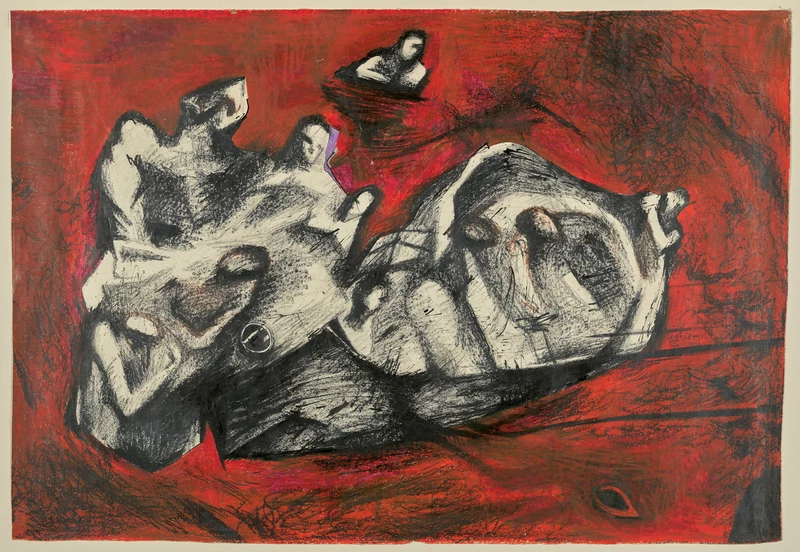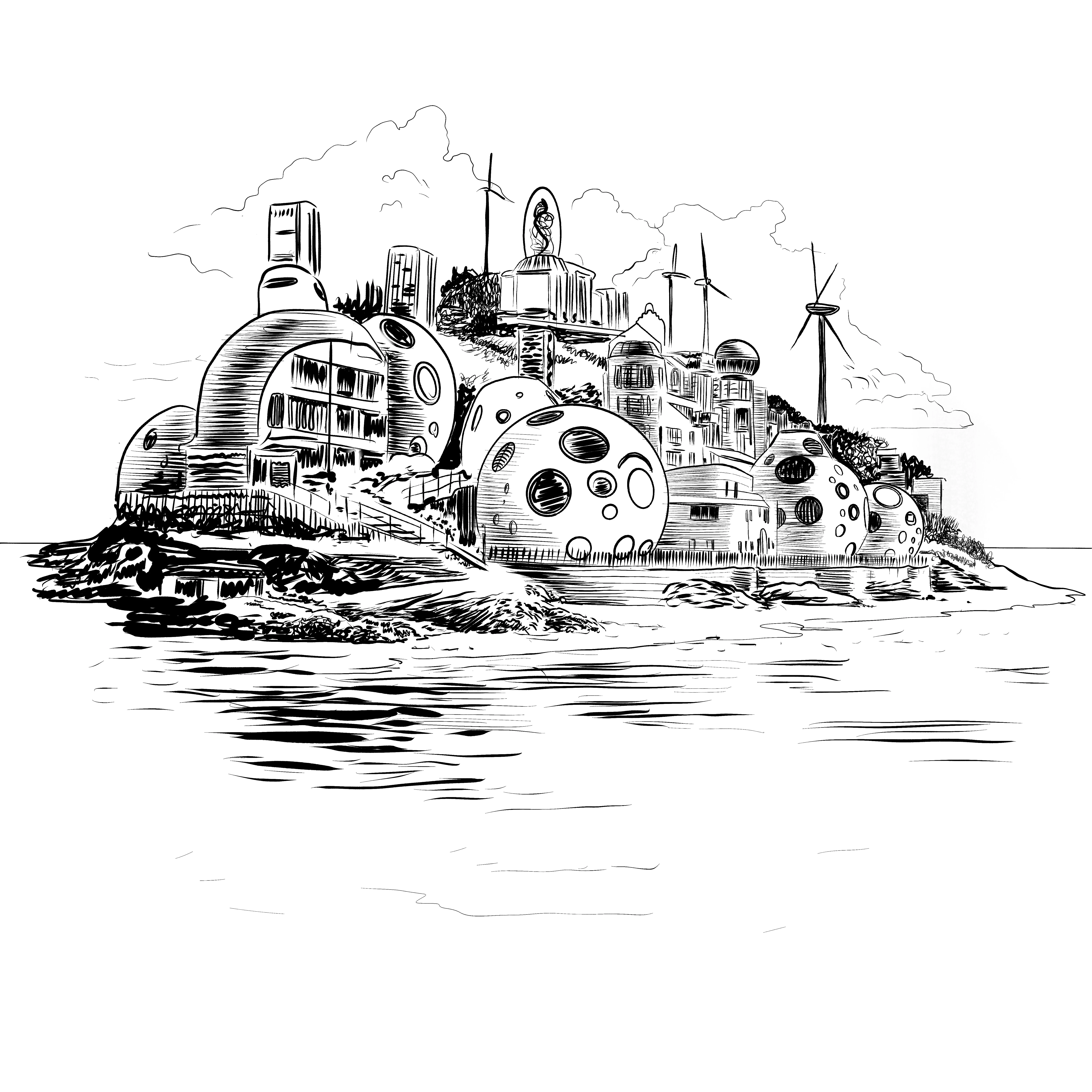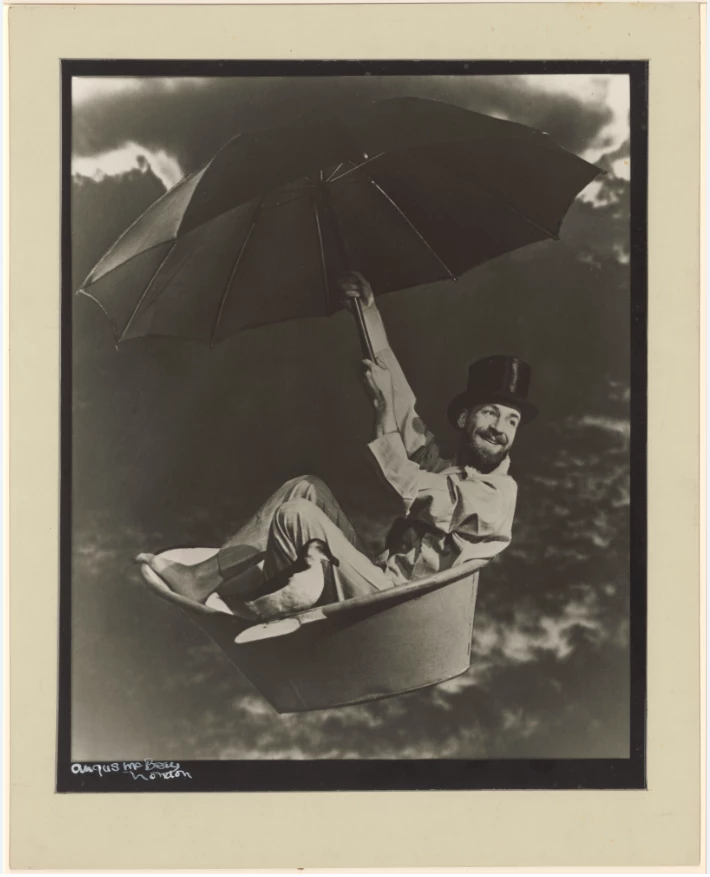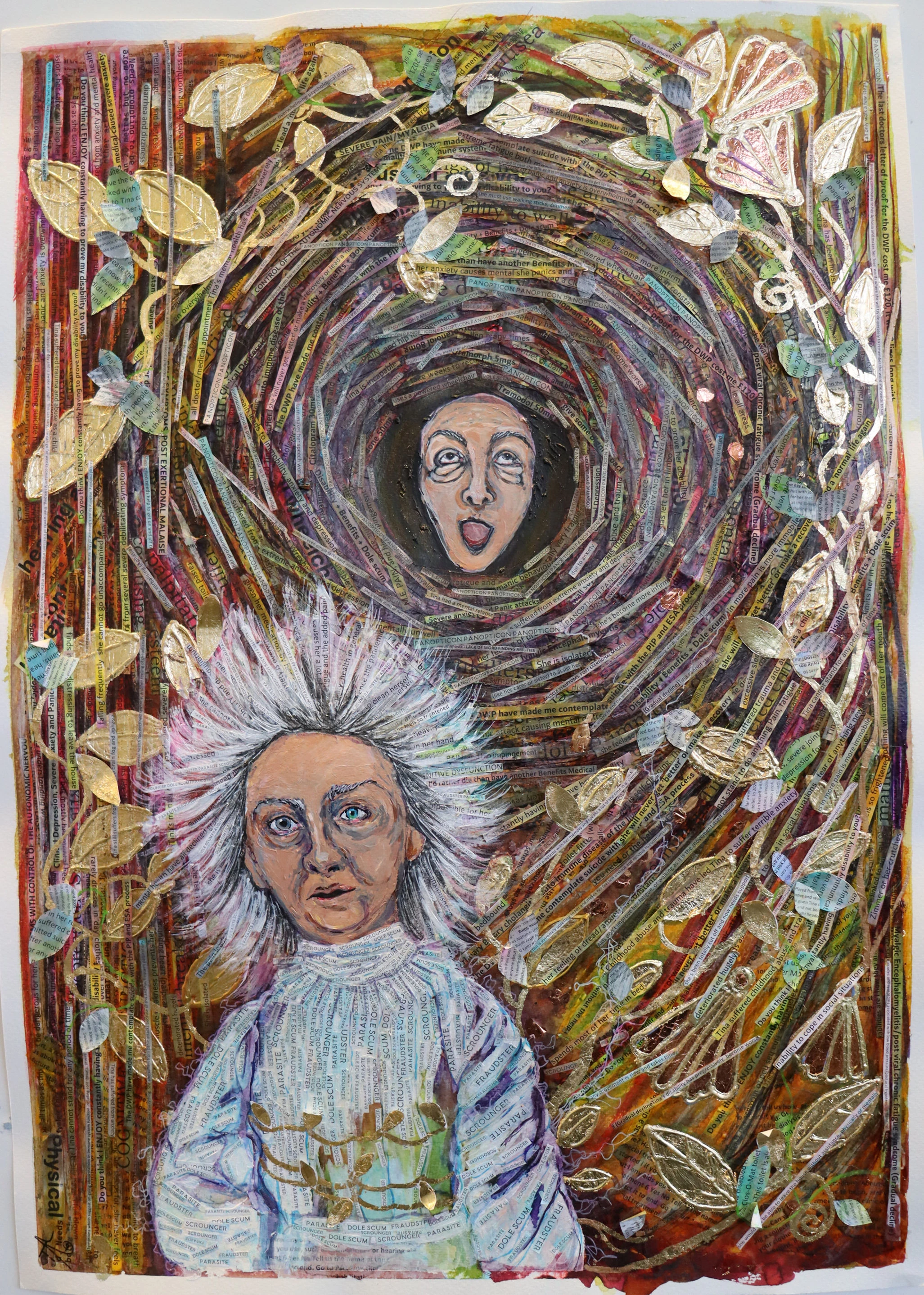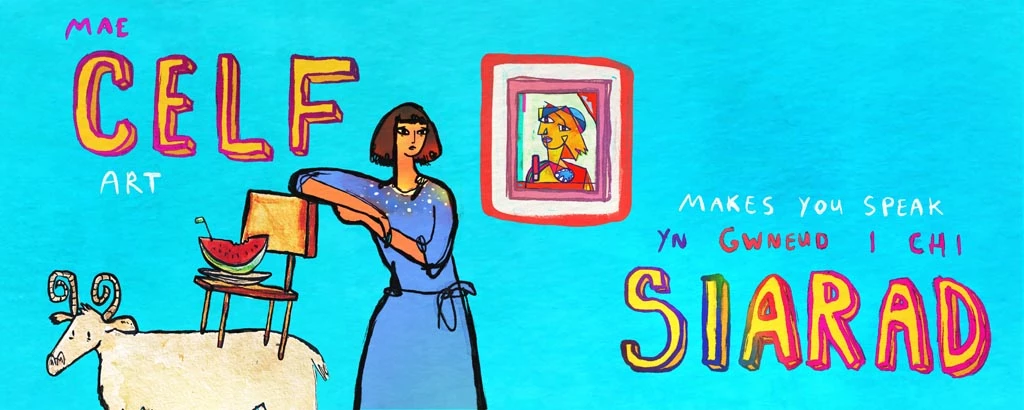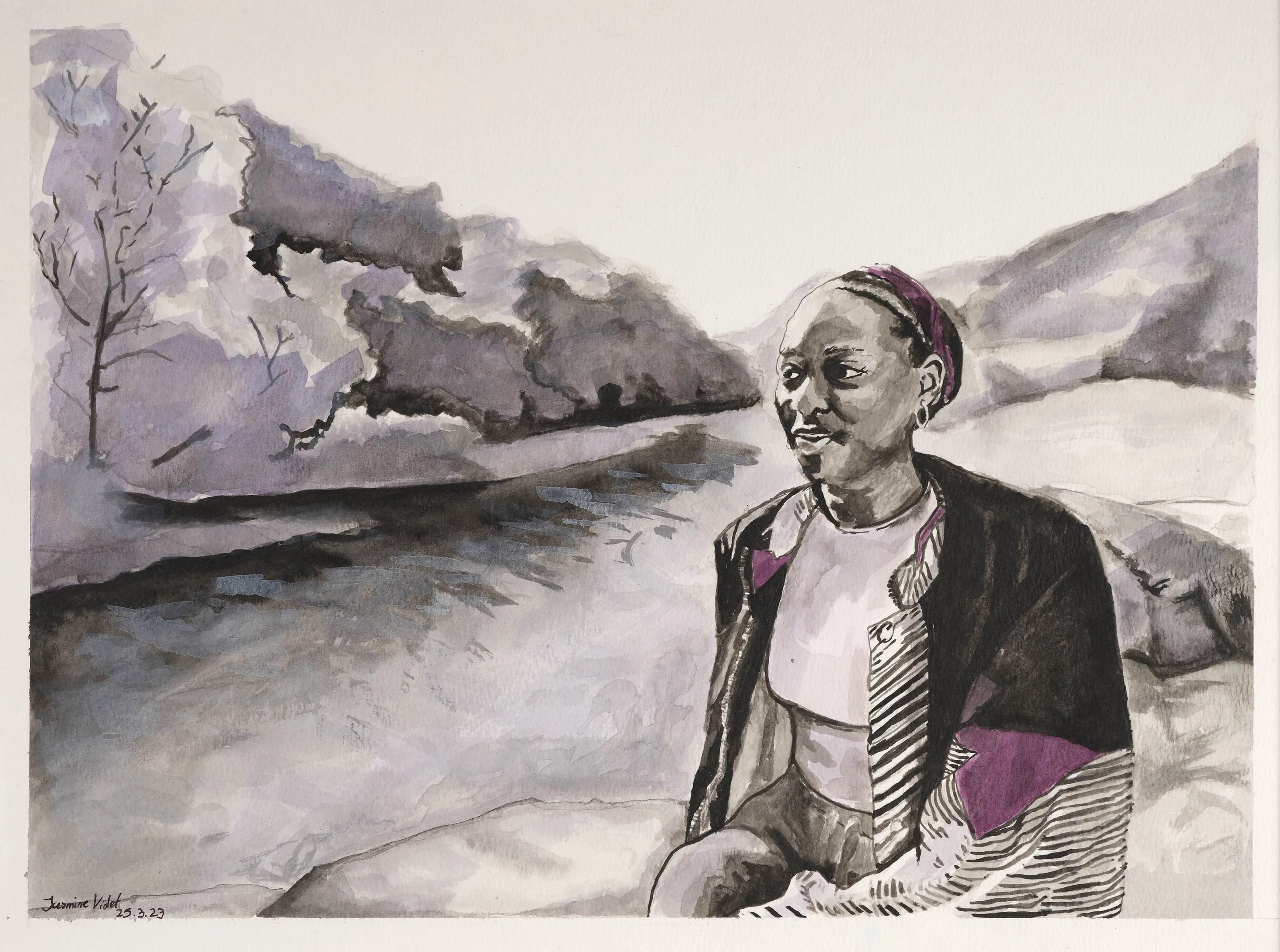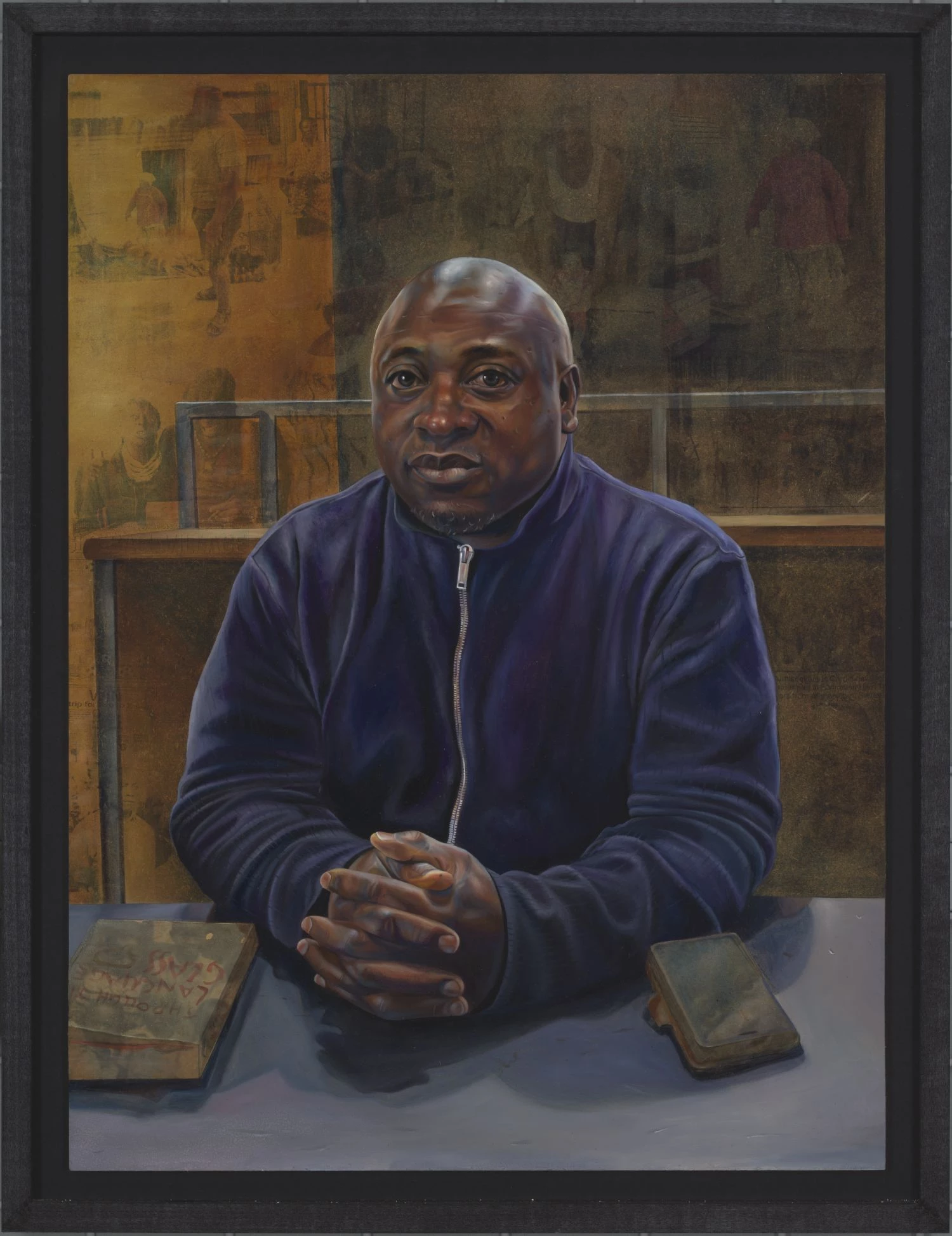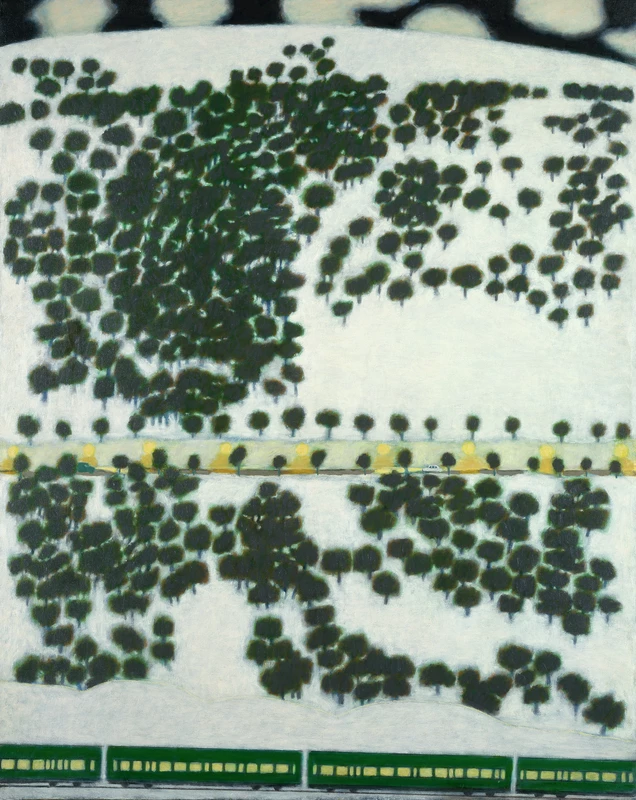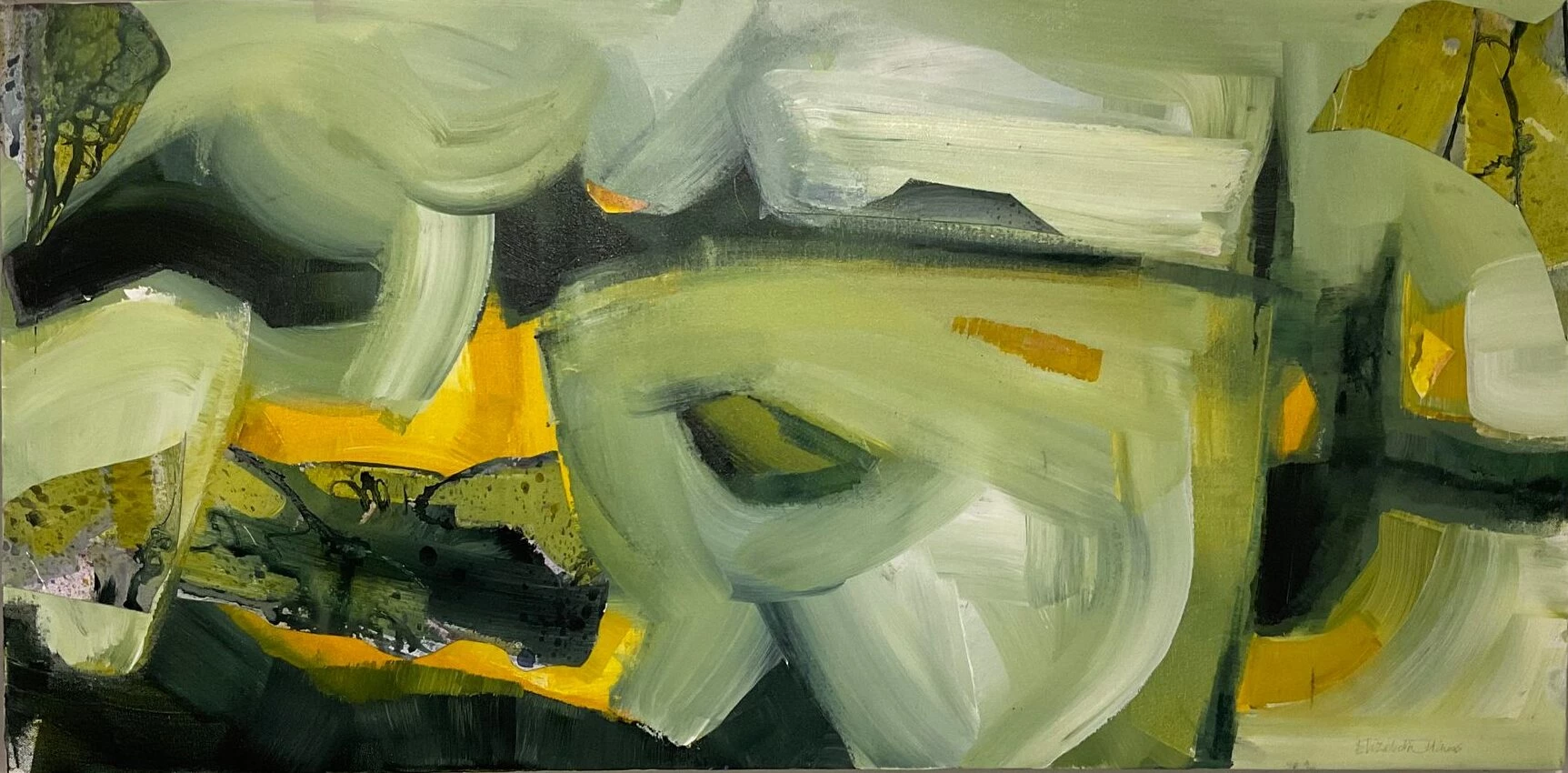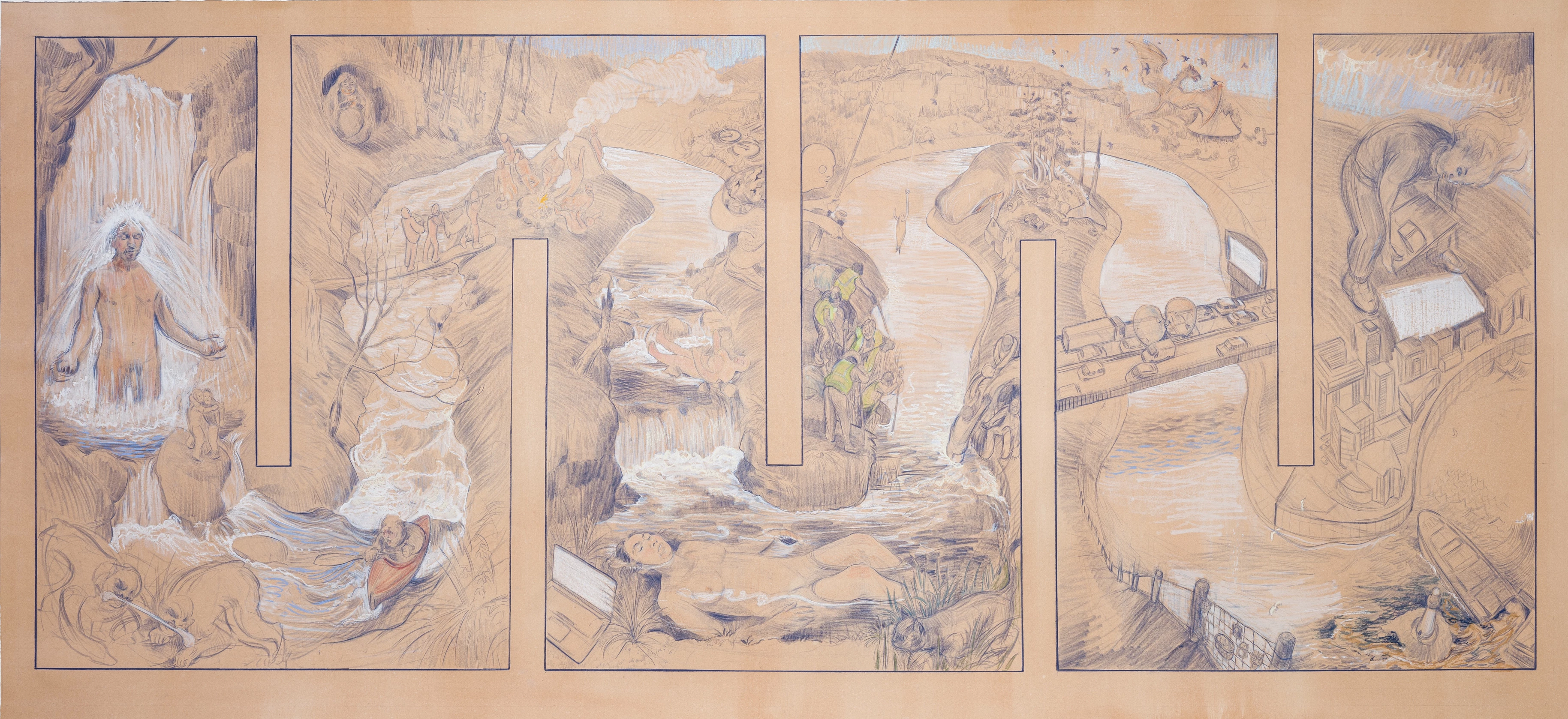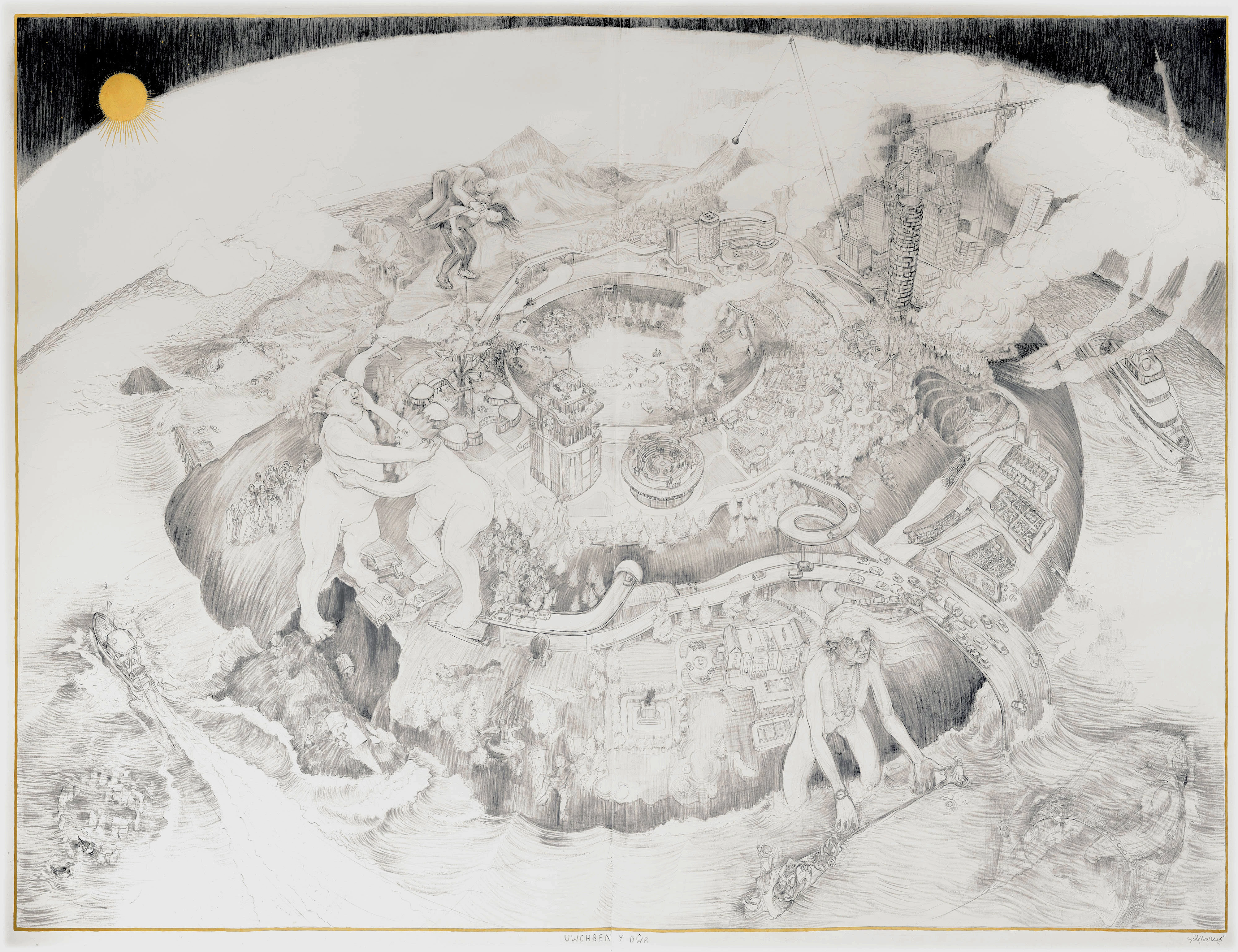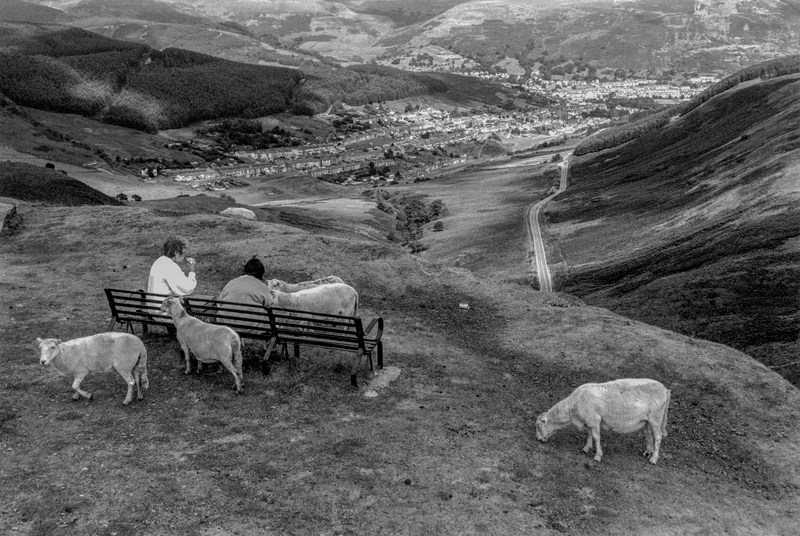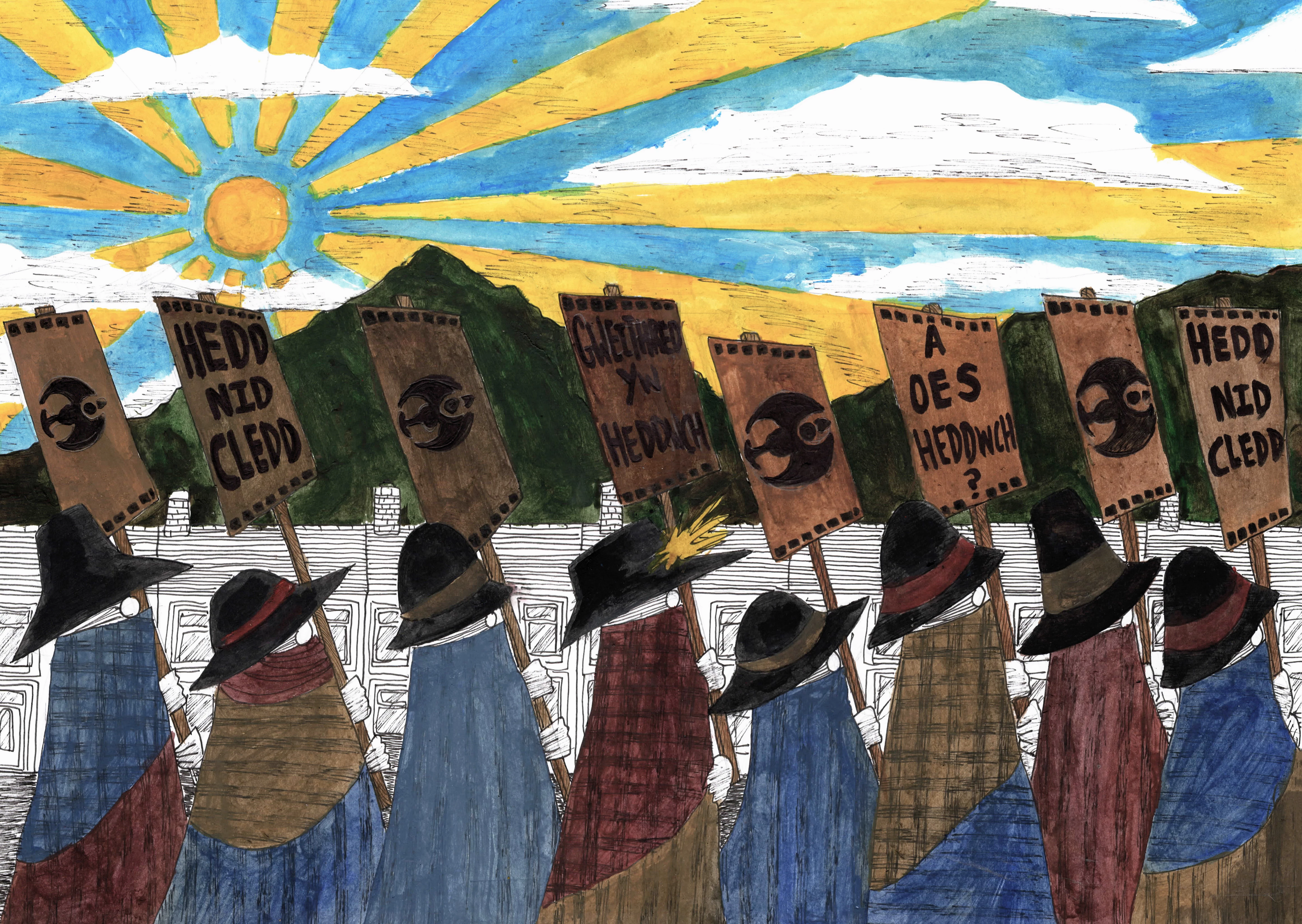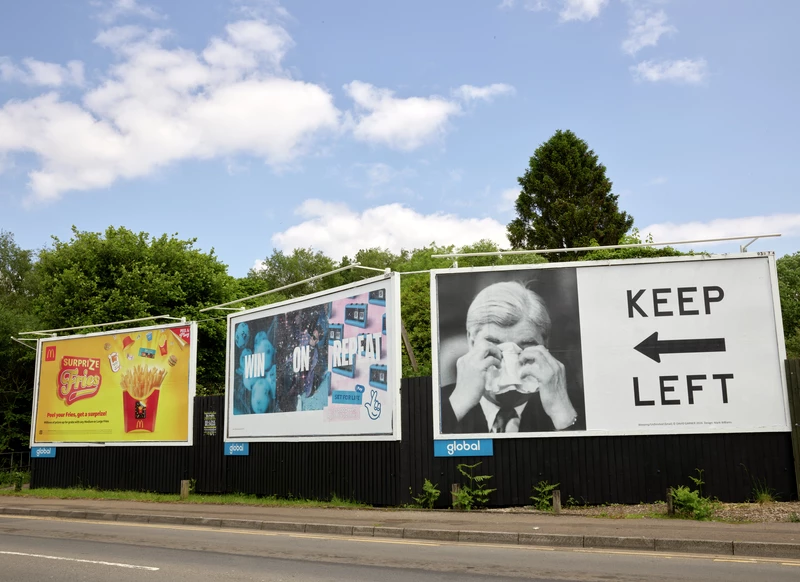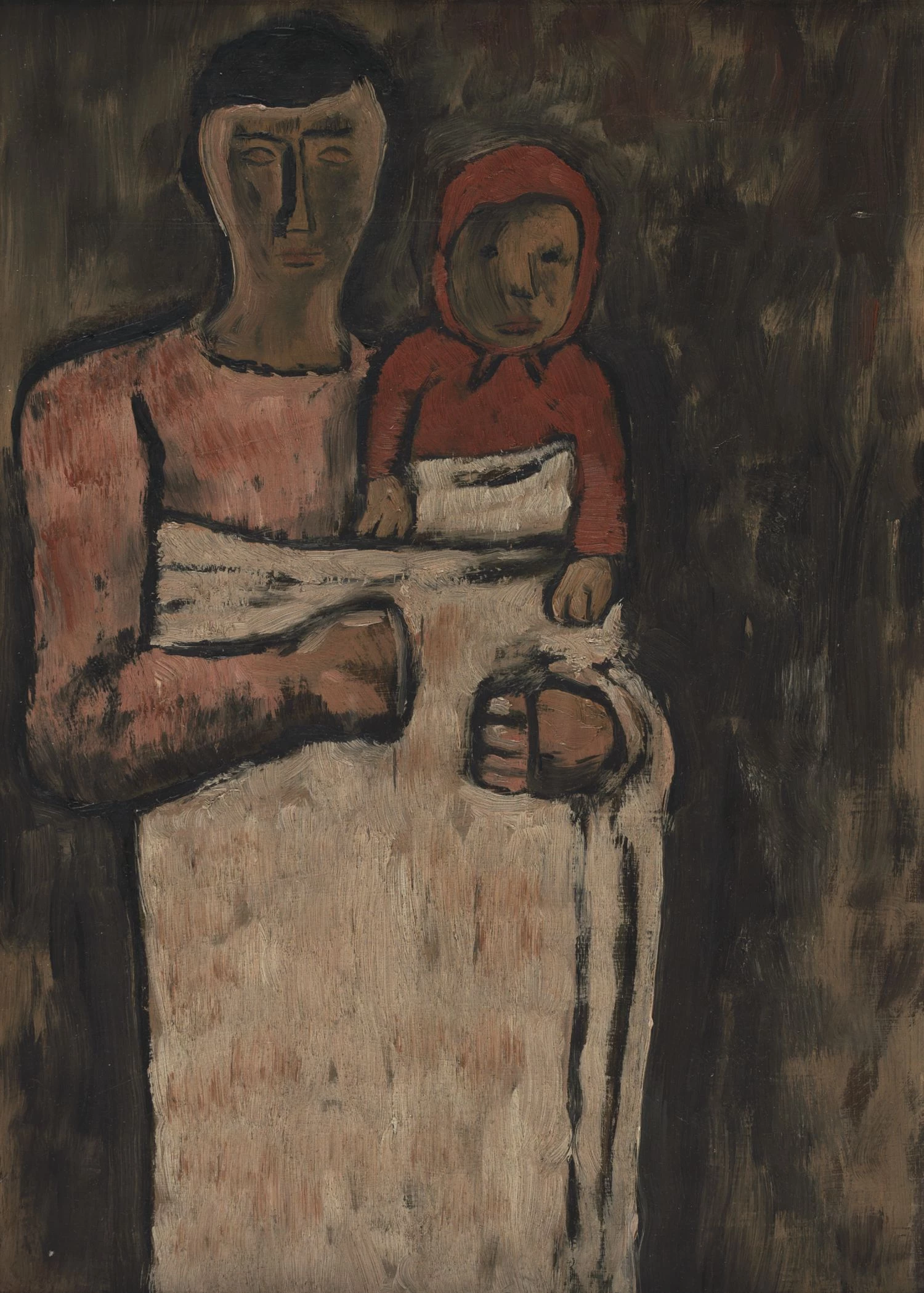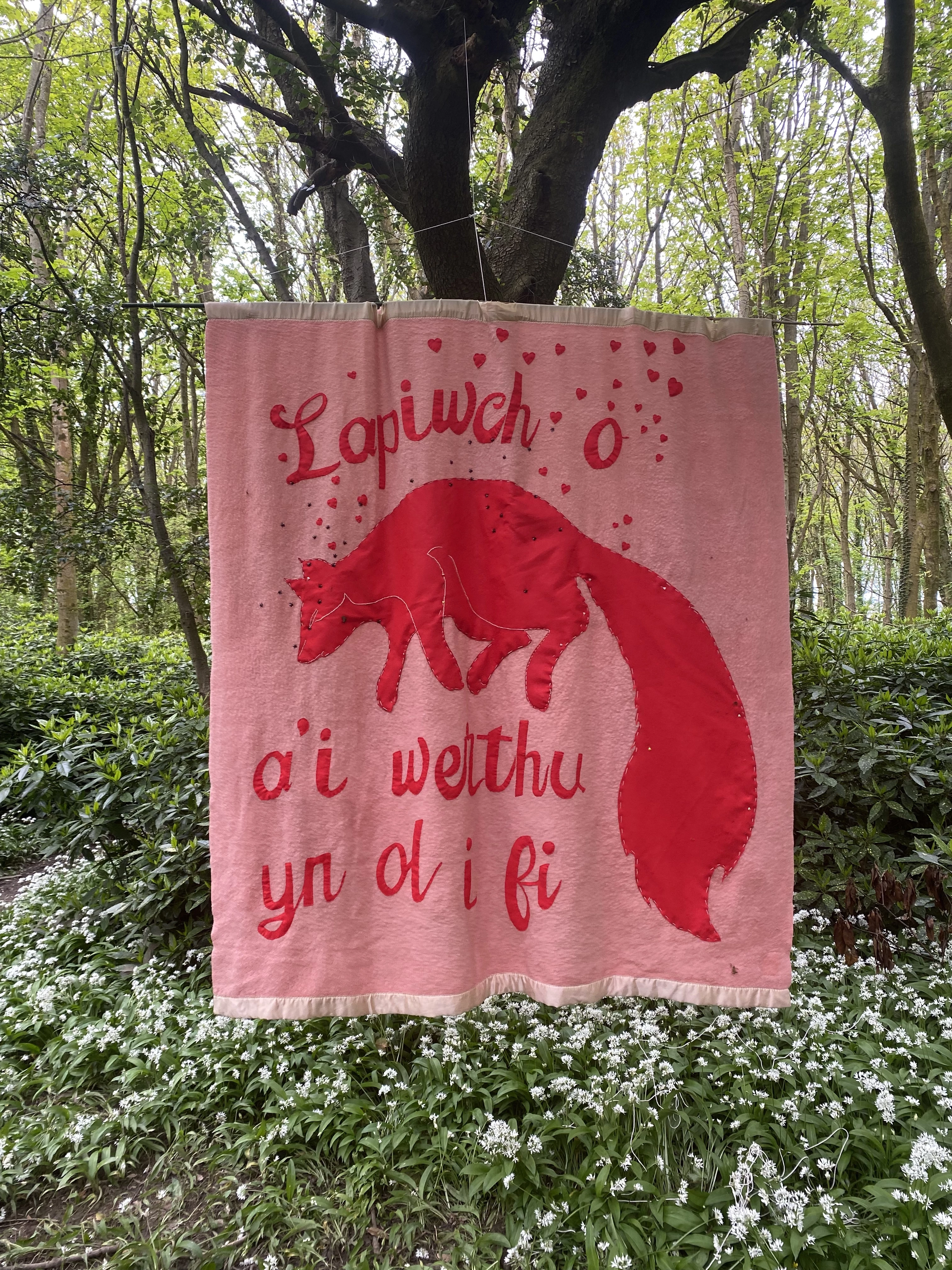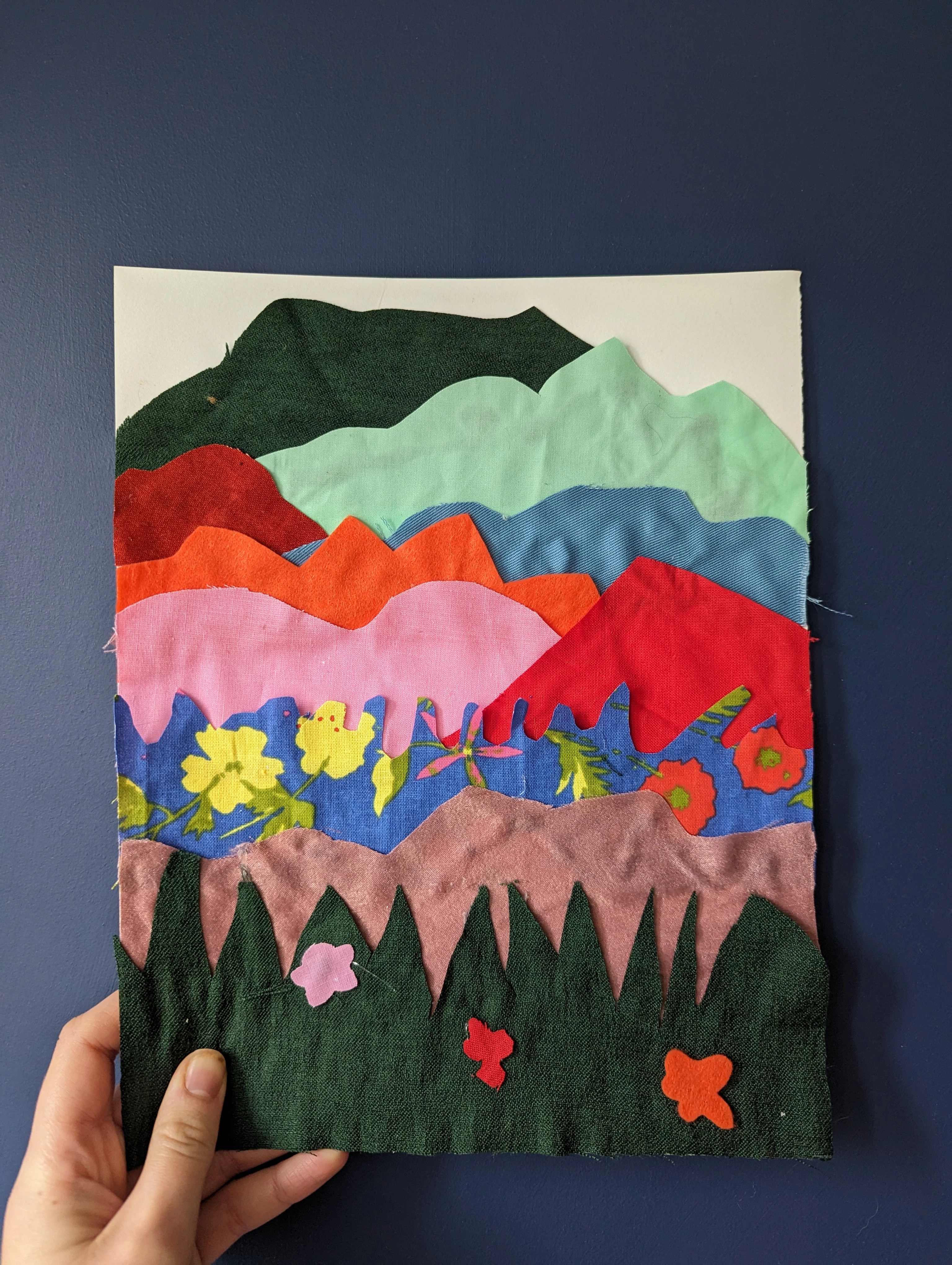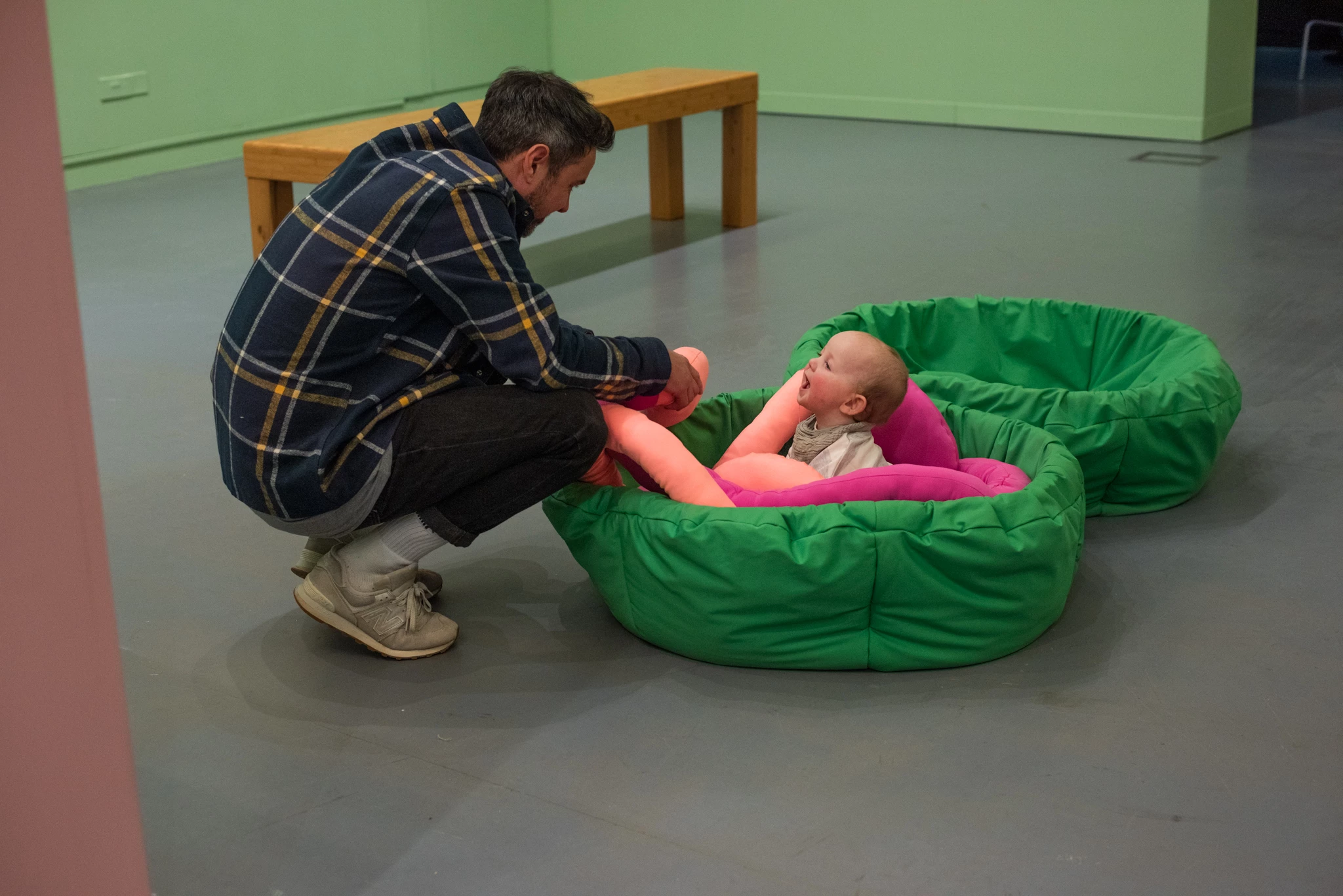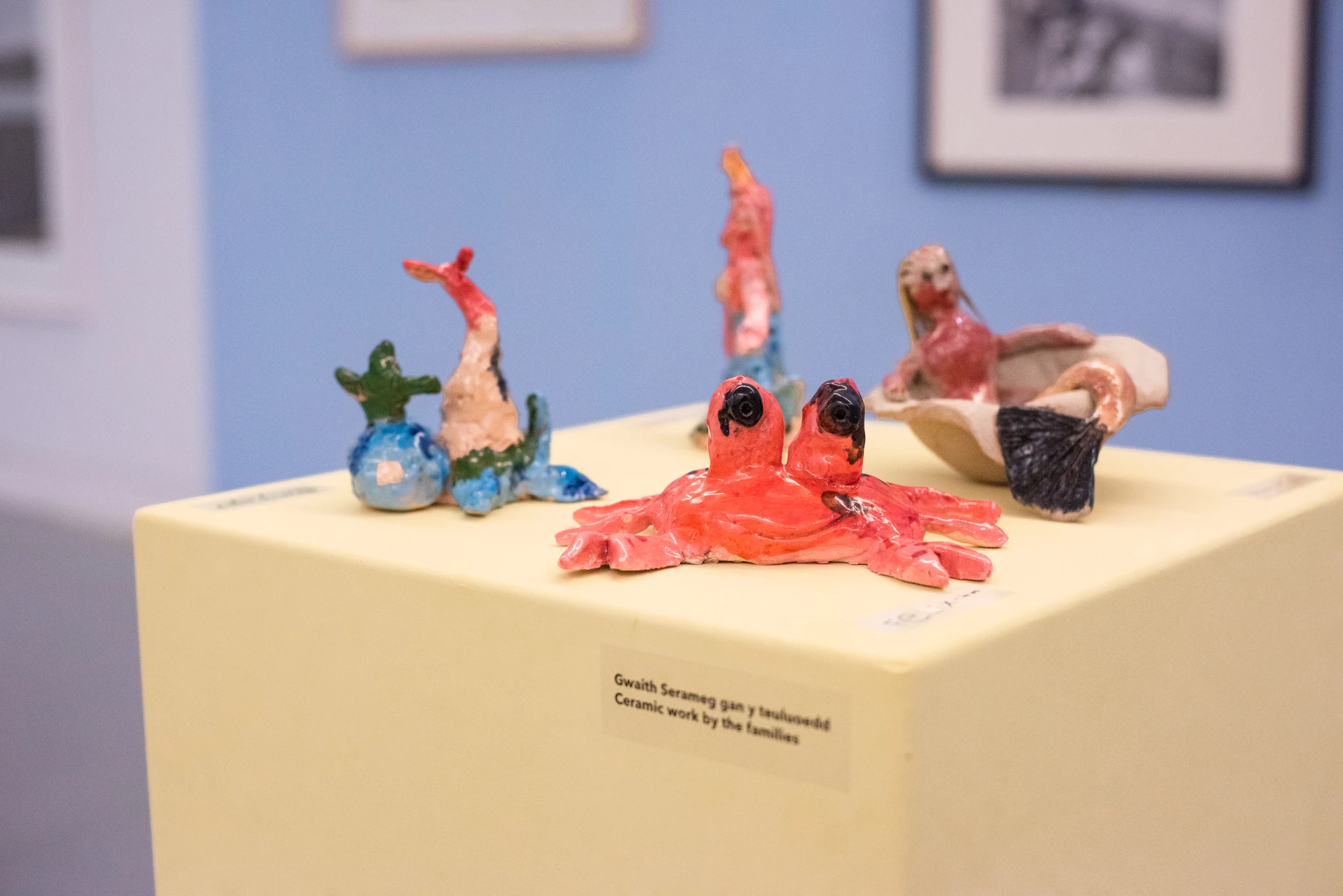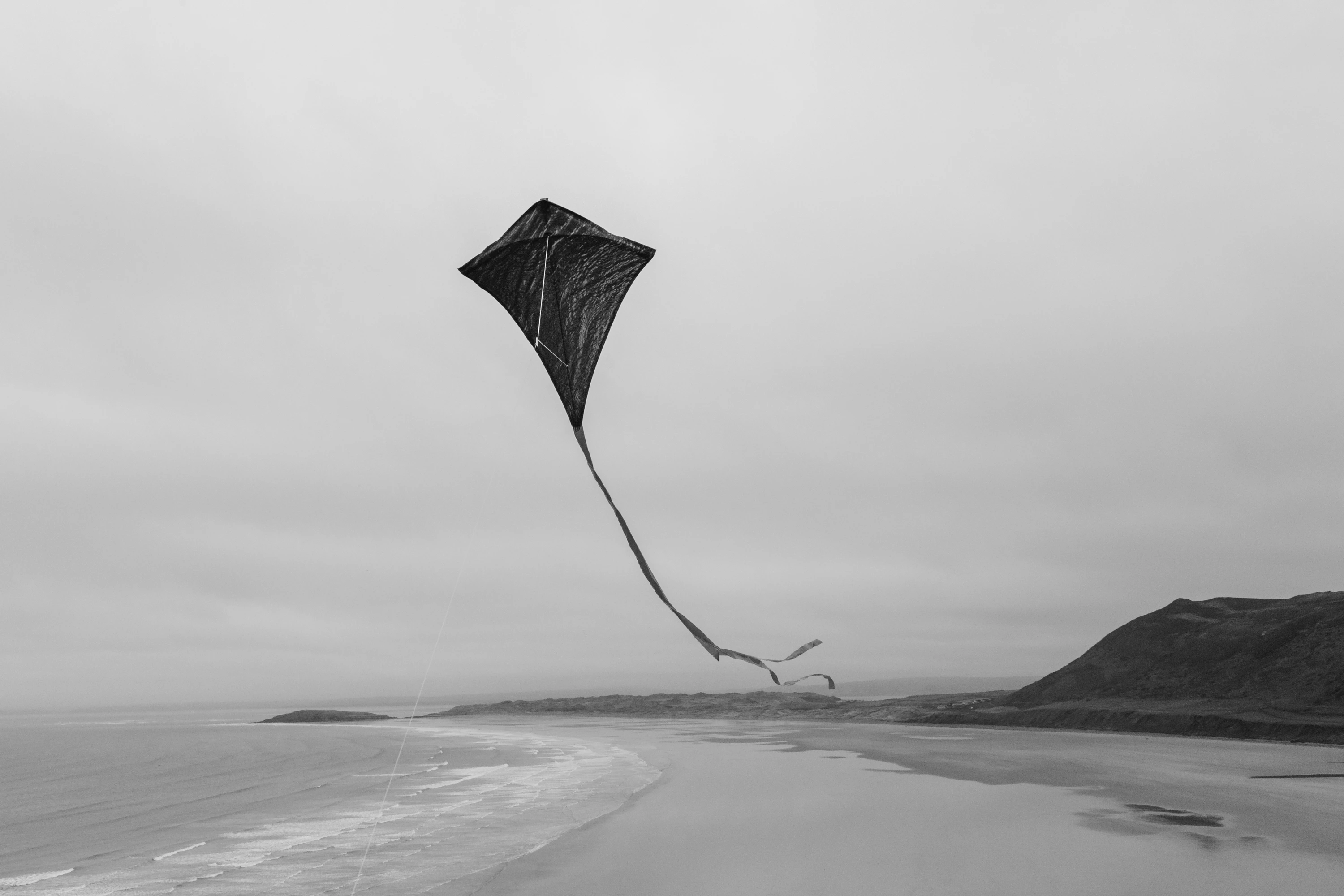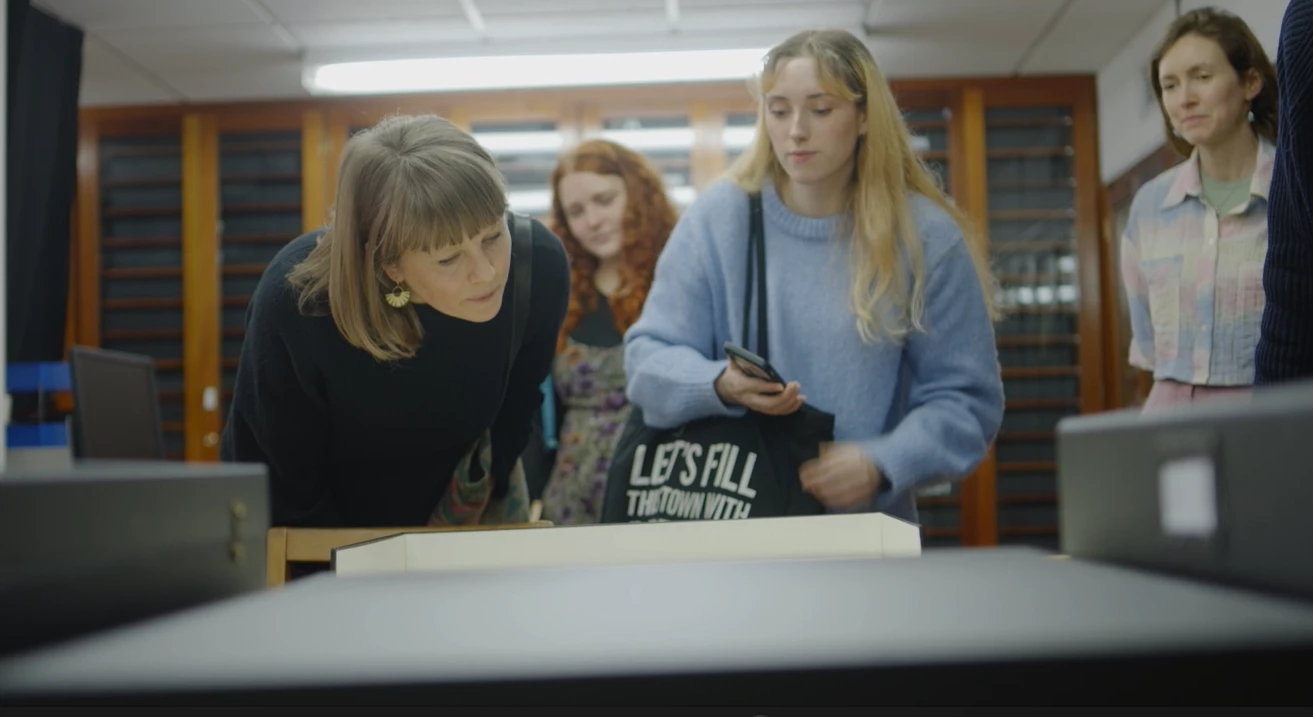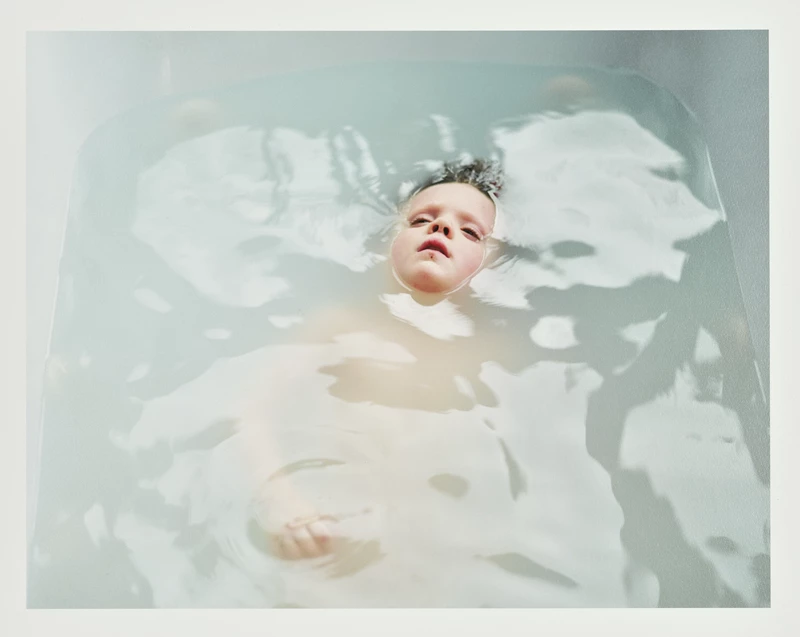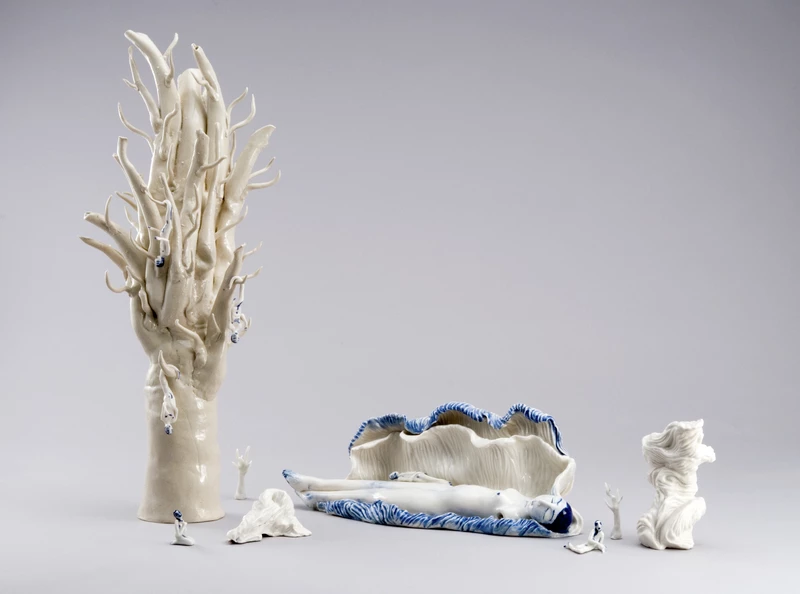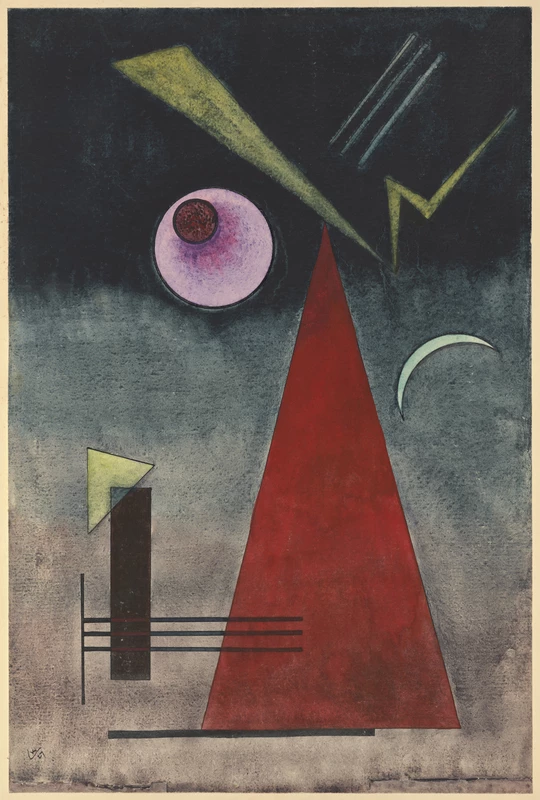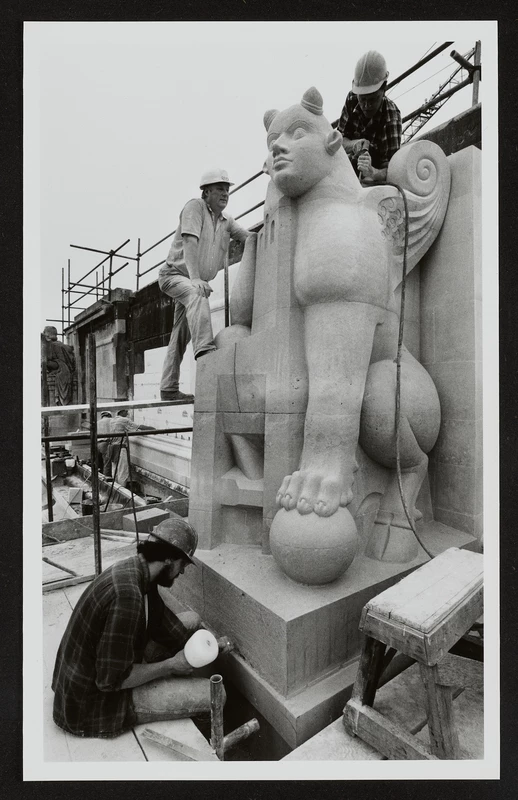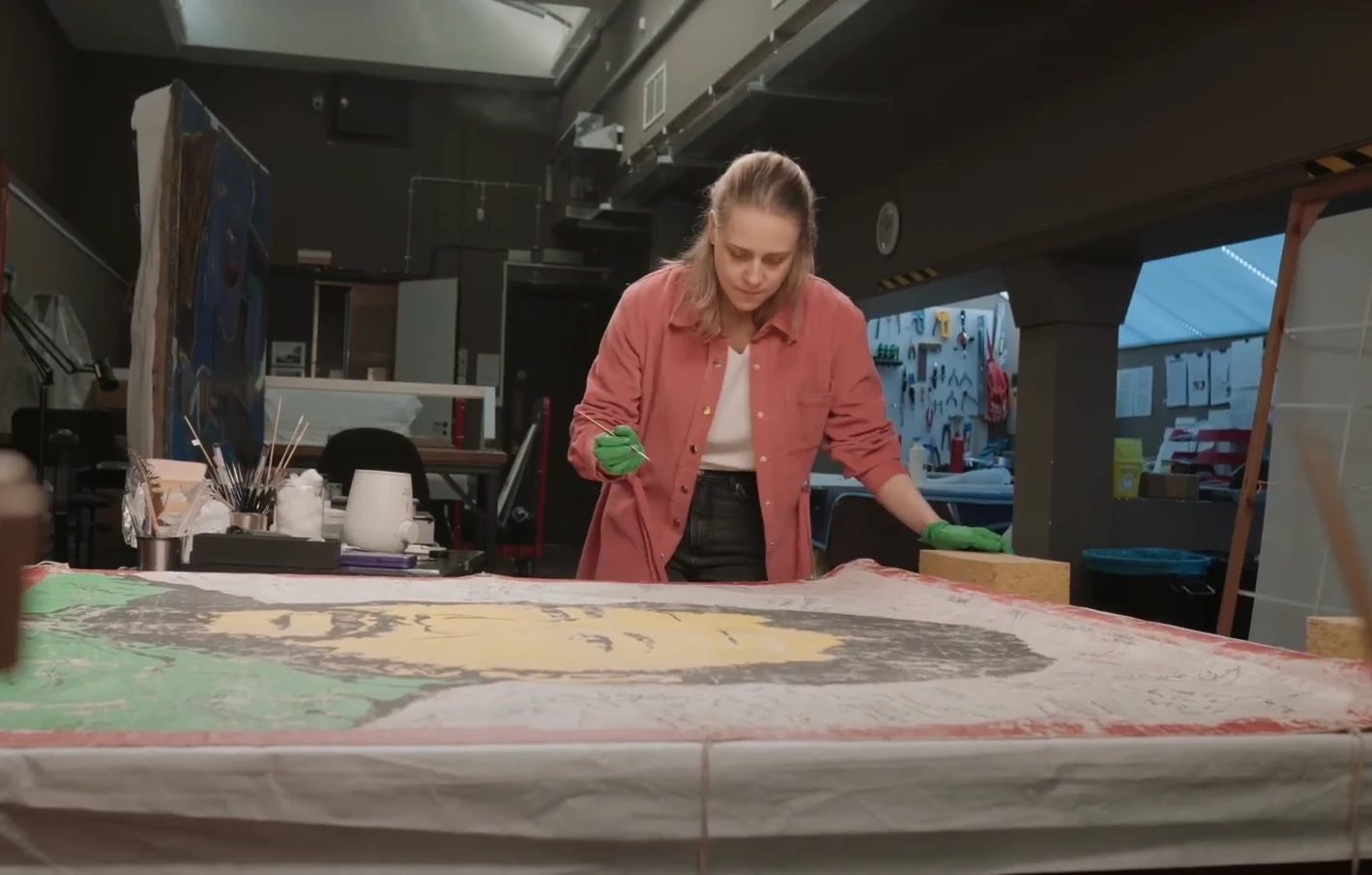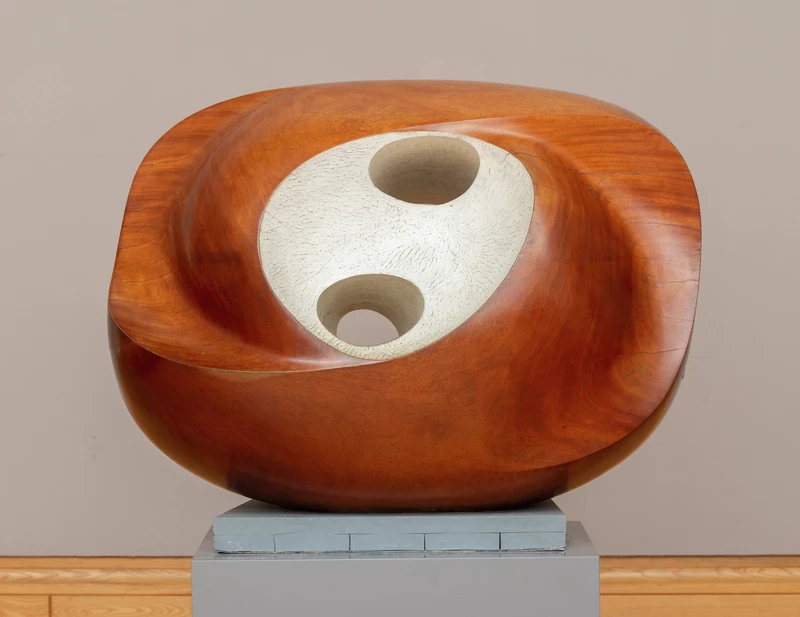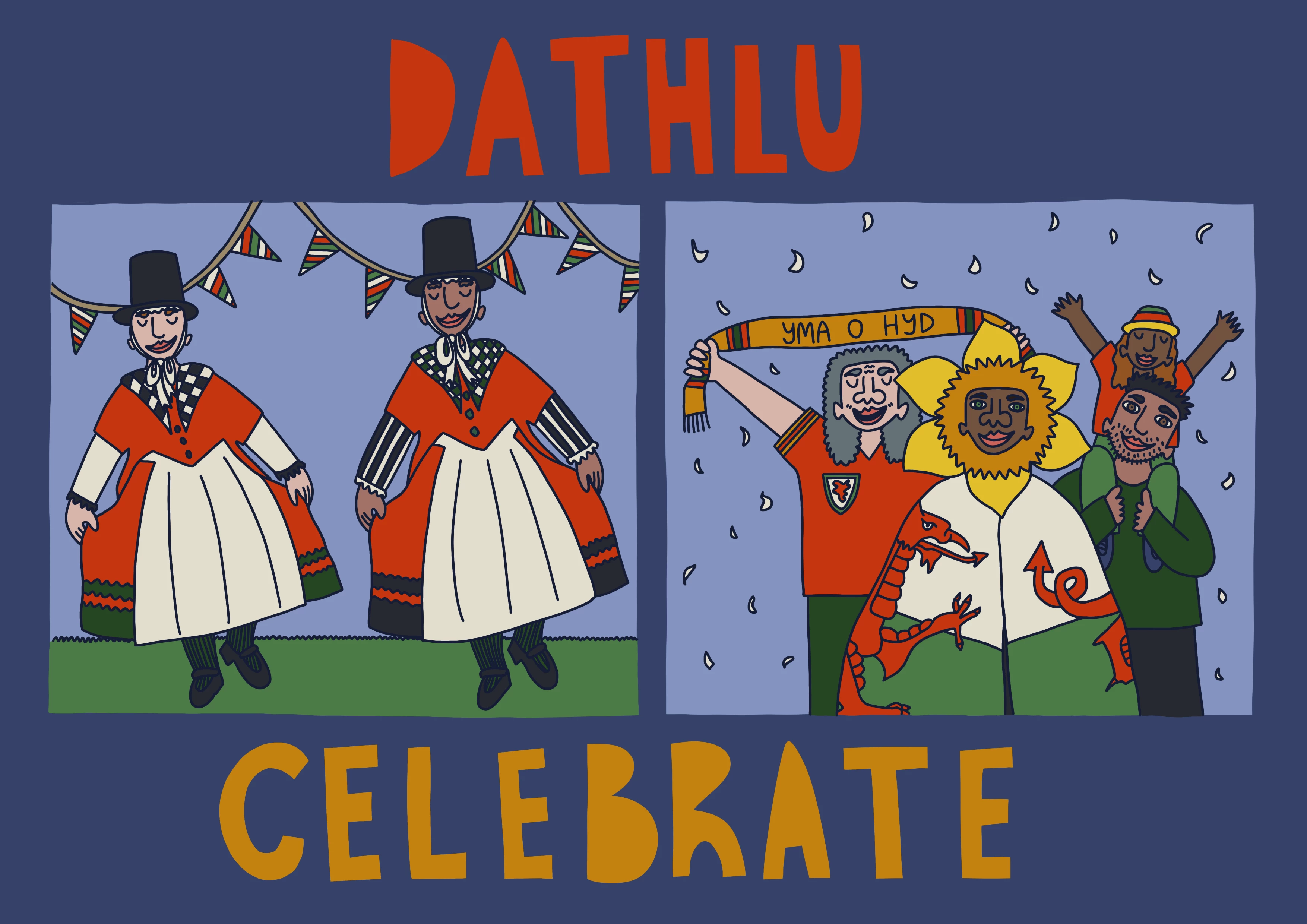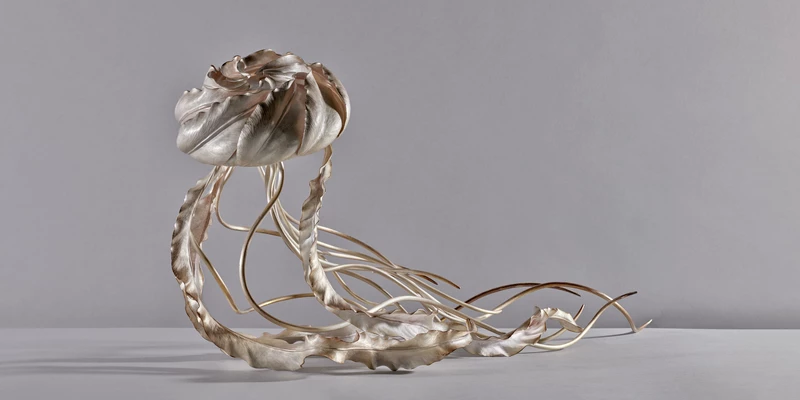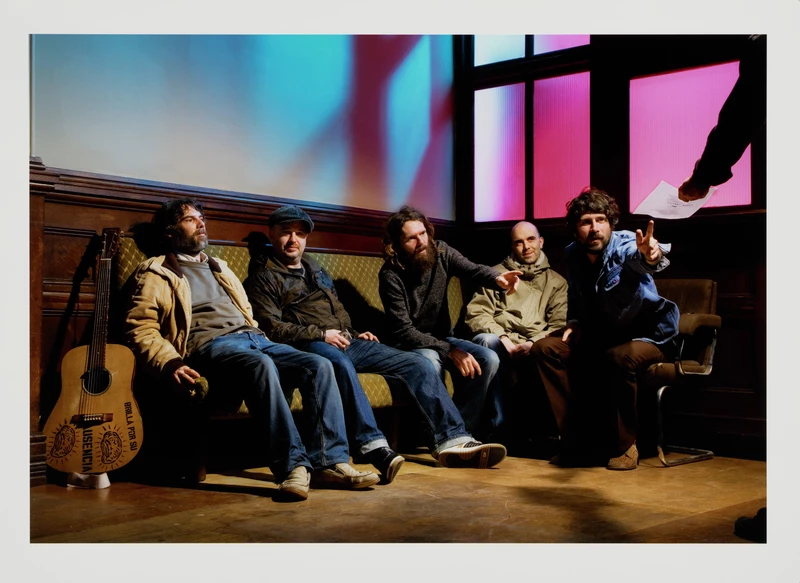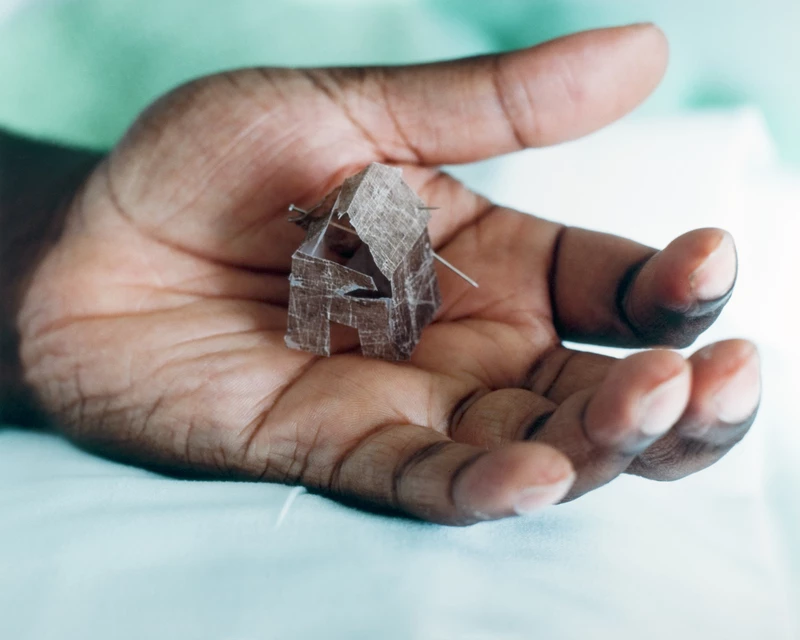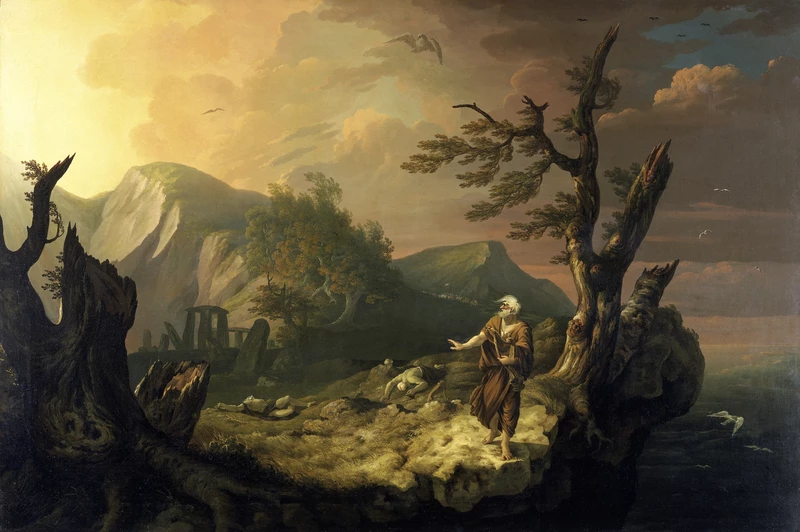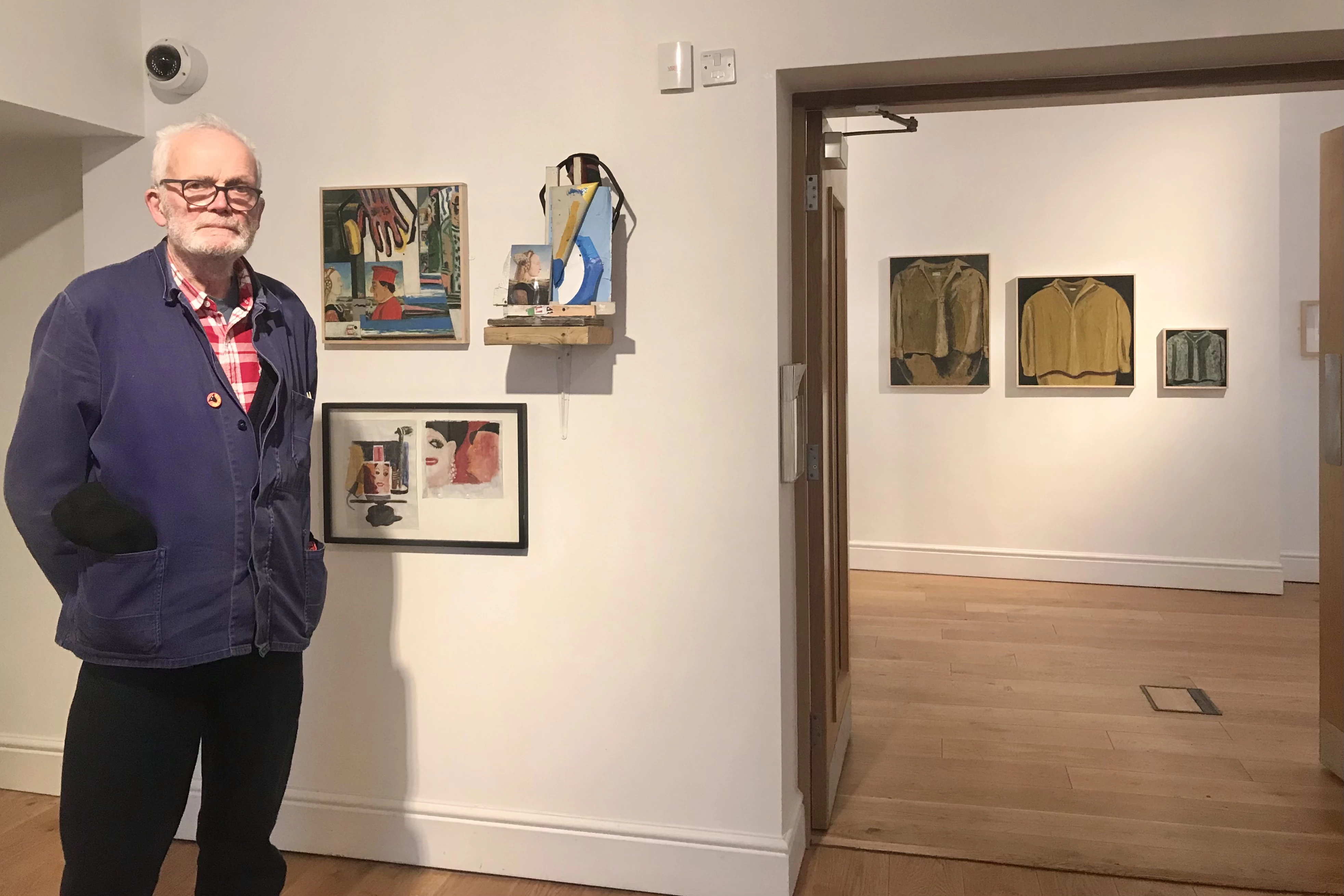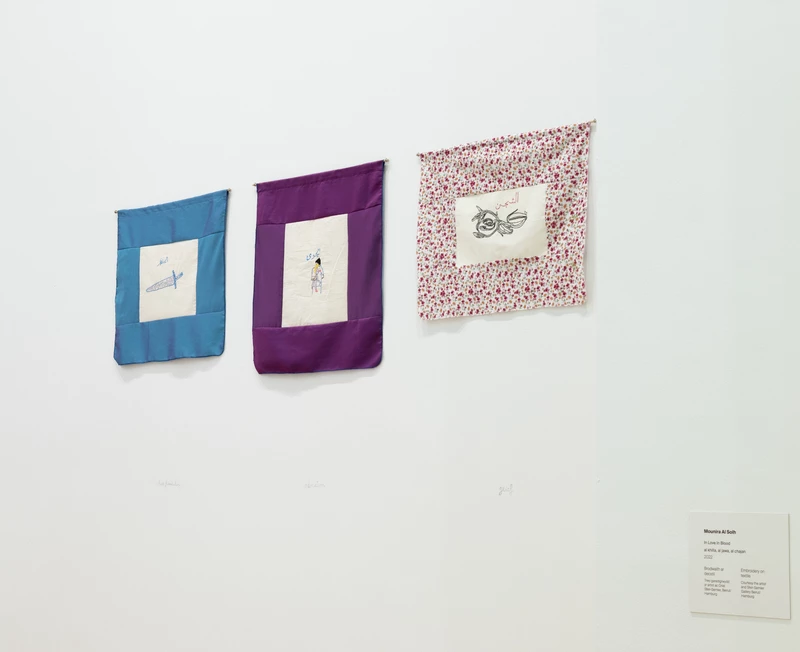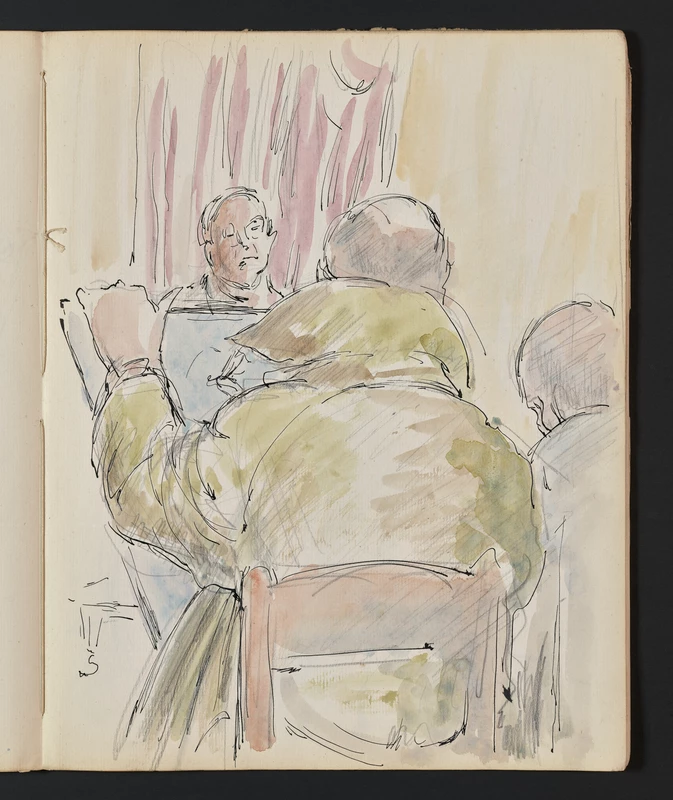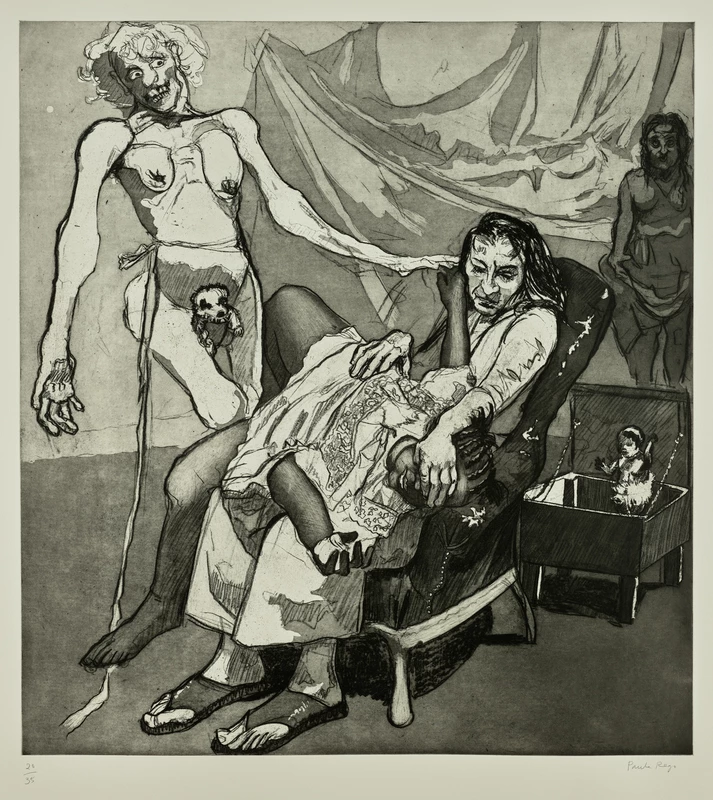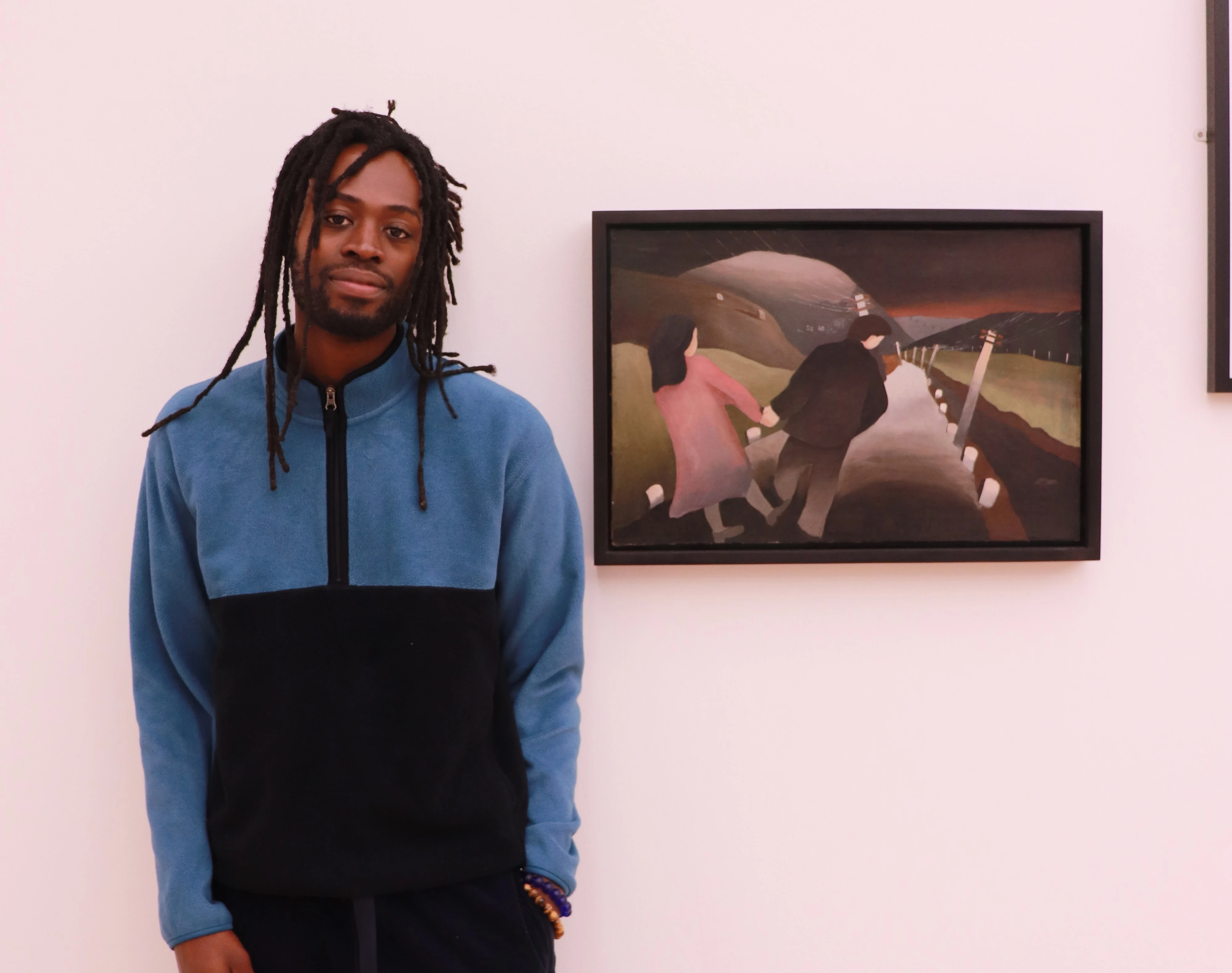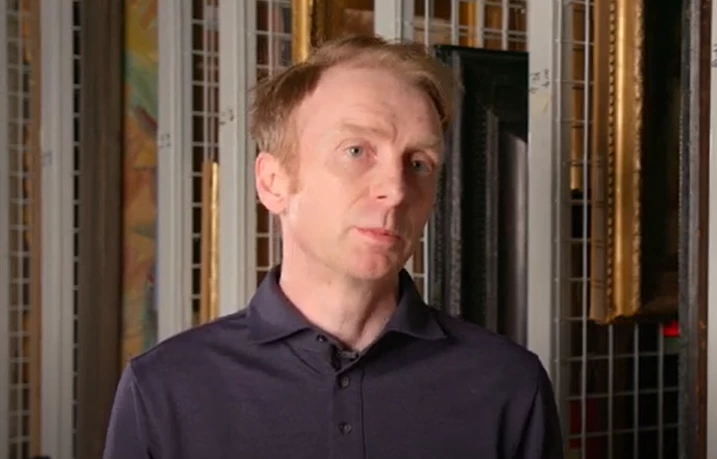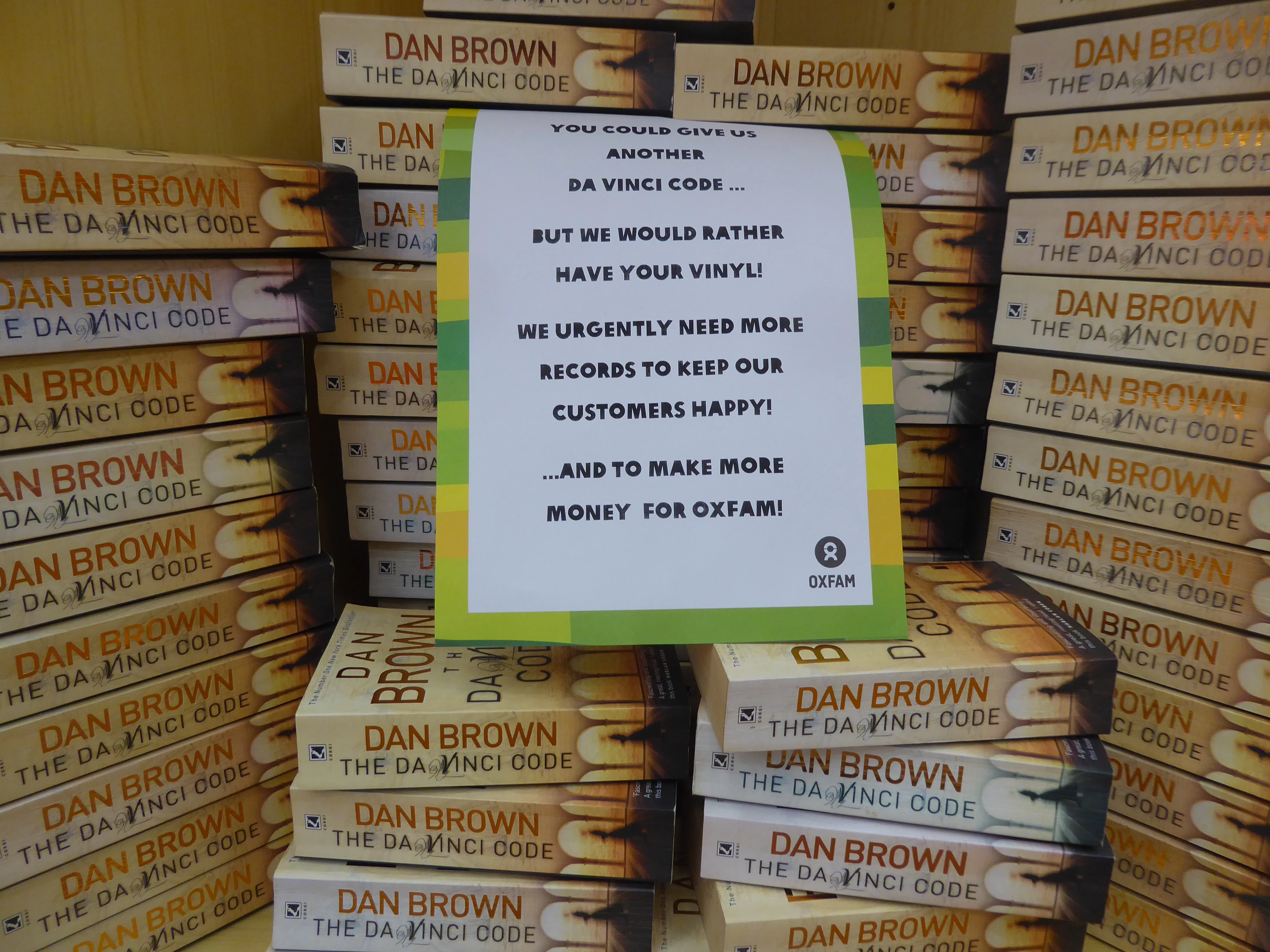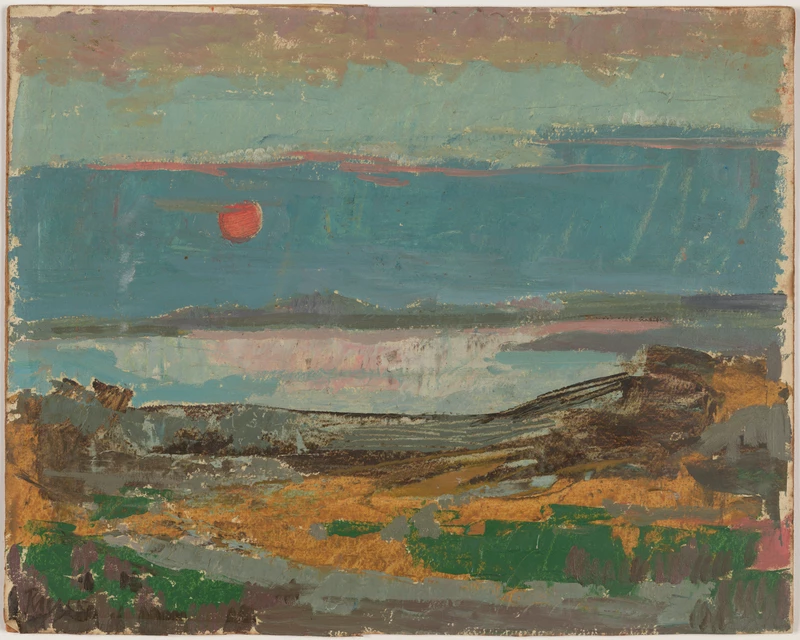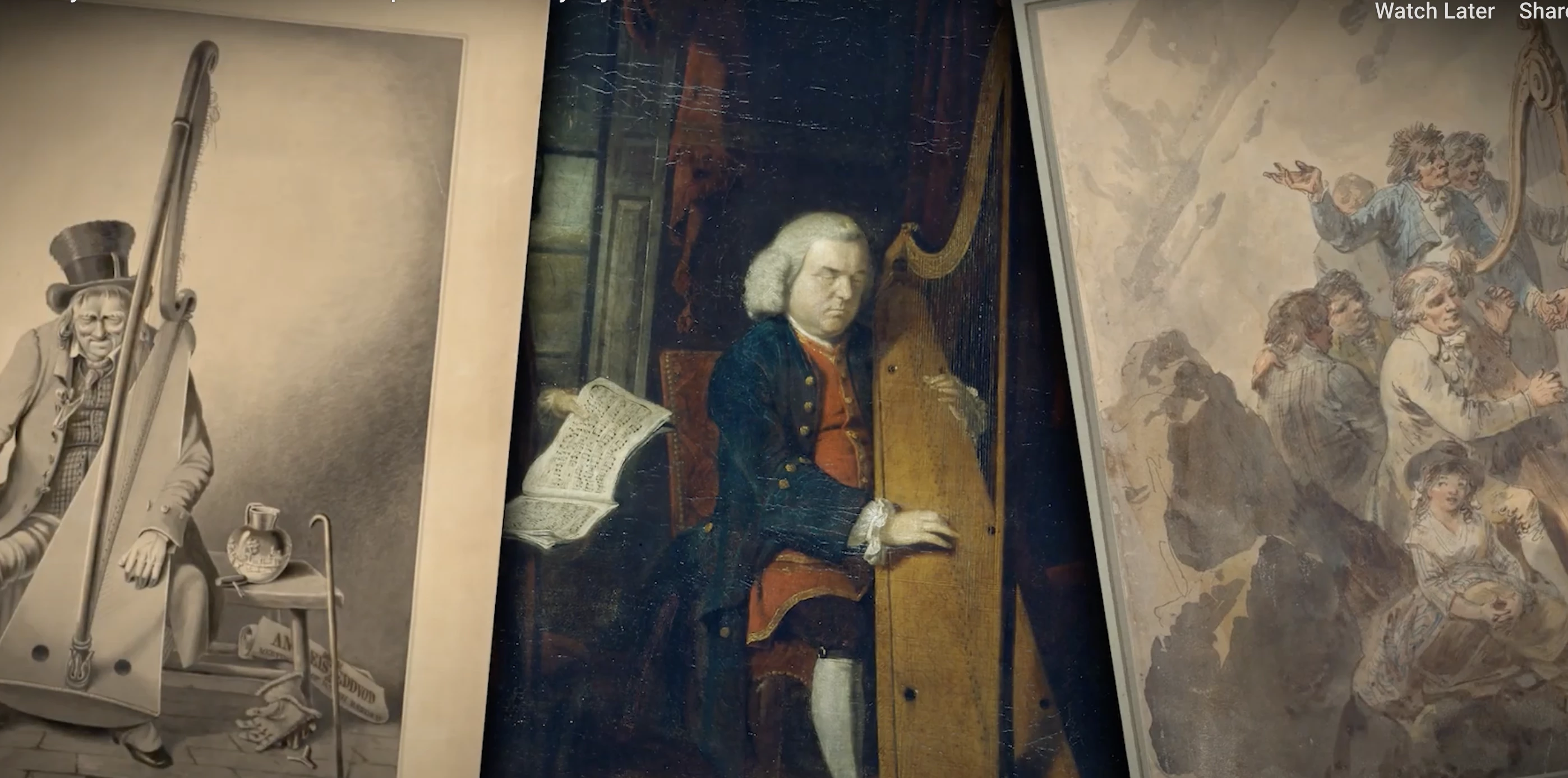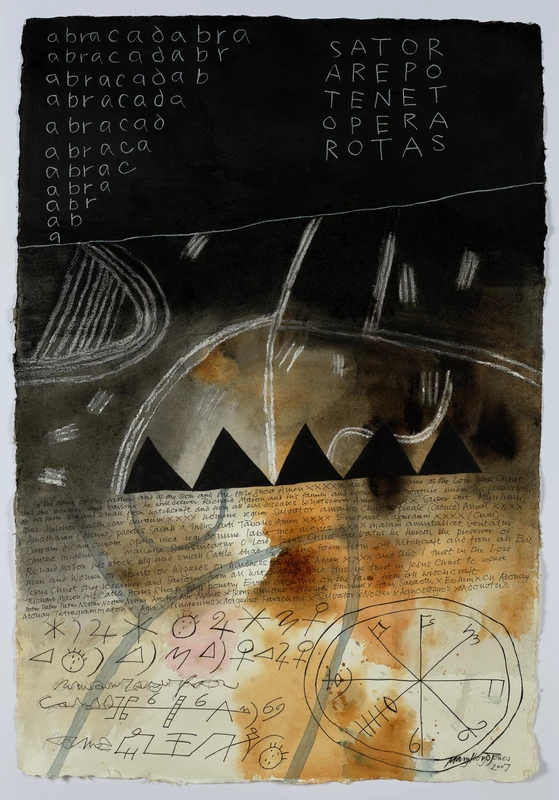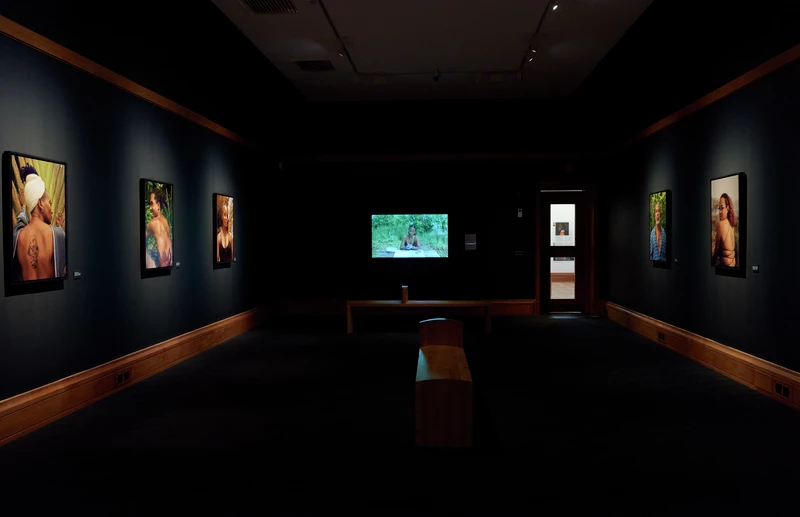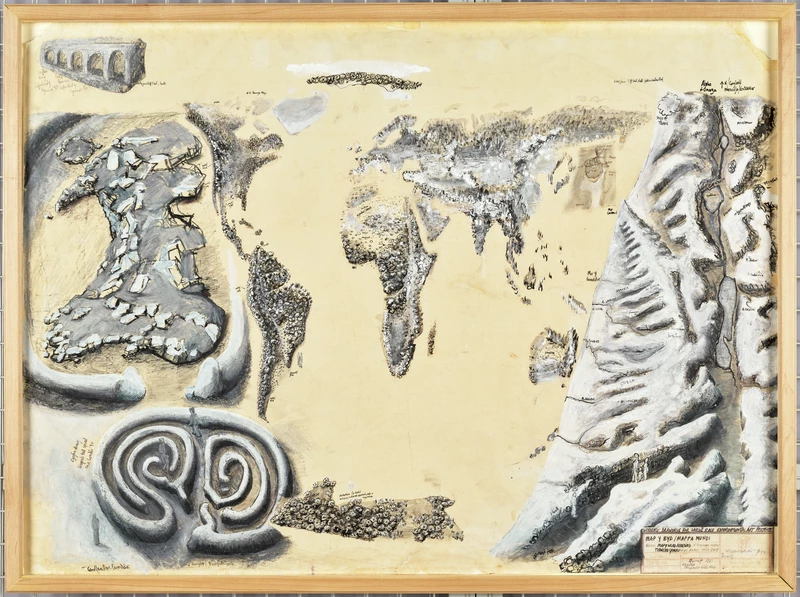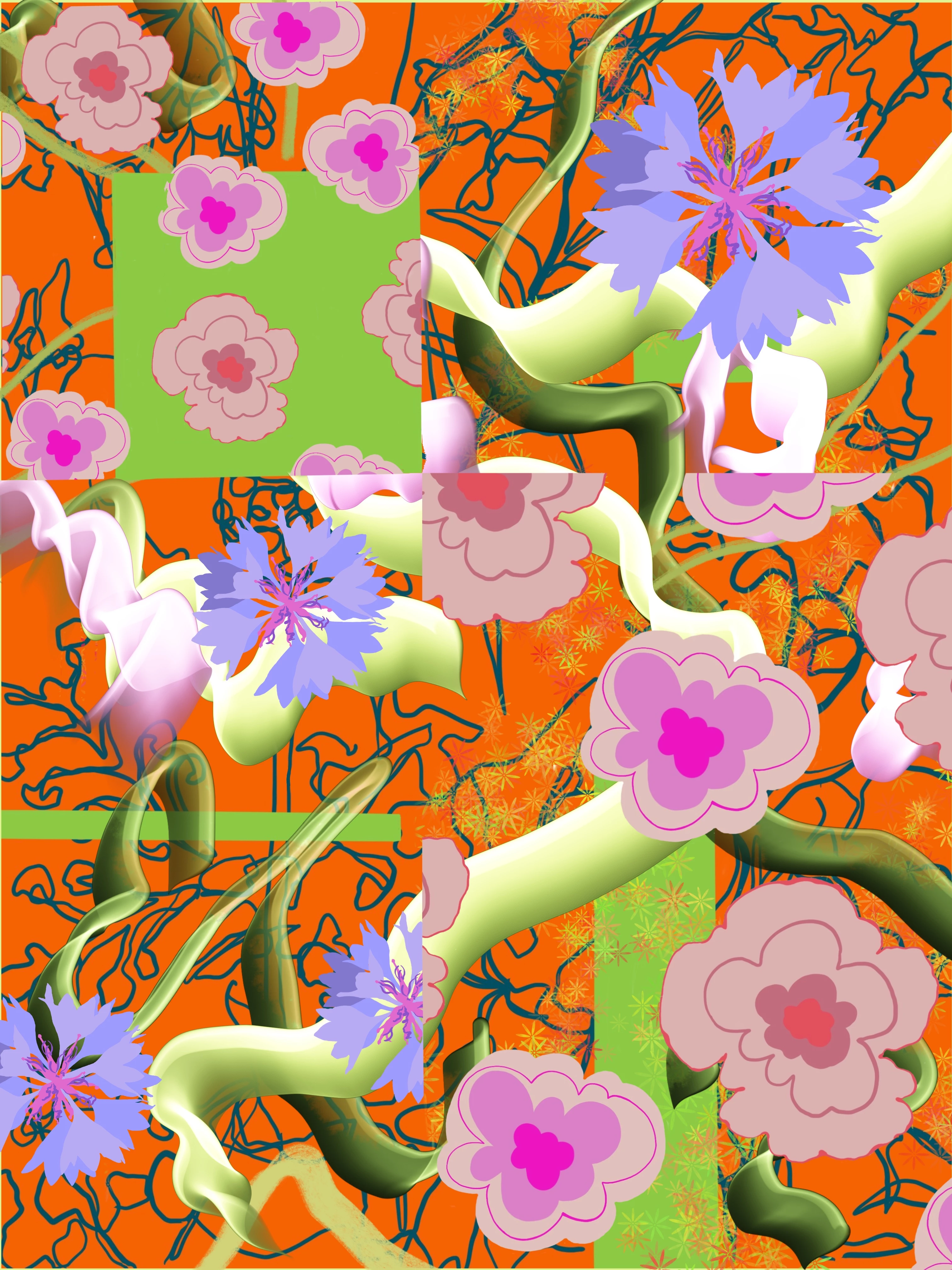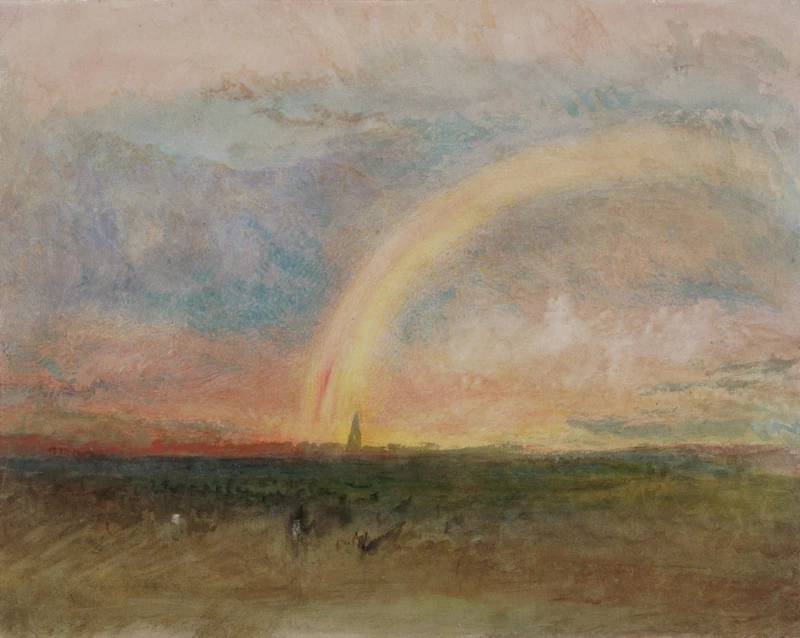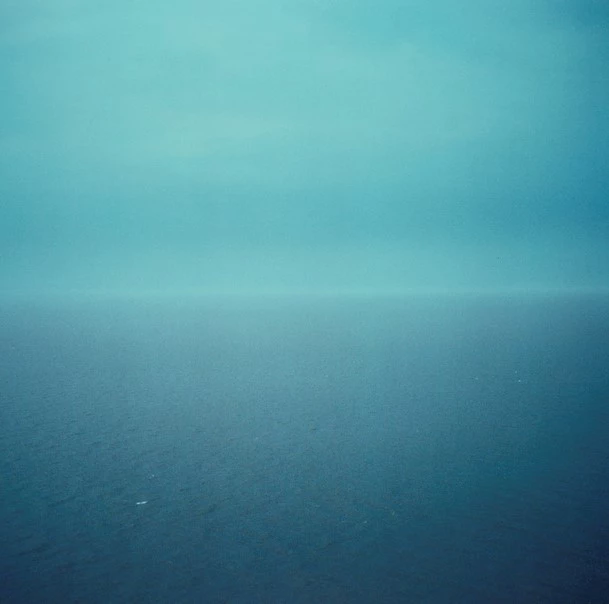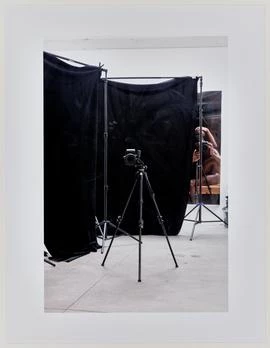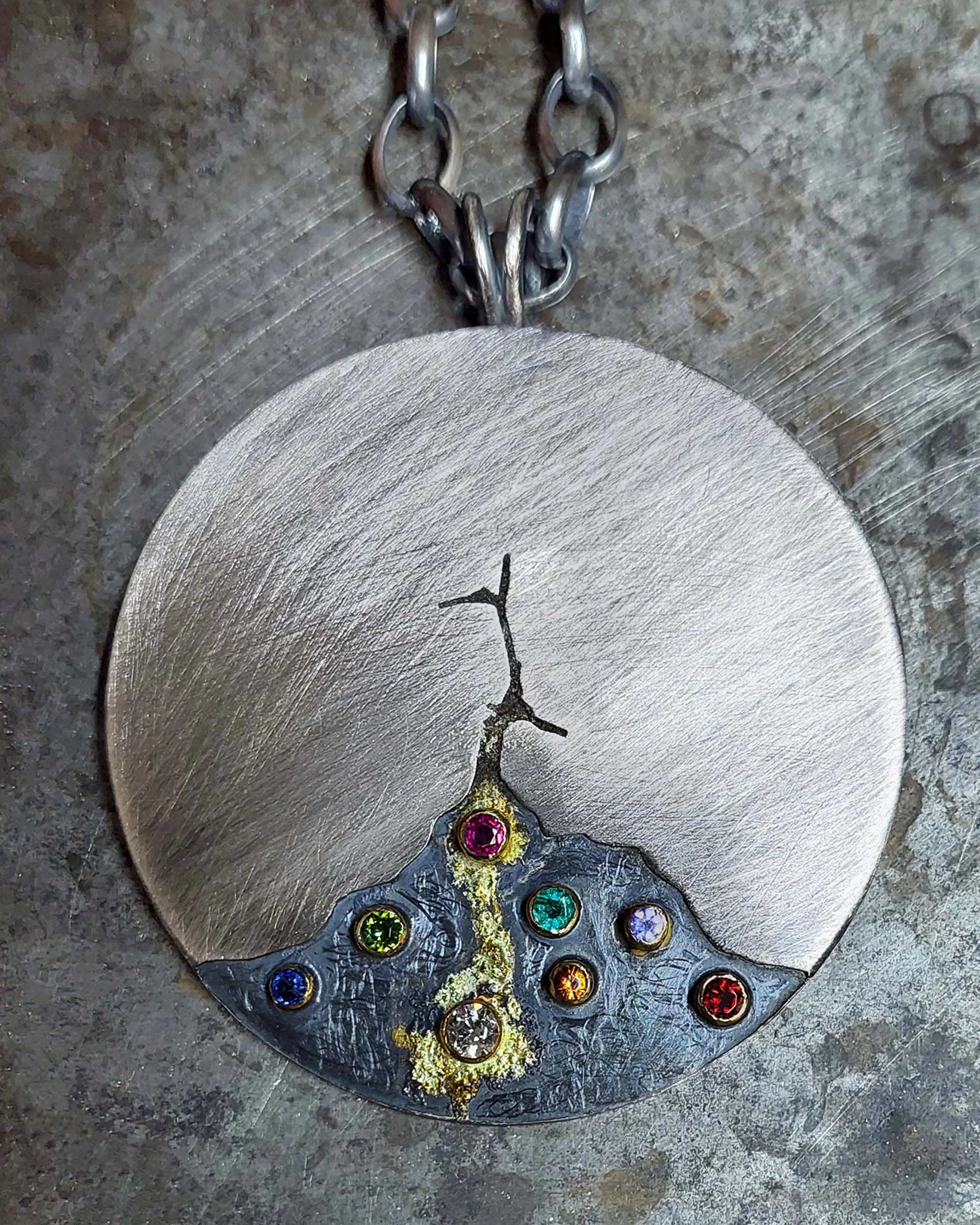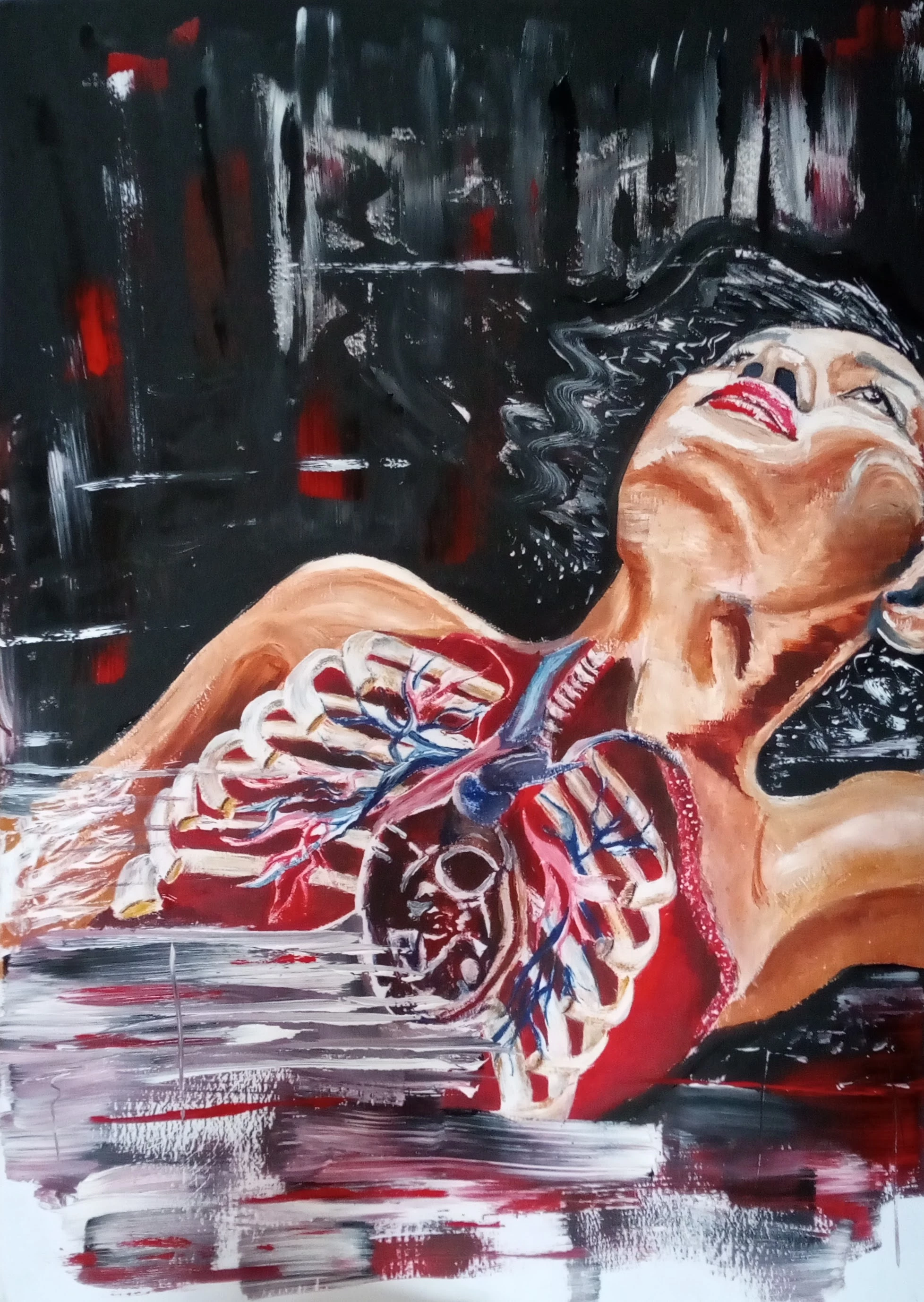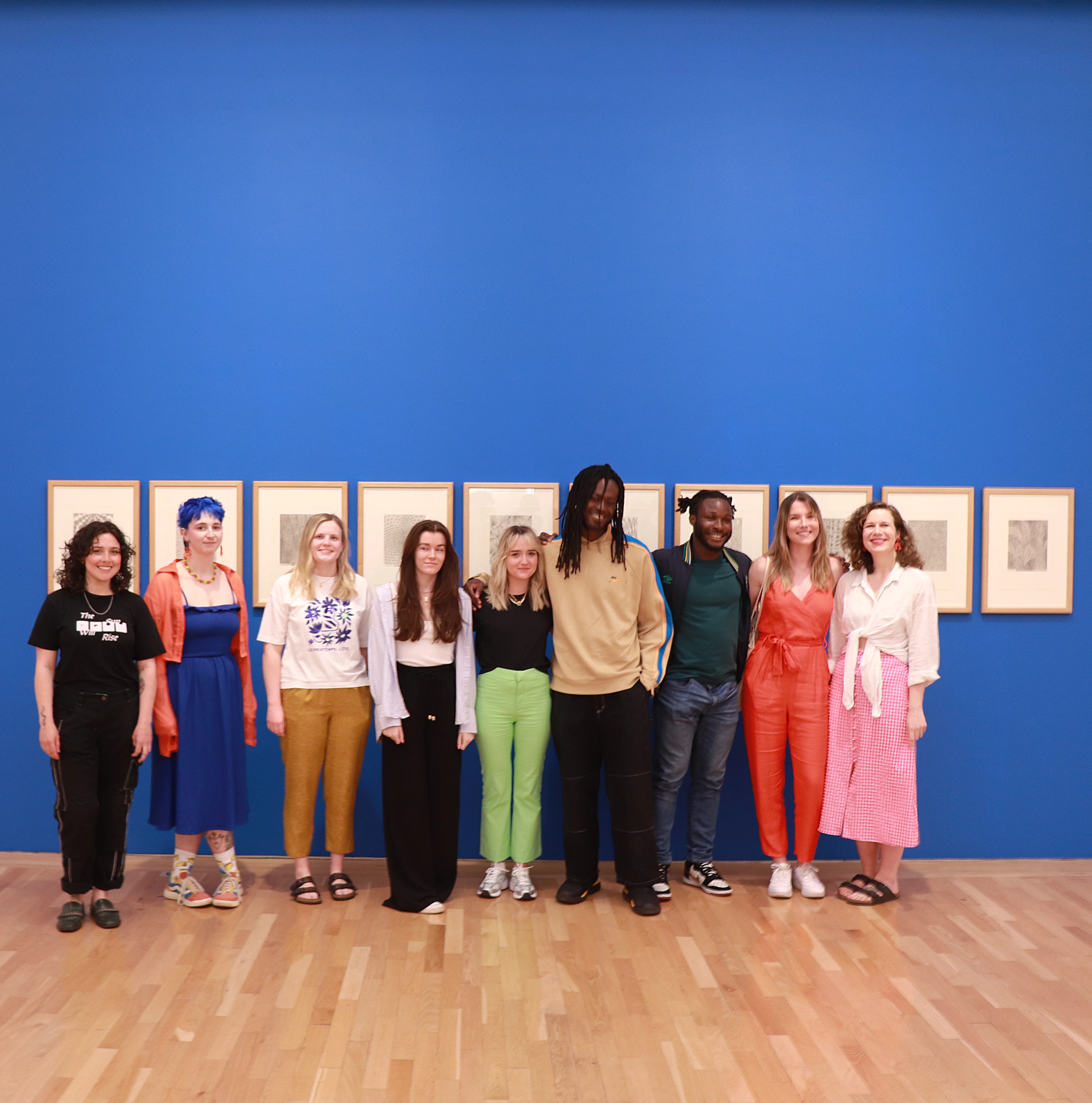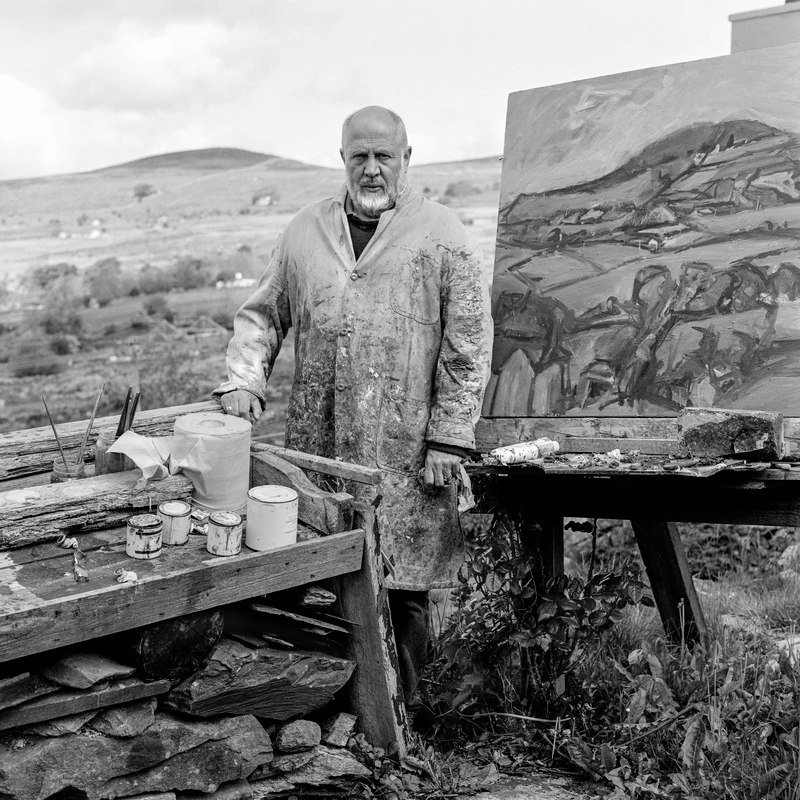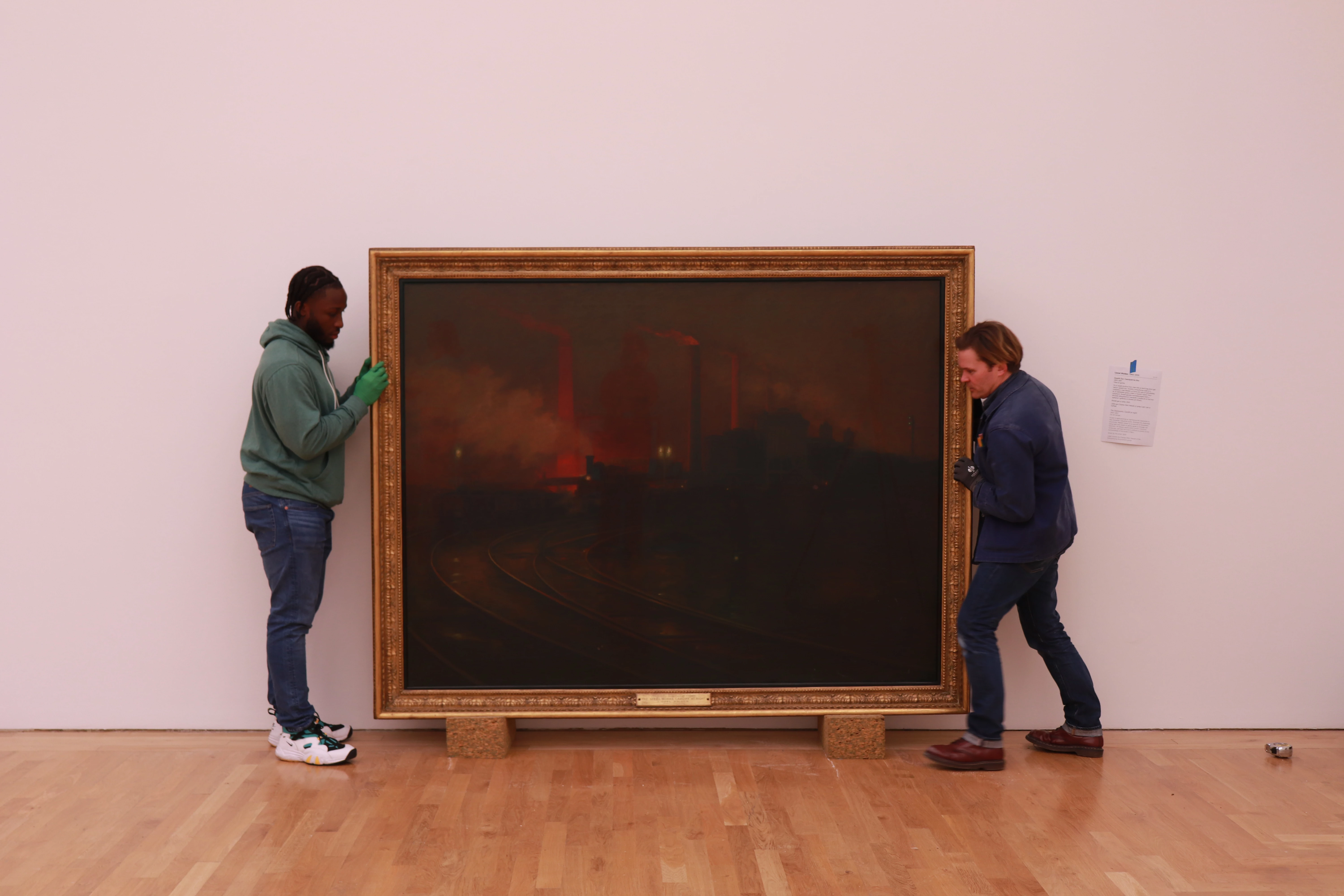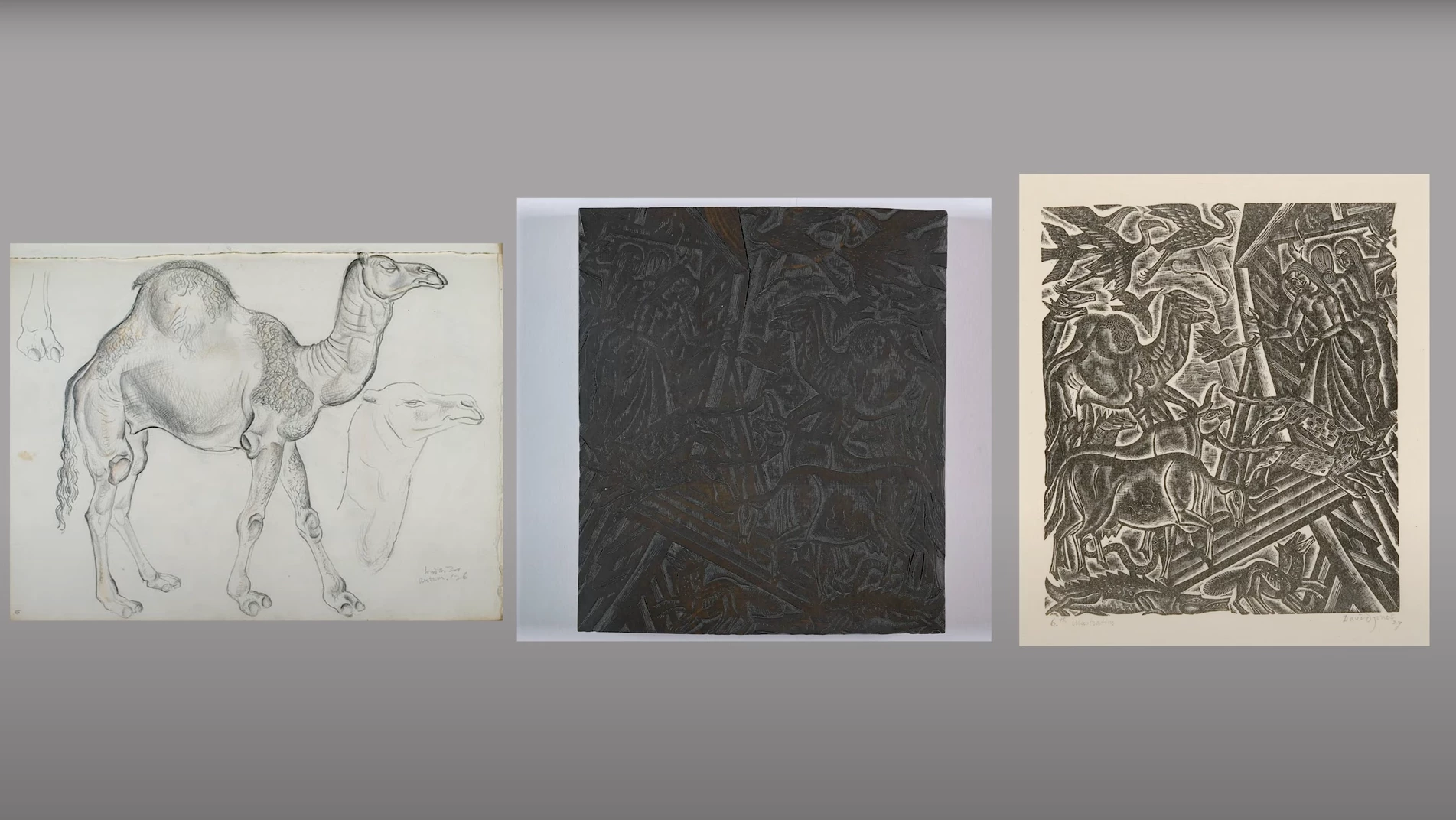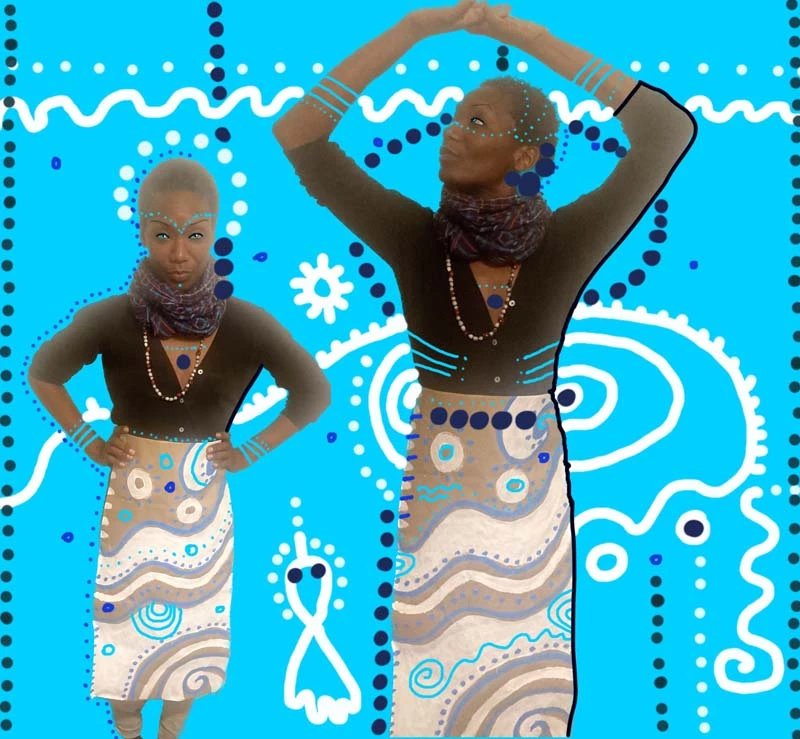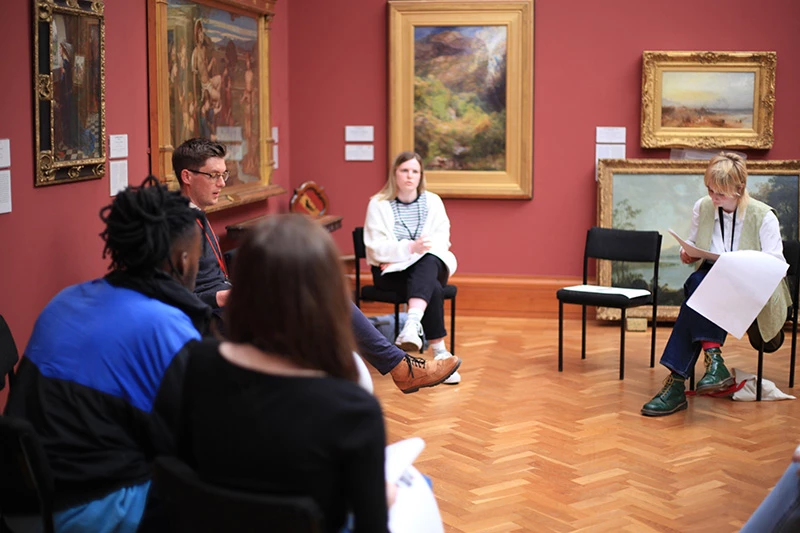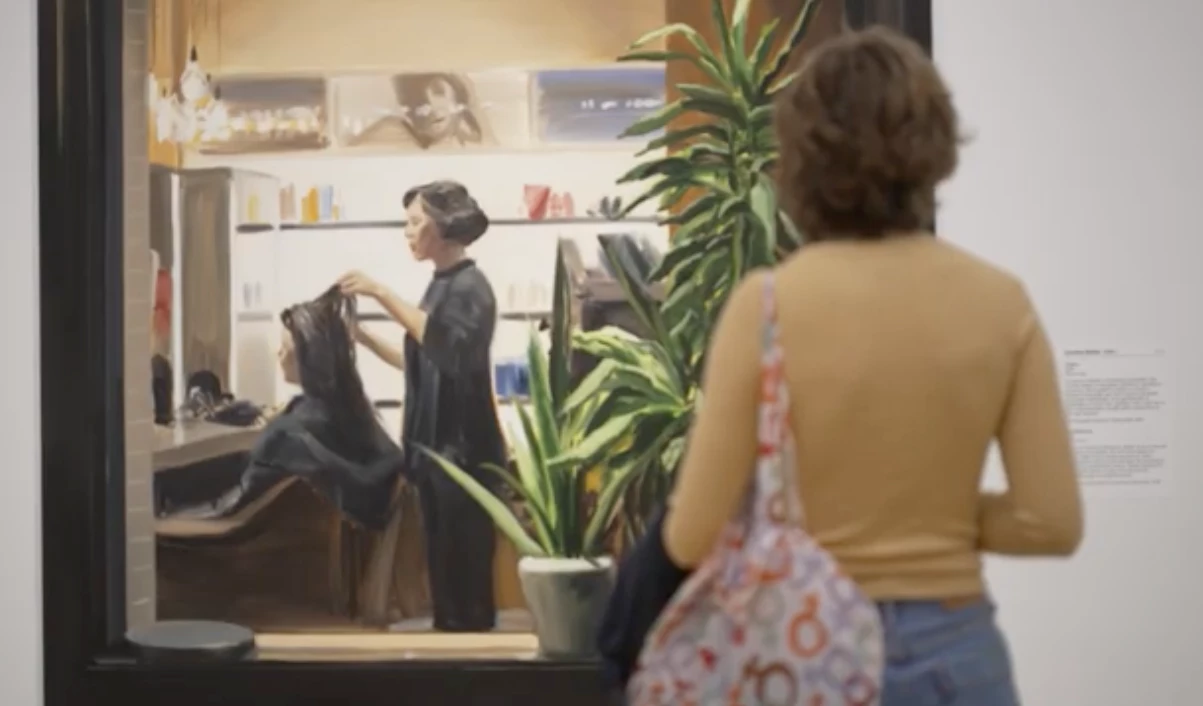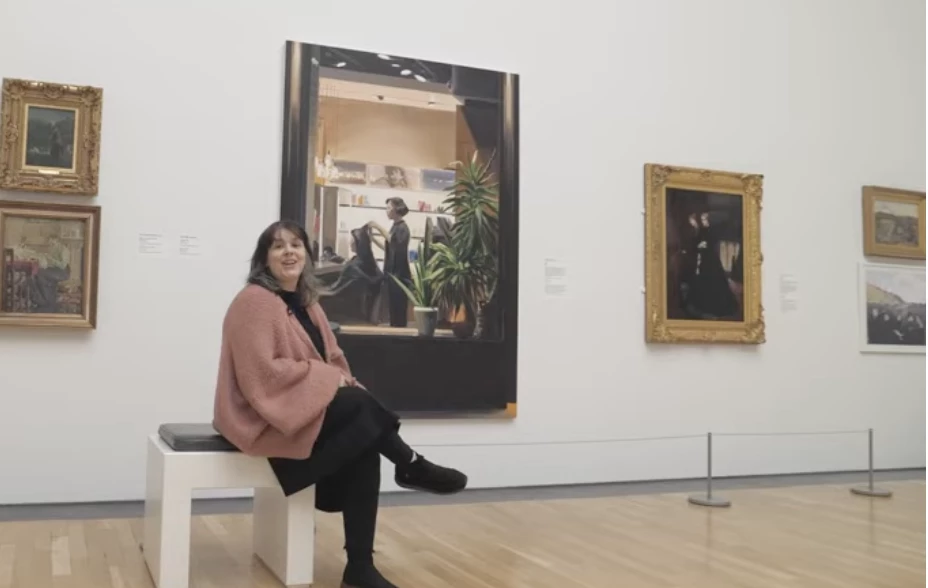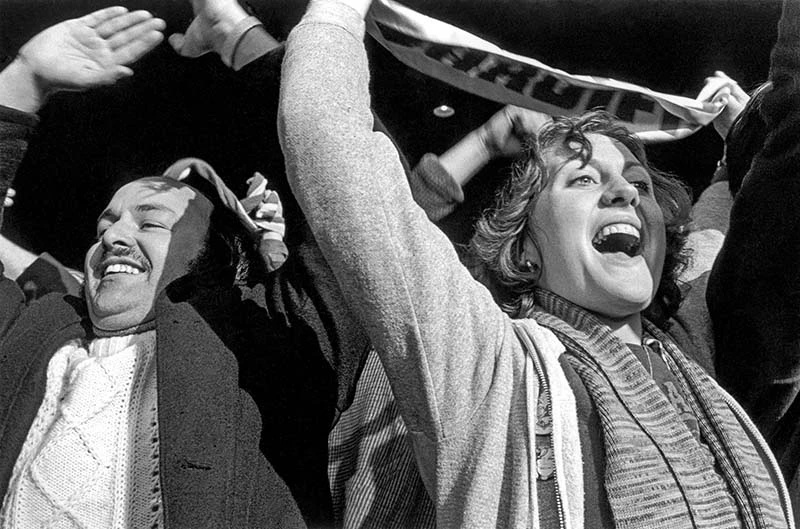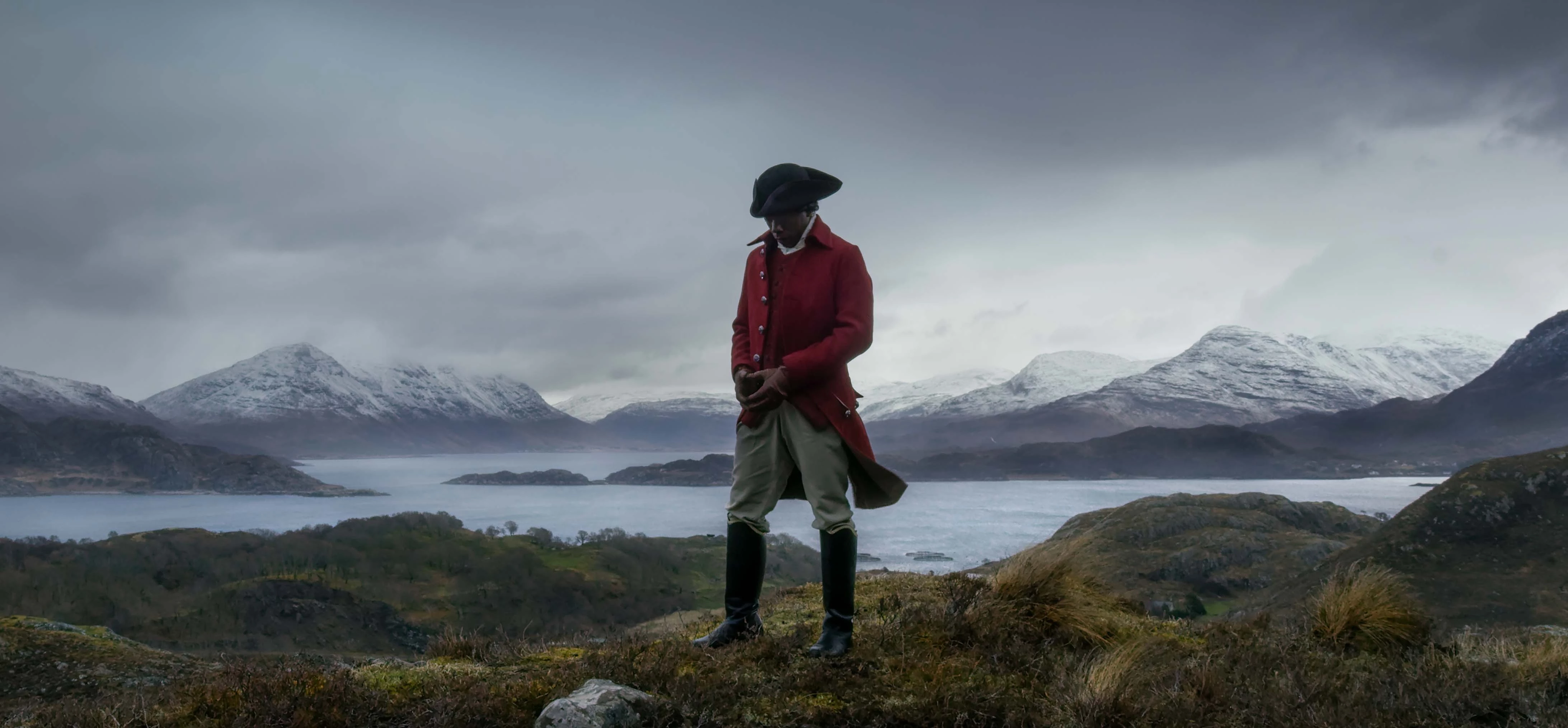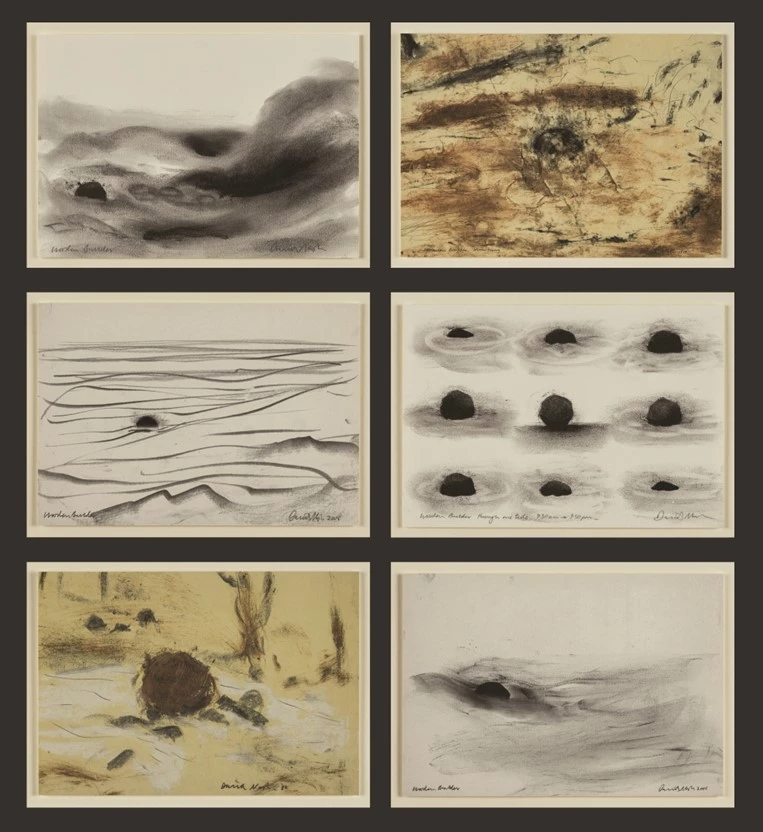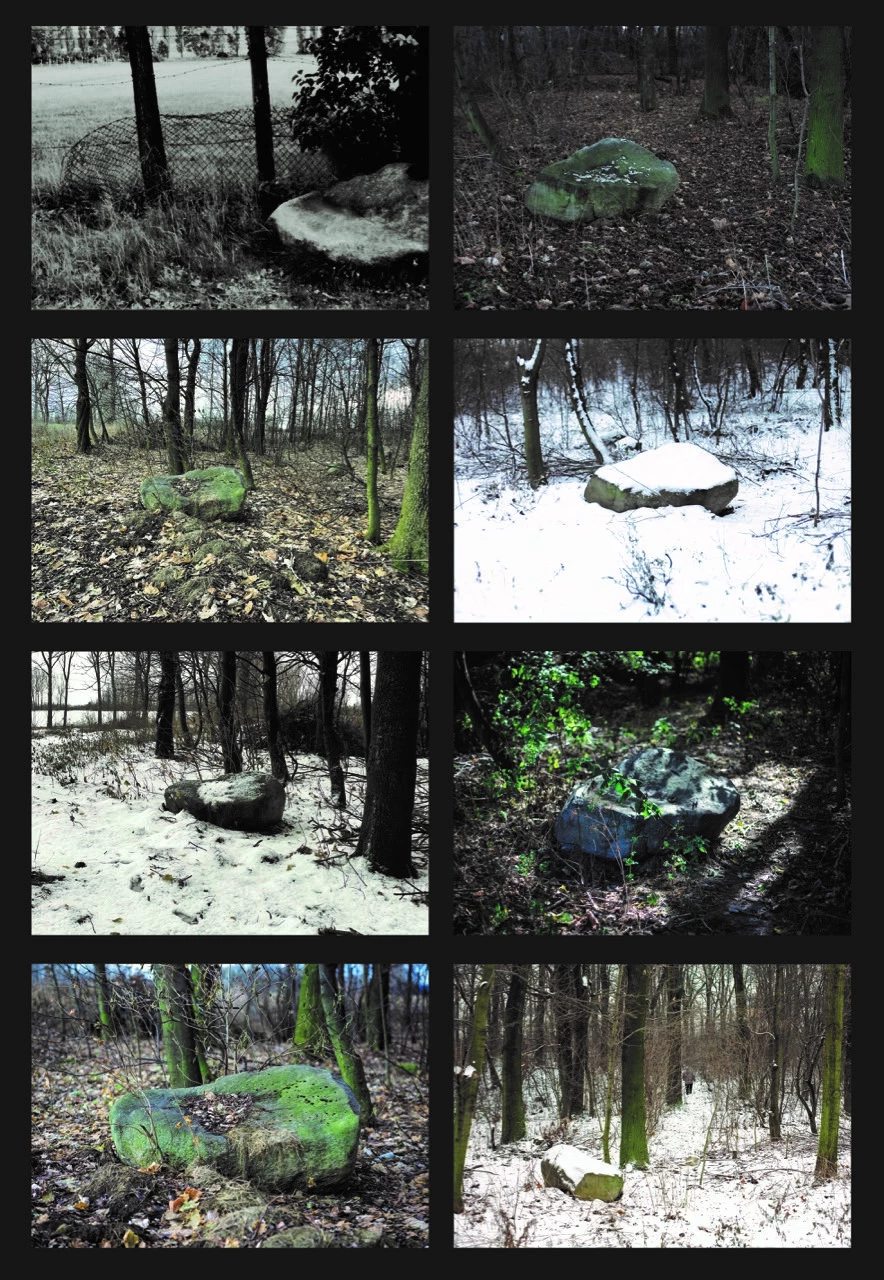NASH, David Nash, Wooden Boulder Series © David Nash. All Rights Reserved. DACS 2025/Amgueddfa Cymru - Museum Wales
David Nash (1945-) lives and works in Blaenau Ffestiniog. That’s where his most unusual ‘free-range sculpture’ was made. Wooden Boulder was carved out of an oak in 1978, and inadvertently embarked on an epic journey down the river Dwyryd, then out into open waters.
For years, David Nash monitored and documented the journey of the boulder, until august 2015, when heavy rains brought about unusually high tides that dislodged the sculpture from what seemed to be its permanent home in the upper end of the Dwyryd estuary. It hasn’t been seen since then, its position in the landscape is yet to be rediscovered.
For this activity I have selected the work of David Nash because I am interested in how landmarks allow each of us to feel familiarity within our environment and connection to it. Be it a boulder you’re used to seeing every day, a tree, a lake, or a mountain on the horizon - all kinds of personal landmarks that affirm our belonging and connection to the land.
For me that landmark is a large stone in the village where I grew up, and where I no longer live. It has been there ever since I remember, and whenever I visit my parents, I like to pay my stone a visit, too. It makes me think about my past, friends, about the adventures I had in the surrounding fields and woods, and about the consistency of change. Like David Nash’s boulder, my stone has also changed its location, at the hands of local farmers who moved it out of the way of harvesters a few years ago. The stone now sits at the edge of a forest. You can see the photographs I have taken of it over the years. Each time it looks different, but I recognise it without fail.
For this activity, I invite you to think about your own landmark. Is there anything in your surroundings that immediately makes you feel connected and at home? A natural feature in the landscape? A manmade structure? A scenic view? Maybe a lake where you went fishing with your grandfather? Maybe an old tree you pass by on your way to school?
I invite you to make a documentation of this landmark, at different times, from different angles, in varying weather conditions. By creating a mini portfolio, you will build a portrait of your personal landmark.
Think about ways in which you would like to document it. David Nash used photography and drawings, but you might prefer painting, or writing, or perhaps a mixture of mediums? It is your landmark and you choose how to tell its story.
IWANOWSKI, Michal, Big Rock ©
Michal IwanowskiNow it’s your turn.
Follow these steps:
- Identify your personal landmark.
- Once that is settled, think about how you would like to document it, how to best represent it. Through photographs on your mobile phone or SLR camera? Drawing? Painting? Writing? Sculpting? Whatever the medium, get your kit ready.
- Make a plan of how many visits you will pay to your landmark, and how many times you will document it. Set a realistic goal, perhaps between 4 and 8? Think of how the landmark changes according to light and weather conditions. Plan a morning and an evening visit, a sunny and a dreary day, etc. You may want to do it in the space of a week, or perhaps a much longer period, like the whole year? There is no rush.
- Once you have completed your documentation, think of a way to present it. If it is a set if photographs/drawing/paintings, perhaps a little booklet would be a good idea? It can be made digitally as PDF, or printed. It can also exist online on your Instagram or another platform.
- Once finished, you will need a camera (you can use your phone of course) to photograph your map. It is worth thinking about the photograph before you start making the map – what will be the easiest way to photograph it straight on, from above? If you need help, make sure to ask. Adults are usually quite helpful, especially the tall ones.
- The final step is to share it with us. We are very curious to see your personal landmark
